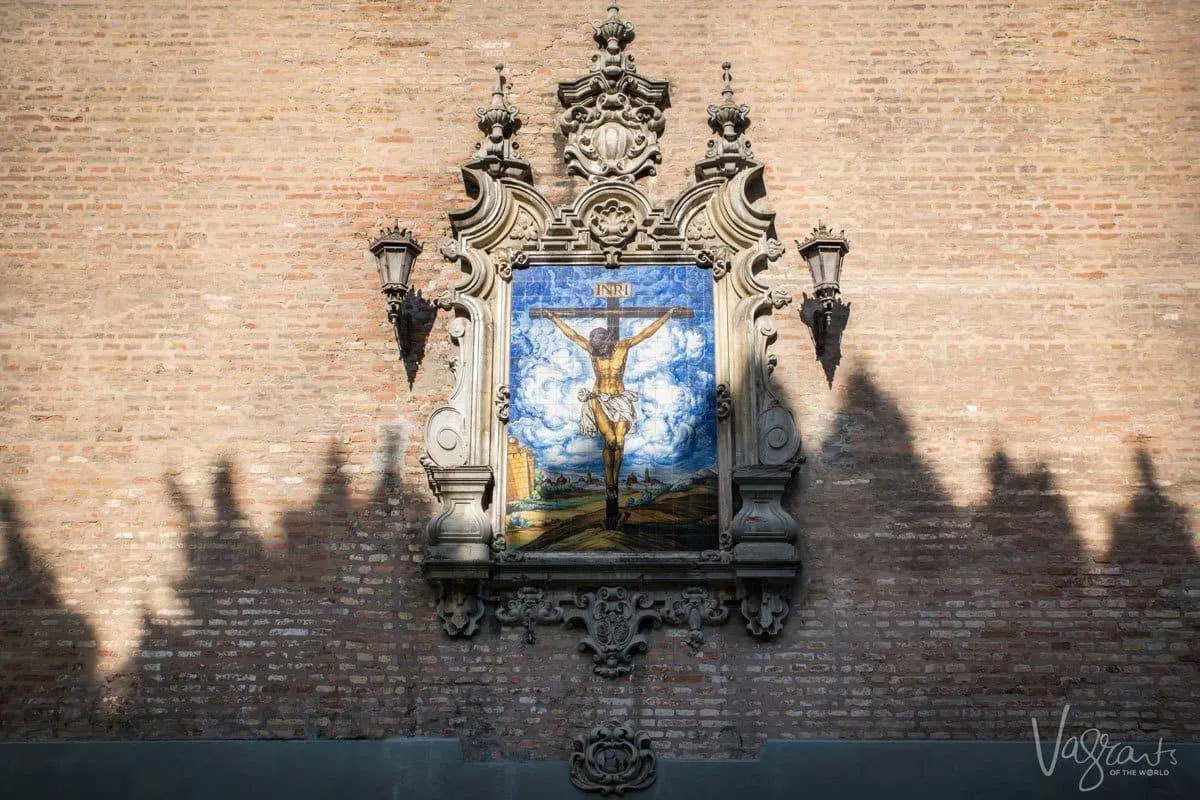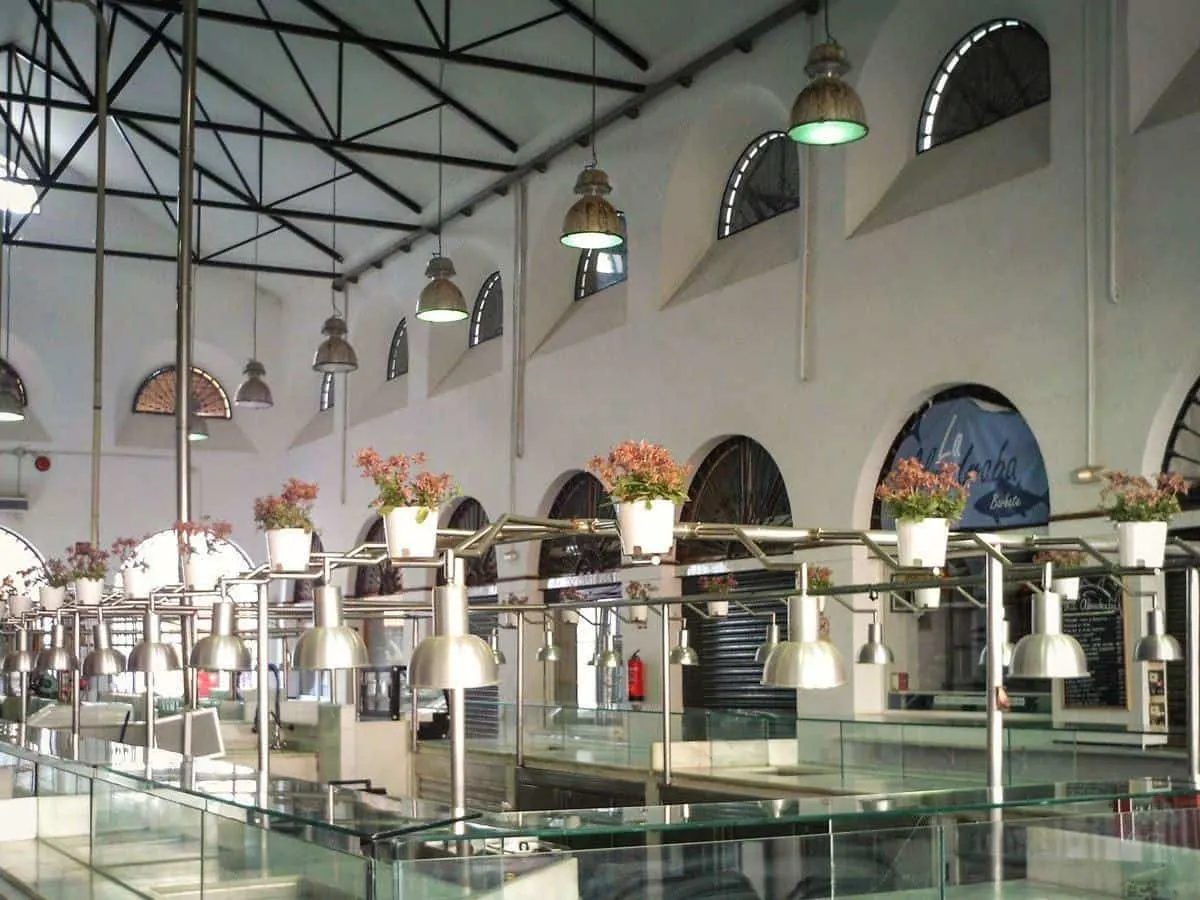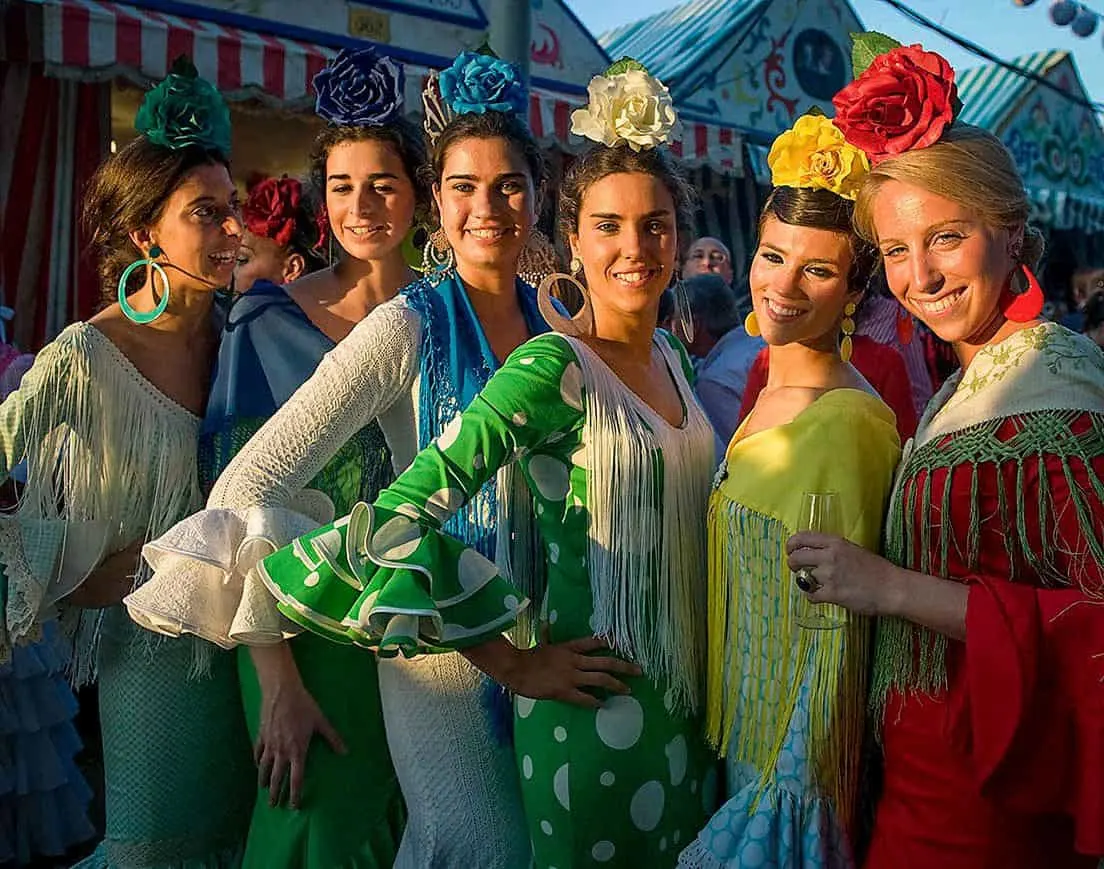The capital of southern Spain’s Andalusia region and the birthplace of flamenco, Seville is a lively city filled with centuries-old traditions and one of the premier destinations in Southern Spain.
We have put together a complete guide to the best things to do in Seville, along with everything you need to know about visiting this fabulous city.
From what to see and do, where to eat in Seville, festivals, and so much more, you can plan your perfect Seville itinerary.
One of the most beautiful cities in Spain, every square inch is enriched with art and culture, its streets often alive with Spanish festivities and always brimming with activity and atmosphere.
Some of the reasons Seville is also a fabulous city for solo travellers in Europe. Visitors to Seville are guaranteed to fall in love with this beautiful corner of southern Spain.
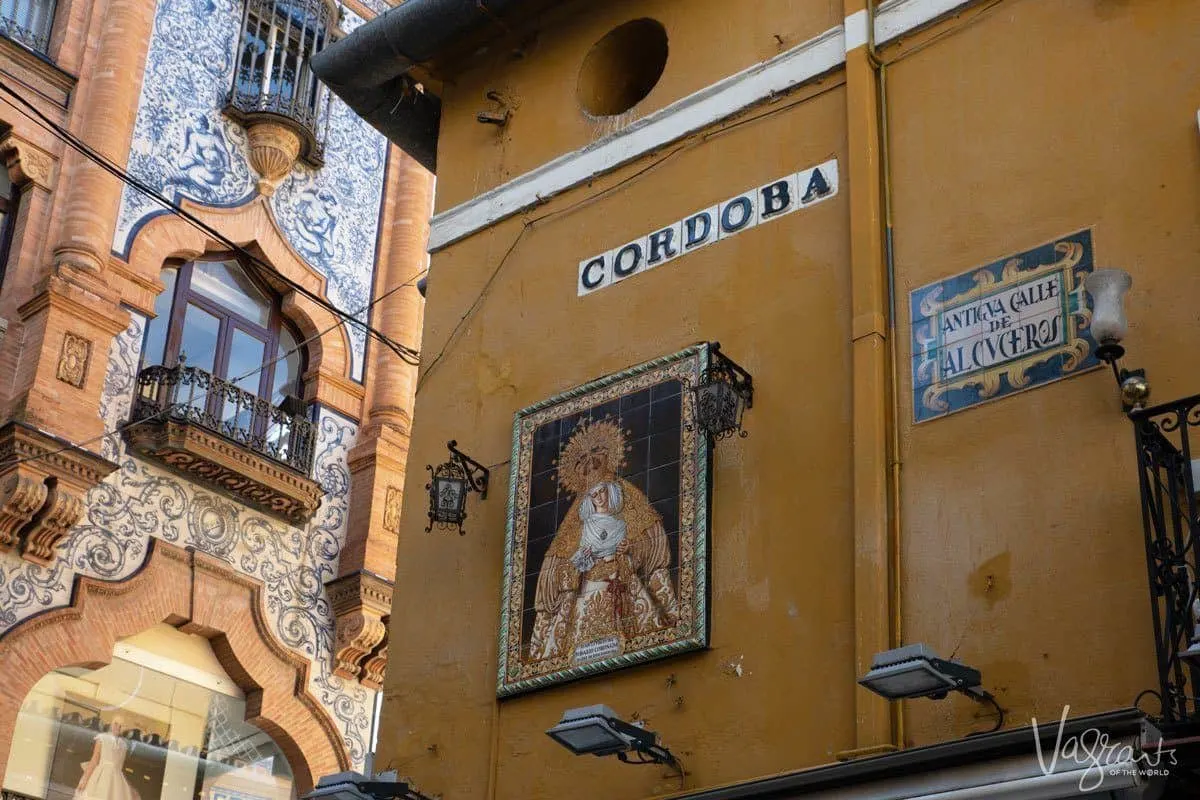
Seville Travel Tips
Best Time to Go to Seville
While a beautiful city to visit any time of year, Seville is much more enjoyable when the temperatures are not extreme as can happen in summer.
- Shoulder seasons are a great time to visit anywhere in Europe and are always the best time to visit Seville. The months are best on either side of the summer peak season – April and May (spring) and late September to October (autumn). Expect warm sunny days and cooler nights. The city is not as crowded, and the rates are cheaper.
- During the peak summer months, late June–early September, the heat can be unbearable in Seville and crowds and prices are at their peak.
- During festivals such as Semana Santa (Palm Sunday – Easter Sunday) and Feria de Abril (usually two weeks after Easter) can be a great time to visit but make sure you book well in advance.
- Winter in Seville is relatively mild compared to other places in Europe, much like the Mediterranean. So much so, it makes our list of best European winter sun getaways. Winter is also an excellent time to visit to avoid the crowds and get a great hotel deal.
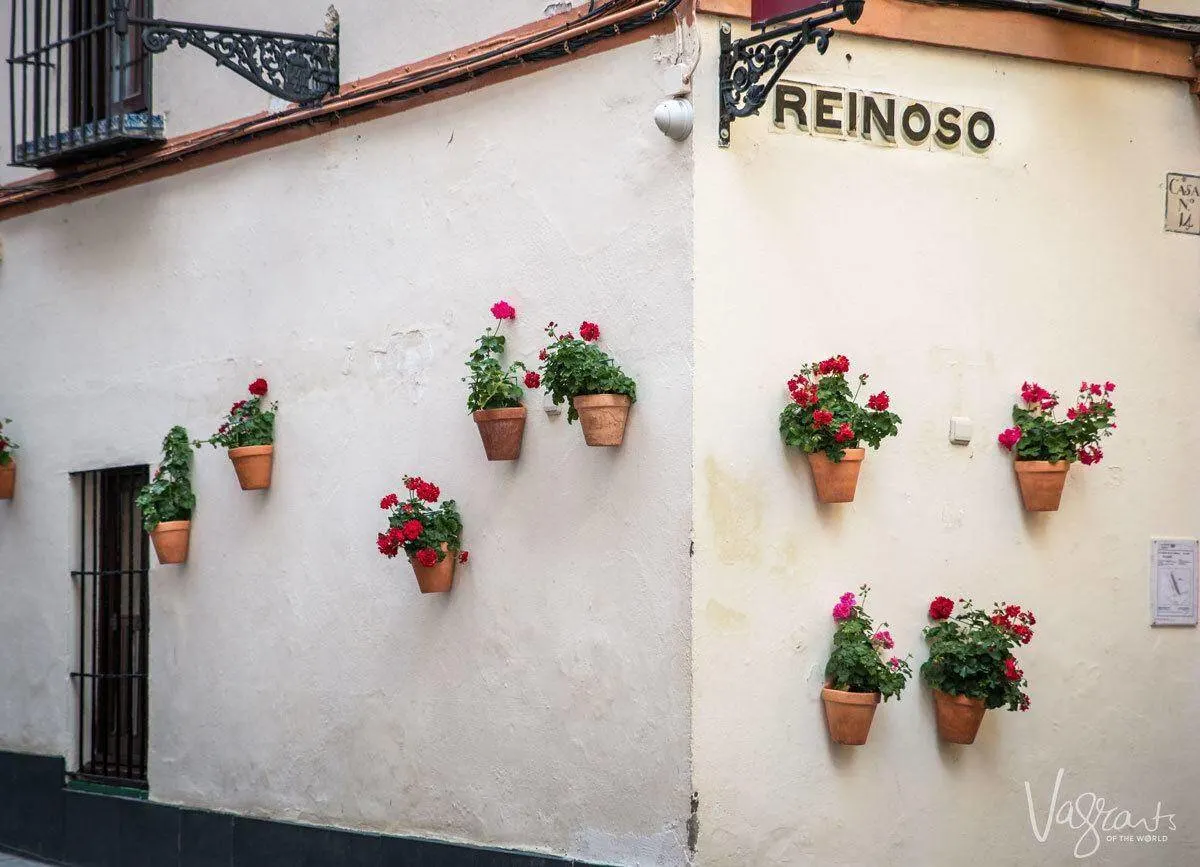
How Many Days in Seville
We have been to Seville many times, sometimes for a day and others for three days. While you could see some of Seville’s highlights in a day, we would recommend at least two to three full days to see the best of Seville without rushing.
There is so much to see and do in Seville; it would be a shame to visit and miss a lot of what makes Seville special. And remember, if you are not organised, you could spend much of your day queuing for tickets at some of the more popular attractions, especially in peak season.
Seville is the Perfect Base to Explore Andalusia
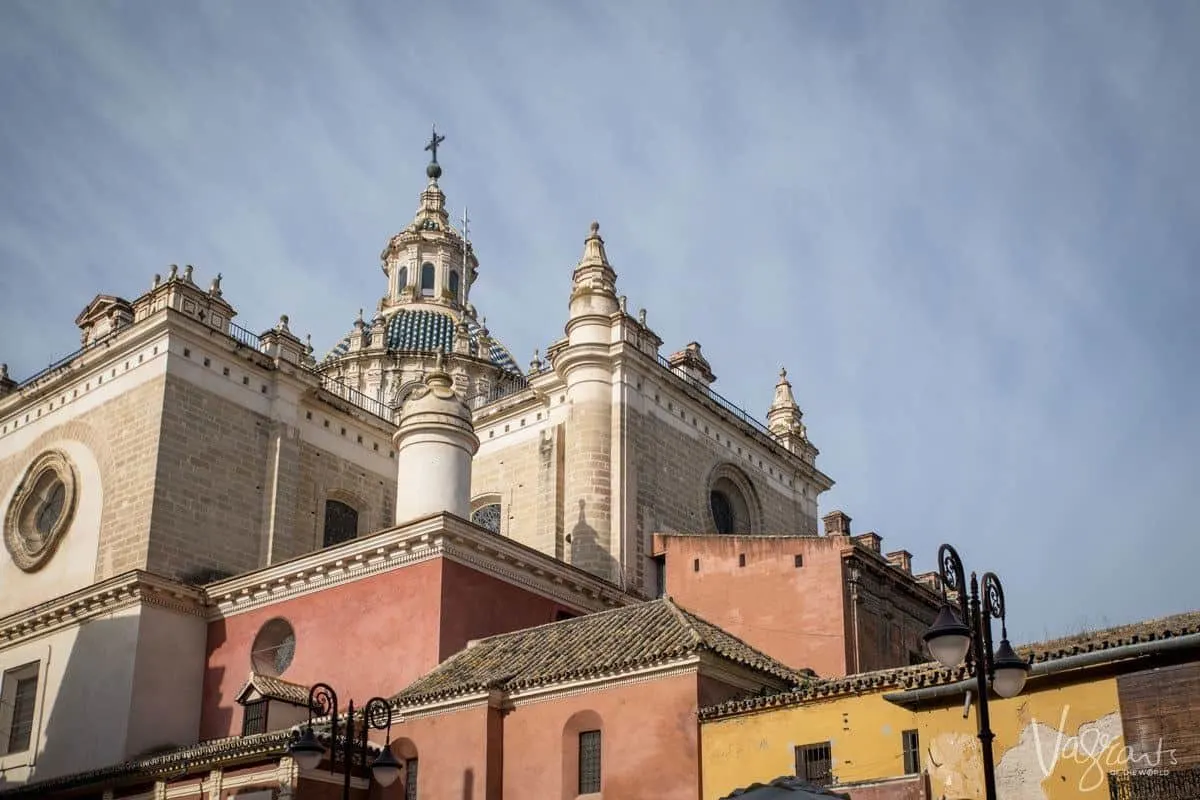
You Might Also Like: Visit the Spanish capital with our 3 Day Madrid Itinerary for any season.
How to Get To Seville
Seville has an international airport only 15 – 20 mins from the city centre servicing flights throughout Europe and North Africa.
In addition to regional bus services, Seville is well connected by Spain’s AVE high-speed train service. You can be in Seville from Madrid in a little over 2.5 hrs and Barcelona to Seville in around 6 hrs.
See the AVE train website for timetables and bookings.
Train Discount Tip
Did you know you can get discounts of up to 40% if you book your train tickets well in advance of your travel date? This applies to nearly all train travel throughout Europe.
From The Algarve in Portugal, ALSA operates numerous bus services each day. The trip takes around 2 to 3 hrs depending on the service and costs approx. €18.
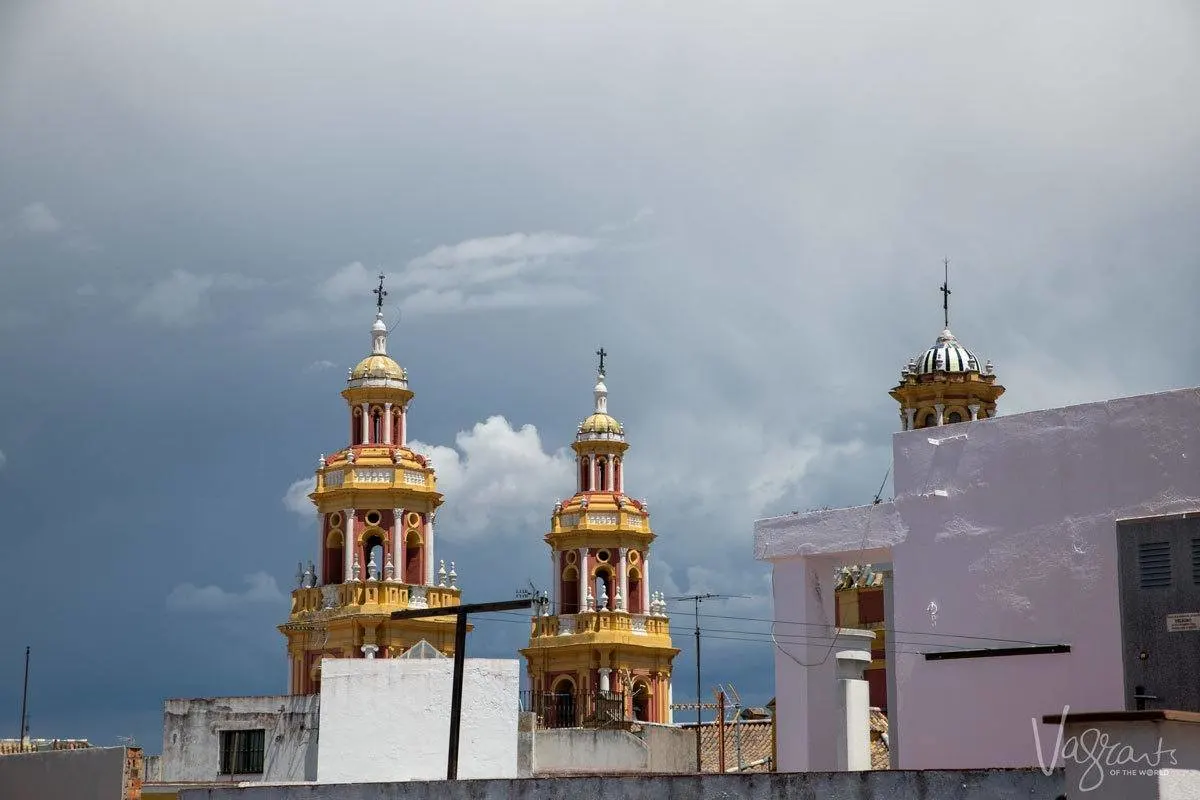
Related: The Most Spectacular Landmarks in Spain
Where to Stay in Seville
You will find a complete rundown of the best places to stay in Seville here. A very compact and walkable city, Seville is easy to get around but each barrio has a distinct vibe catering to different tastes and budgets.
How to Get Around Seville
Walk
Seville city is relatively compact and pedestrian-friendly, so walking is the best way to get around Seville.
Hop On Hop Off Bus
If you are short on time or just want to get oriented for further self-exploration, the Hop On Hop Off bus covers nearly all of the best attractions in Seville within a day.
Hop On Hop Off bus tickets start at €21 pp for a 24-hour ticket and include free audio walking tours, free access to certain attractions and loads of discounts. Find out more here.
Guided Tours – Cycle, Segway, Carriage
You can also take a guided city cycling tour or rent a Seville City bike. You can even opt for a segway tour or a more traditional horse and carriage ride as a way to experience the highlights of Seville.
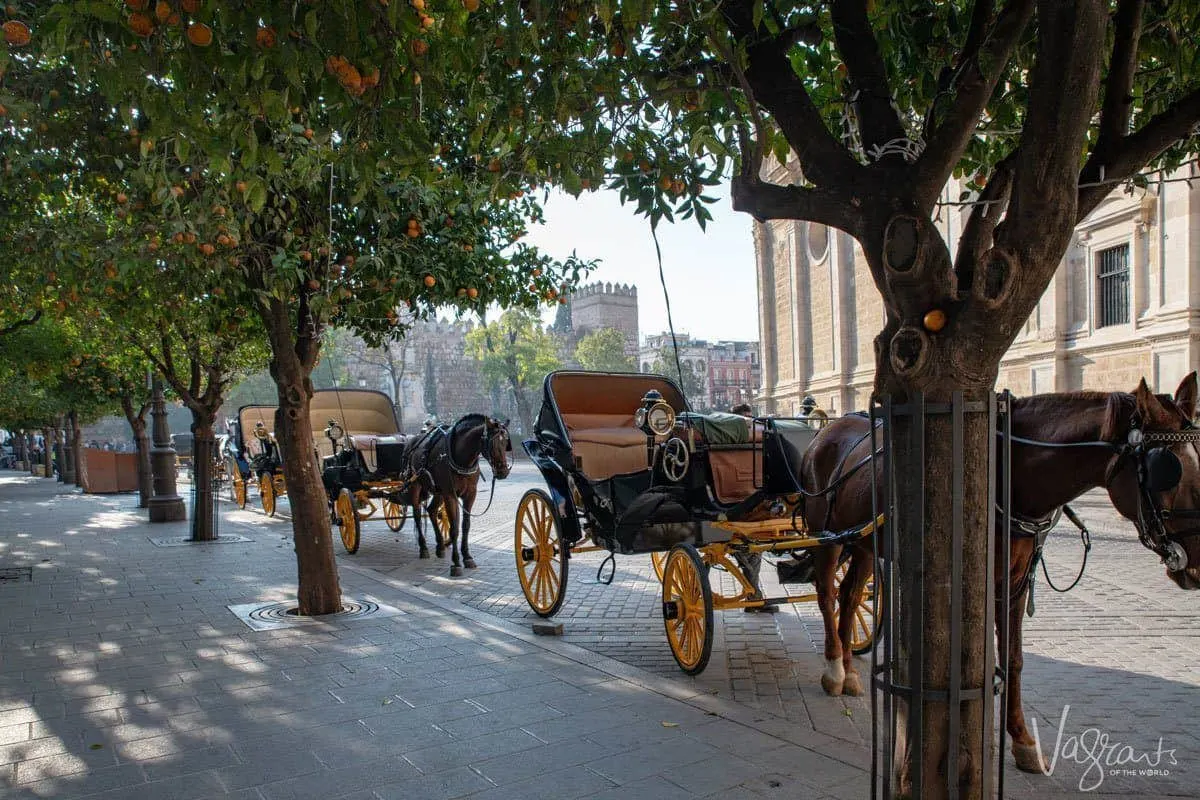
What to Pack For Seville
- A pair of good walking shoes or comfortable sandals are a must. You will be doing some miles. We suggest comfortable walking shoes that will be suitable for many occasions. There are lots of stylish walking shoes on the market that will see you through for sightseeing and on to a casual dinner.
- For the shoulder seasons of spring and autumn, pack layers. Days will warm and mornings and evenings cool.
- A lightweight, packable rain jacket or travel umbrella is always a handy travel companion, especially in the shoulders seasons or winter months.
- A light jacket to enjoy an evening drink and tapas outside in the evenings.
- A scarf or two to accessorise for evenings.
- A good hat for the summer months.
- For the ladies, a good anti-theft backpack or an anti-theft messenger bag for the gents is always a good idea when you travel, especially in crowded tourist areas where pickpockets are common.
We’ve taken the guesswork out of what to pack for Seville. See all of our recommended Seville travel essentials for easy packing.
Travelon Anti Theft Sling Bag/ Waist Pack
See our top picks for the most Stylish Anti Theft Waist Packs and Sling Bags.
Things to do in Seville
Tip: Remember to pre-book skip the line tickets for any of the more popular attractions you want to visit to avoid wasting any of your precious time.
Seville Attractions and Highlights
The Royal Alcazar
Allow at least 2 hours to visit the Royal Alcazar
Along with the Cathedral, The Royal Alcázar is one of Seville’s most popular attractions. A Moorish fort in the 10th-century, construction of the first royal palace began in the 12th century by the first Caliph of Andalucía.
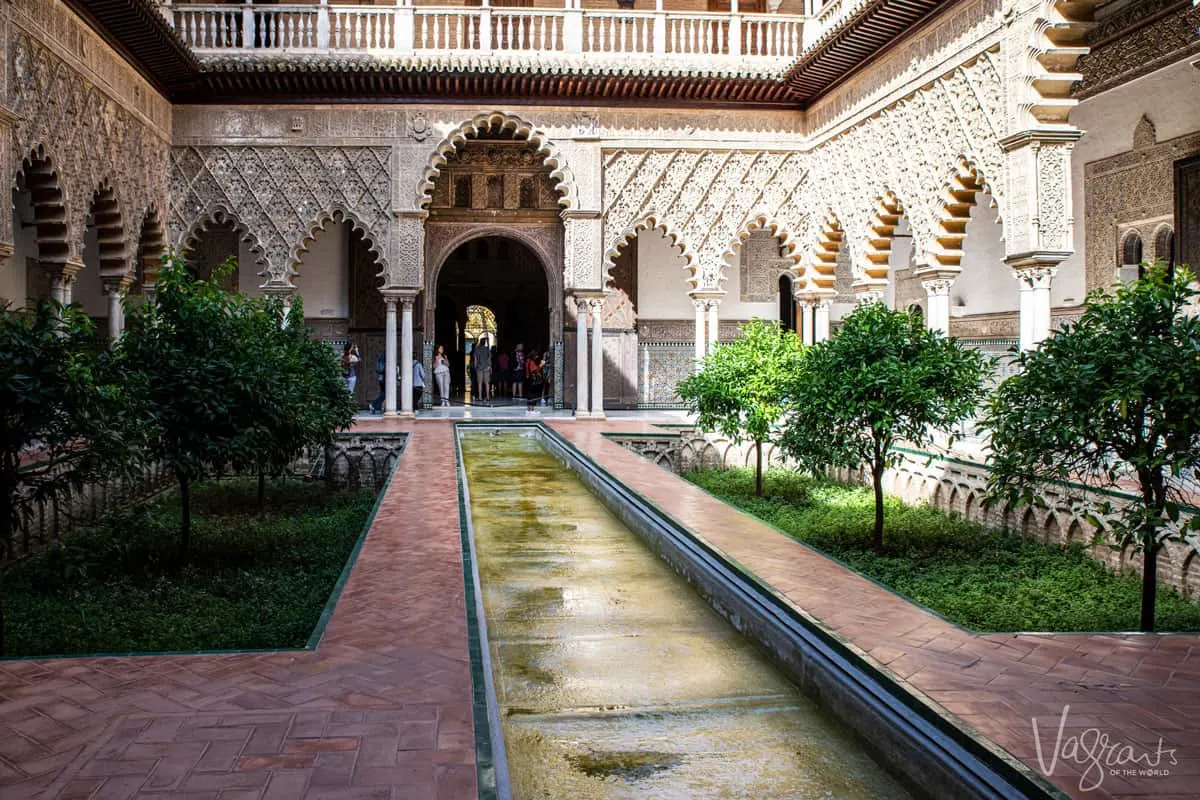
The palace as we know it today started to take shape in the 14th century when the Catholic Kings of Spain claimed it.
A work in progress until the 19th century, the palace is a stunning mix of Moorish, Renaissance and Mudéjar architecture. It is considered one of the finest examples of Mudéjar art in existence.
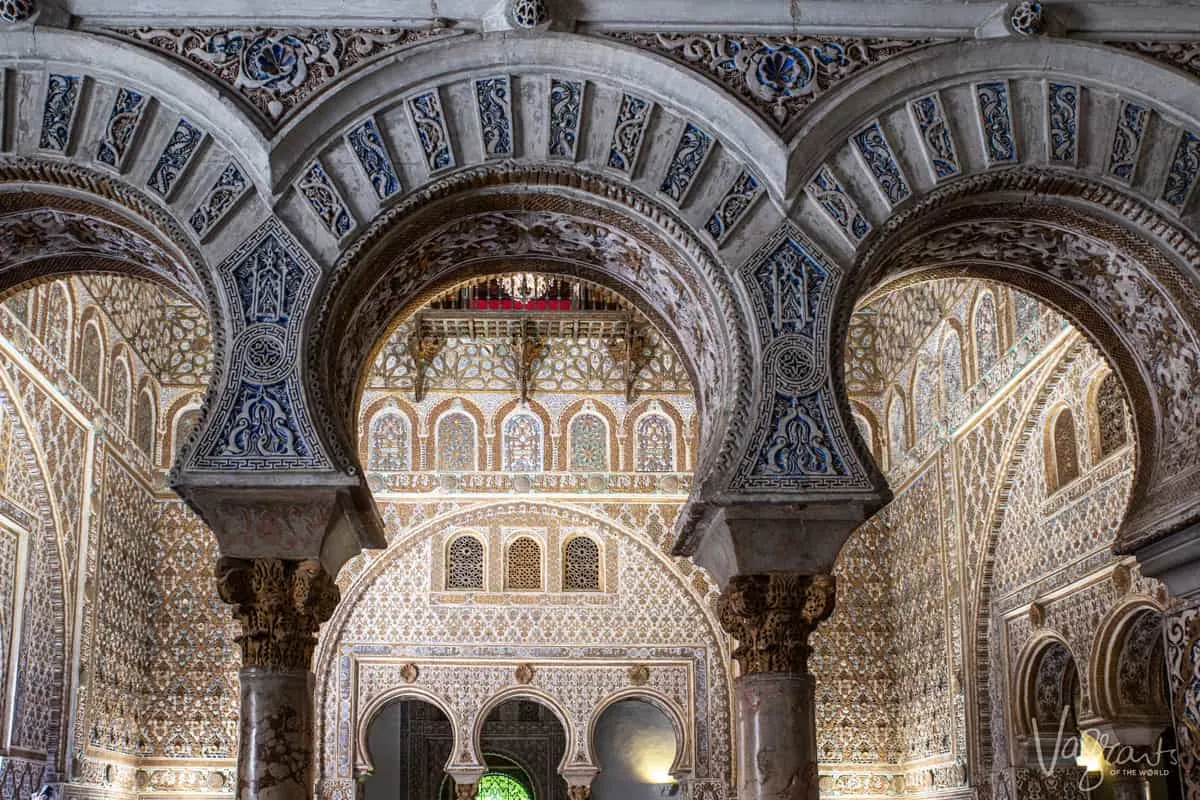
While the palace, a UNESCO World Heritage site, now belongs to the council of Seville, the upper floors are still the Seville residence of the Spanish royal family, making the Royal Alcázar the oldest, continually used royal palace in Europe.
Game of Thrones fans will recognise the palace, especially the gardens, one of the palace’s most beautiful features as the setting for the Kingdom of Dorne. One of the few film locations that are far more beautiful in real life than in the TV series.
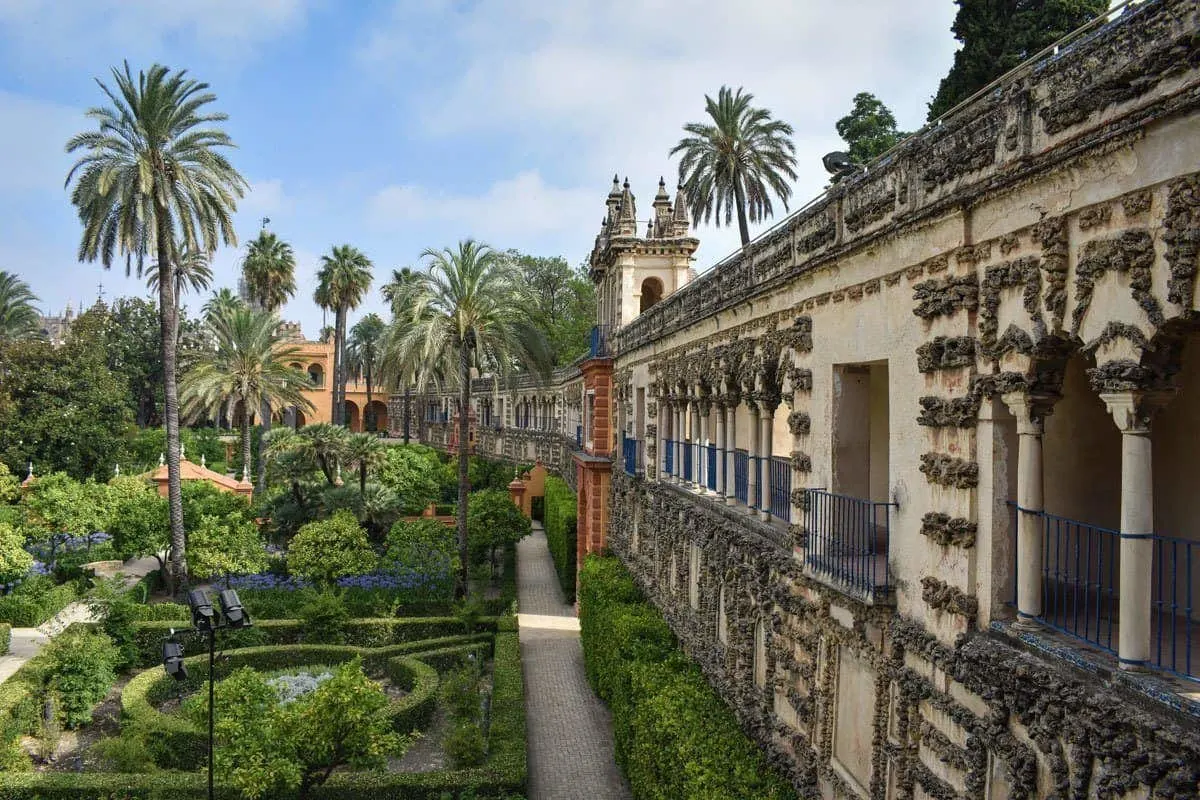
The Baths of María de Padilla
Located underneath the palace, visitors will find the Baths of Doña María de Padilla. A rather posh name for what is basically a water storage facility.
King Pedro named the cistern after his mistress María de Padilla who he secretly married in 1353. The nobles later pressured the king into an arranged marriage with the Queen of Castille, who forced him to deny their marriage. Doña María de Padilla went on to bear four children in a relationship that continued until her death.
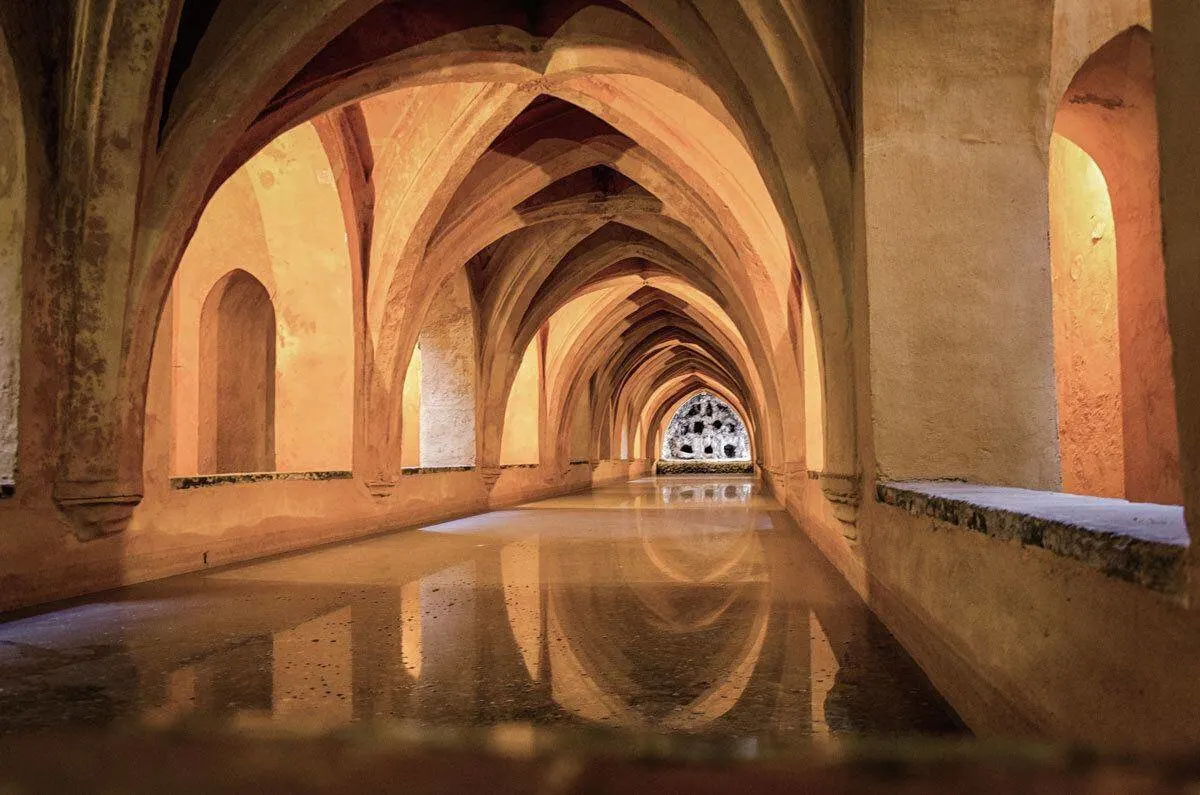
Visiting The Royal Alcázar
Buying Tickets for the Royal Alcázar
As the Royal Alcázar is one of Seville’s most popular attractions, you can expect long queues. It is highly advisable to purchase tickets online in advance of your visit. Tickets can be purchased online through the Royal Alcázar website.
Tickets are purchased for an allotted entry time. We recommend booking the first time allotment and being first in line at opening. It will give you precious moments ahead of the crowds to enjoy the palace while still empty.
Entry
- General Admission: € 11.50 | Includes the ground floor of the Palaces and Gardens.
- Entrance to the Royal High Room: Additional €4.50 | An organised visit to the Royal High Room located in the upper part of the Palace of King Don Pedro.
- Online Booking Fee: €1 for each admission
TIP:
The General Admission Fee includes entry to the Antiquarium, Museum of the Ceramics of Triana and other museum spaces managed by the Seville City Council through the Institute of Culture and Arts of Seville.
Skip the Line With a Guided Tour of The Royal Alcázar
Many visitors opt for Skip the Line tickets with a tour combo to make the most of their visit. Tours include general admission with skip the line ticket, an official one hour tour and an audio guide.
Prices start at €35 pp. Get details here for guided tours.
Discount Entry on Monday
On Monday afternoons, entry to the Royal Alcázar is only one euro (€1). However enticing, it may not be the best time to visit as even queuing for pre-booked tickets can take a few hours. So, if planning to visit on a Monday, allow plenty of time or arrive early.
Opening Hours
- October to March: Every day from 9.30 a.m. to 5.00 p.m. (The Palace closes at 6.00 p.m.)
- April to September: Every day from 9.30 a.m. to 7.00 p.m. (The Palace closes at 8.00 p.m.)
- Closed: January 1 and 6, Good Friday and December 25.
Seville Tour Recommendation
Take a combined 3 hour Royal Alcazar, Seville Cathedral & Giralda Tower Guided Tour for as little as €27 pp.
Includes skip the line entry to all attractions with an official guide.
Seville Cathedral and The Giralda Tower
Allow at least 1.5 hrs to visit Seville Cathedral & The Giralda Tower
Seville Cathedral
The largest Gothic cathedral in the world and the burial place of Christopher Columbus, Seville Cathedral is a must-see.
Built on the site of a mosque dating back to 1198, construction of the magnificent cathedral began in 1401, taking more than 100 years to complete. Although, interior works continued well into the 20th century.
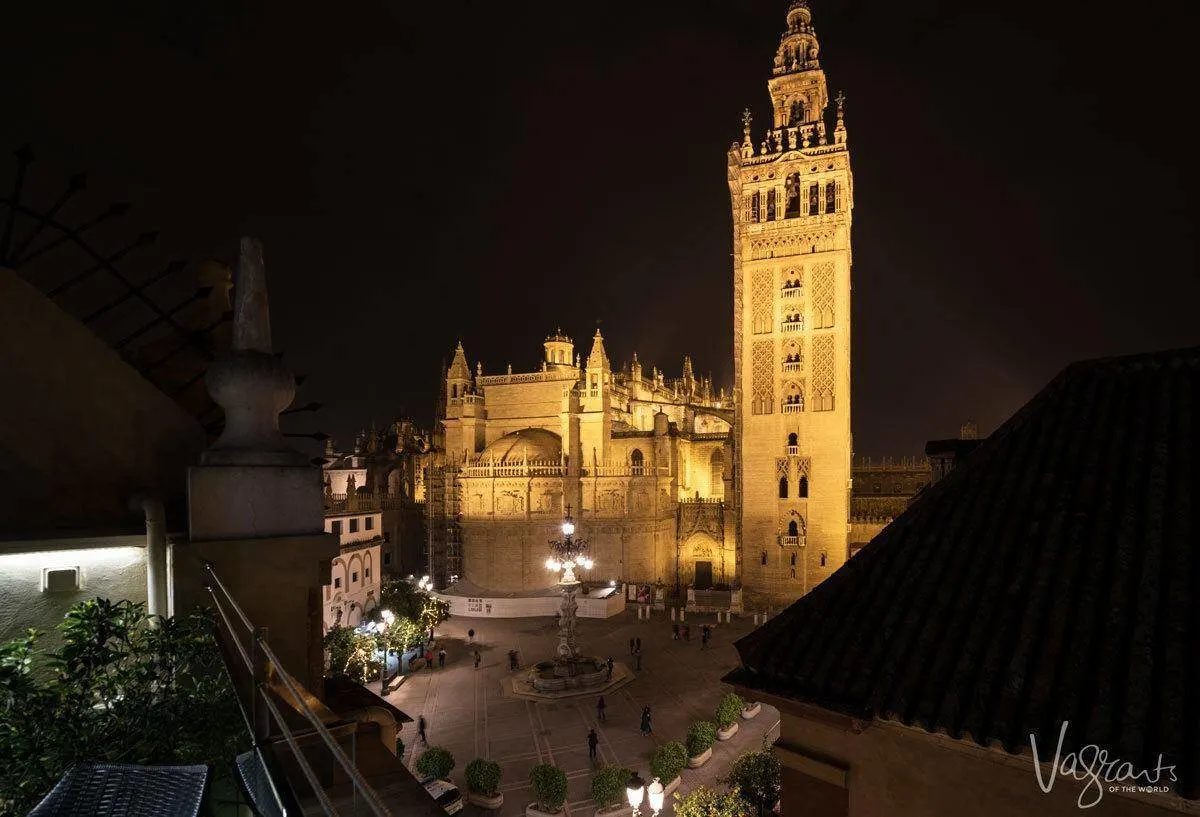
The sprawling UNESCO listed cathedral features 80 chapels and many significant artistic features and artefacts. The cathedral’s grand altarpiece – the largest ever made, depicts the life of Jesus of Nazareth, from birth to crucifixion.
You will also see artworks by famous Spanish painters Zurbarán and Murillo. A chapel housing the 13th-century fresco Virgen de la Antigua, Ferdinand III’s pennant flown by the Crusaders when they expelled the Moors from Seville in 1248 and priceless jewelled pieces and intricate pieces of Plateresque silverwork.
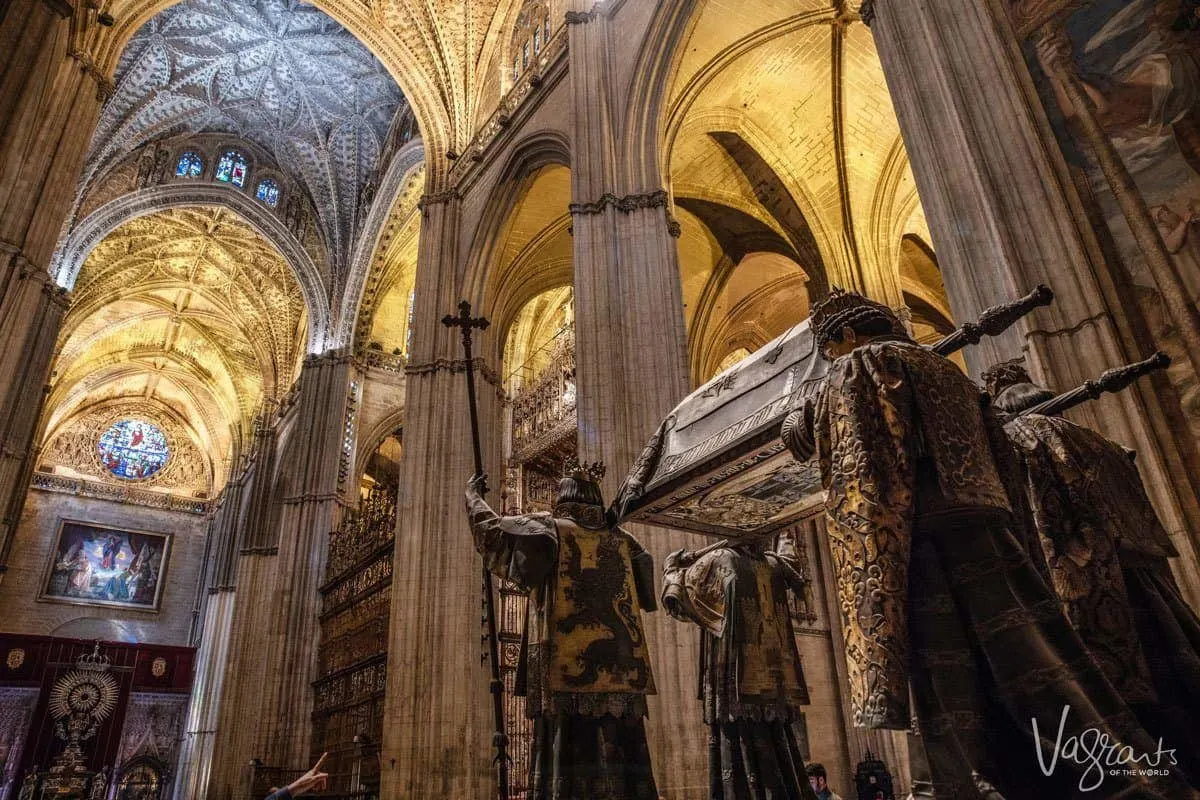
Attending Mass at Seville Cathedral
The Cathedral has an immense pipe organ behind the main altarpiece. It is worth attending the 10 a.m. mass at the main altar just to hear it played. Entry is free, although you will be asked to leave immediately after mass.
Be aware mass times may change, and there are many services throughout the day in various chapels throughout the cathedral. Here you will find a very useful guide for attending mass at the Cathedral, including etiquette advice.
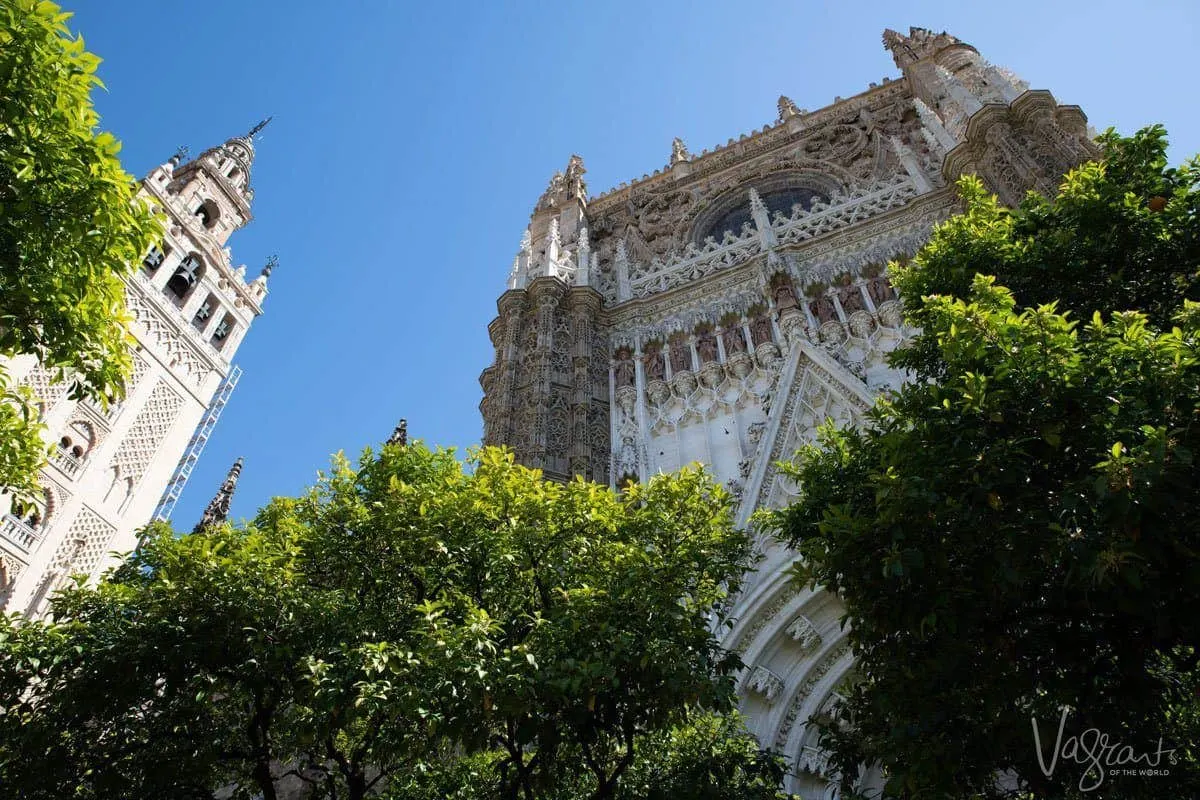
The Giralda Tower
Tickets to the Seville Cathedral include the 104.1 m (342 ft) Torre Giralda bell tower entry. The tower is all that remains of Seville’s grand mosque, one of the most important symbols of Seville since the Middle Ages.
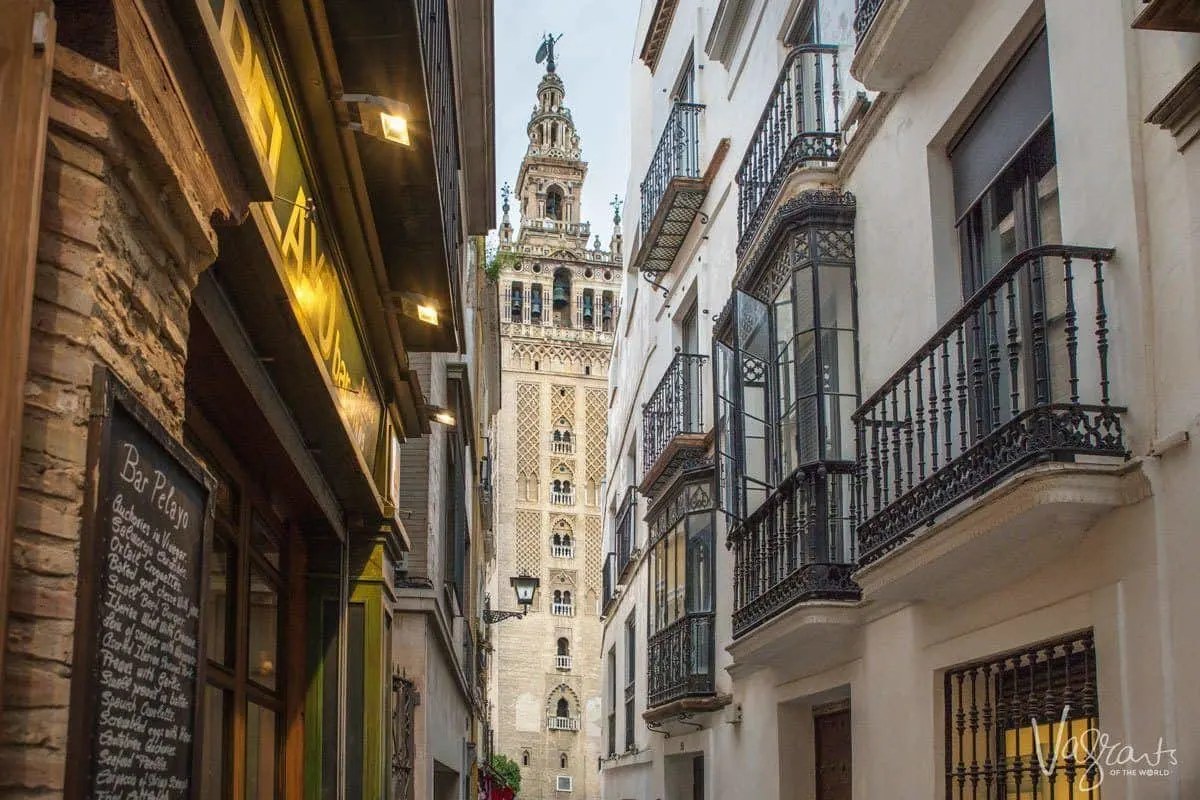
The minaret was initially topped with great copper globes, which fell in the 1365 earthquake. The conquistadores saw this as a sign and replaced them with the Christain cross and bell tower.
Except for the final section of the tower, the ascent to the top of the tower for spectacular views of the city is via a wide, winding ramp. According to one chronicler from the era, the ramp was built to accommodate “beasts of burden, people, and the custodians”. Why they required livestock or horses at the top of the tower is not known.
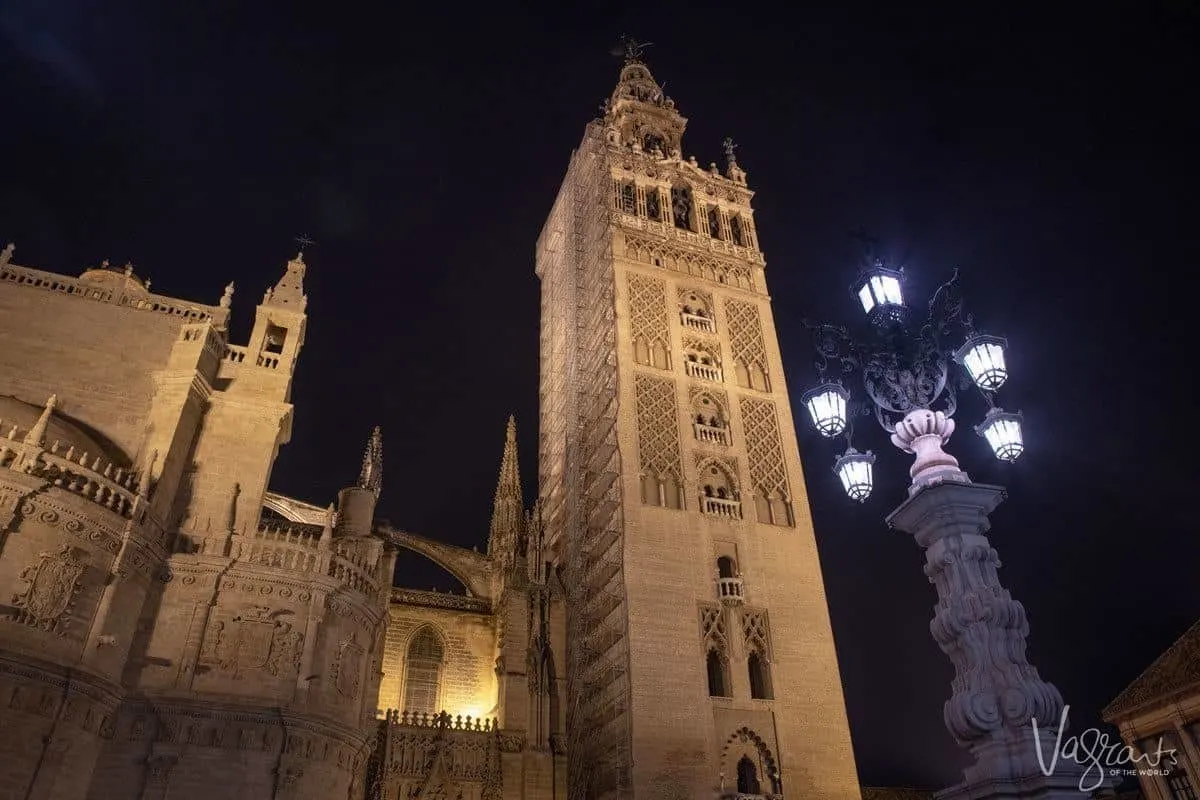
Visiting The Seville Cathedral & The Giralda Tower
Buying Tickets for the Seville Cathedral
As with the Royal Alcázar, the Cathedral is one of Seville’s most popular attractions, so expect long queues. To make the most of your time in Seville, it is advisable to purchase tickets online before your visit. Tickets can be purchased online through the Seville Cathedral website.
Skip the Line With a Guided Tour of The Seville Cathedral
Many visitors opt for Skip the Line tickets with a tour combo to make the most of their visit to the cathedral. Tours include general admission with skip the line ticket to the cathedral and tower, an official one hour tour and an audio guide.
Prices start at €30 pp. Get details here for skip the line guided tours.
Opening Hours
- Monday: 11:00 AM to 3:30 PM
- Tuesday to Saturday: 11:00 a.m. to 5:00 p.m.
- Sunday: 2:30 PM to 6:00 PM.
July and August (except July 17 and 25)
- Monday: 10:30 AM to 4:00 PM (ticket office until 3:30 PM)
- Tuesday to Saturday: 10:30 a.m. to 6:00 p.m. (ticket office until 5.00 p.m.)
- Sunday: 2.00 PM to 7:00 PM (ticket office until 6.00 PM)
Opening times can change without notice due to the celebration of liturgies inside the enclosure.
Free Entry on Monday
If you plan, you can visit the Seville cathedral for free with an audio guide on Monday’s between 4:30 p.m. and 6 p.m. You need to book online in advance. Reservations open up between four to six weeks in advance but fill up quickly.
Las Setas De Sevilla The Metropol Parasol
Allow at least an hour to visit the Metropol Parasol, more if you include the Museo Antiquarium.
Dubbed by locals La Setas – The Mushrooms, the Metropol Parasol is as iconic for the divide in local opinion about the structure as the structure itself.
The world’s largest wooden structure, designed by German architect Jürgen Mayer-Hermann offers one of the best places to watch the sun go down in Seville.
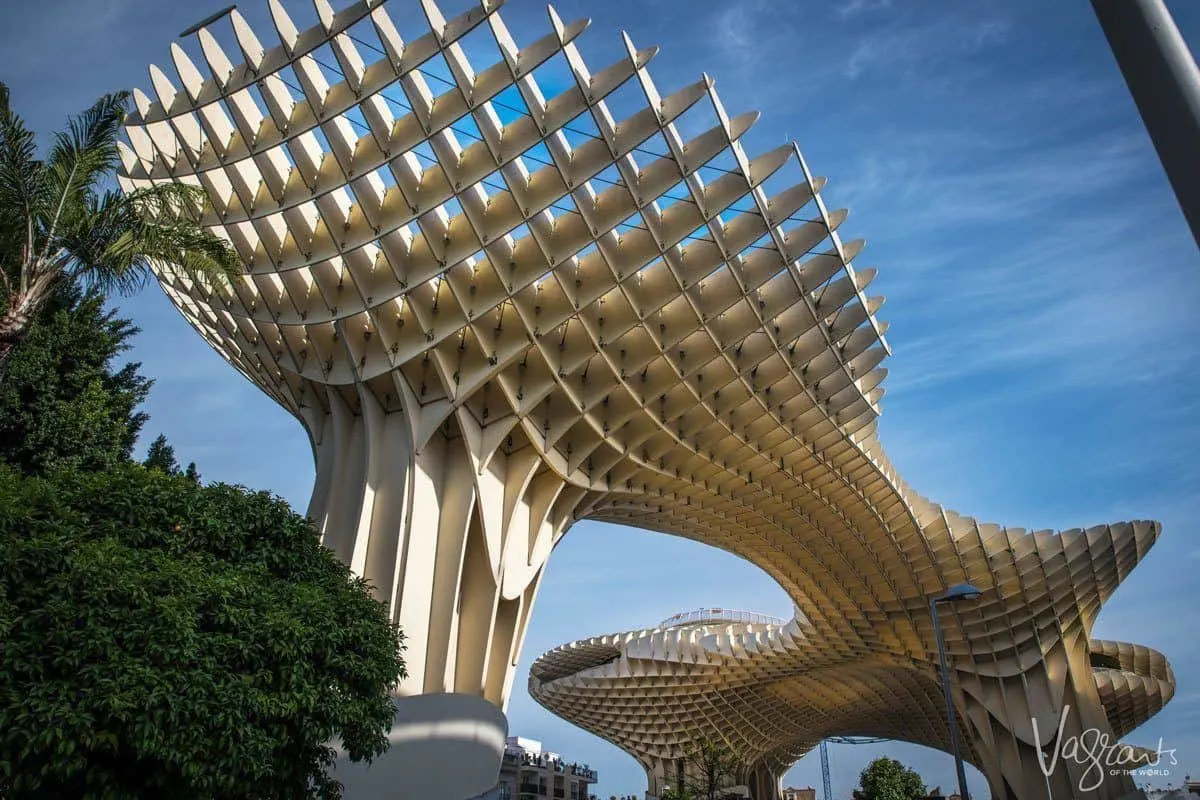
Take the lift to the top of the 30-metre high undulating honeycomb roof and follow the winding walkway for stunning views of the city. There’s even a cafe that offers a worthwhile happy hour for sunset.
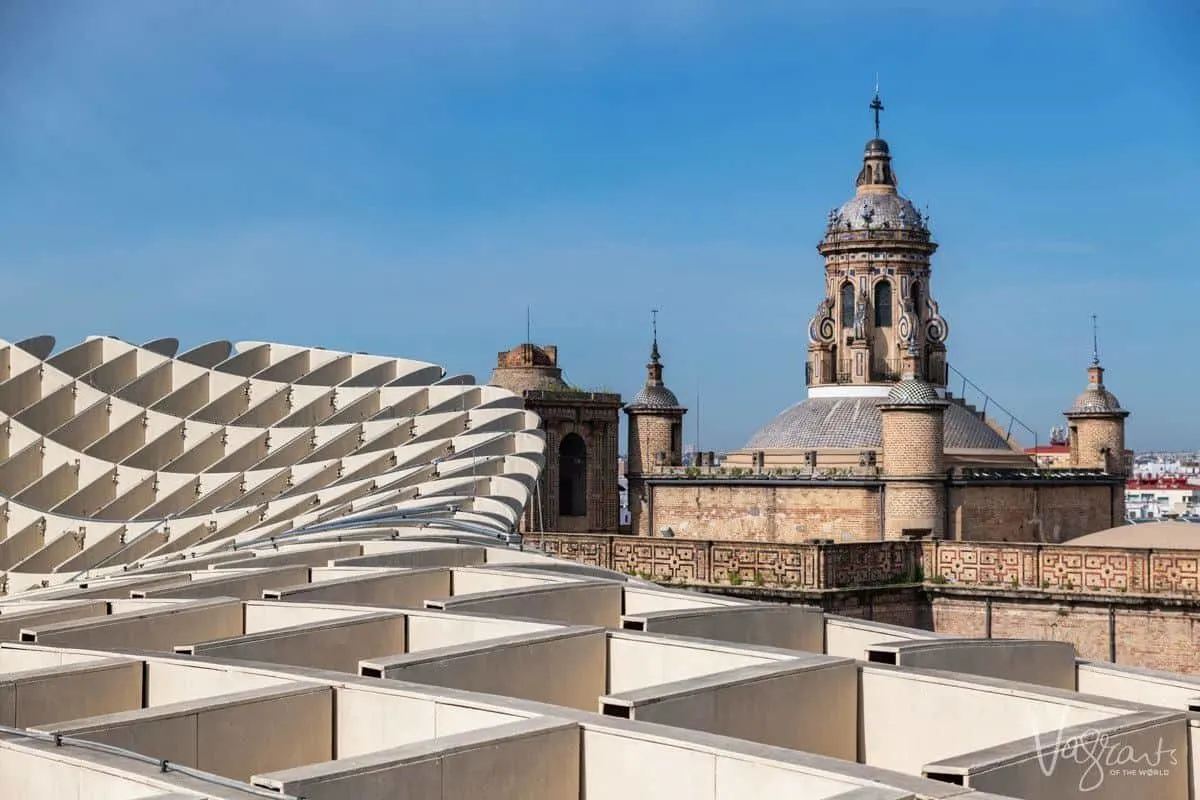
Head to the plaza’s basement and visit Museo Antiquarium to see the Roman ruins discovered during the construction of the Metropol Parasol.
Under the parasol is an open-air event space where you will find cafes, bars and a local produce market.
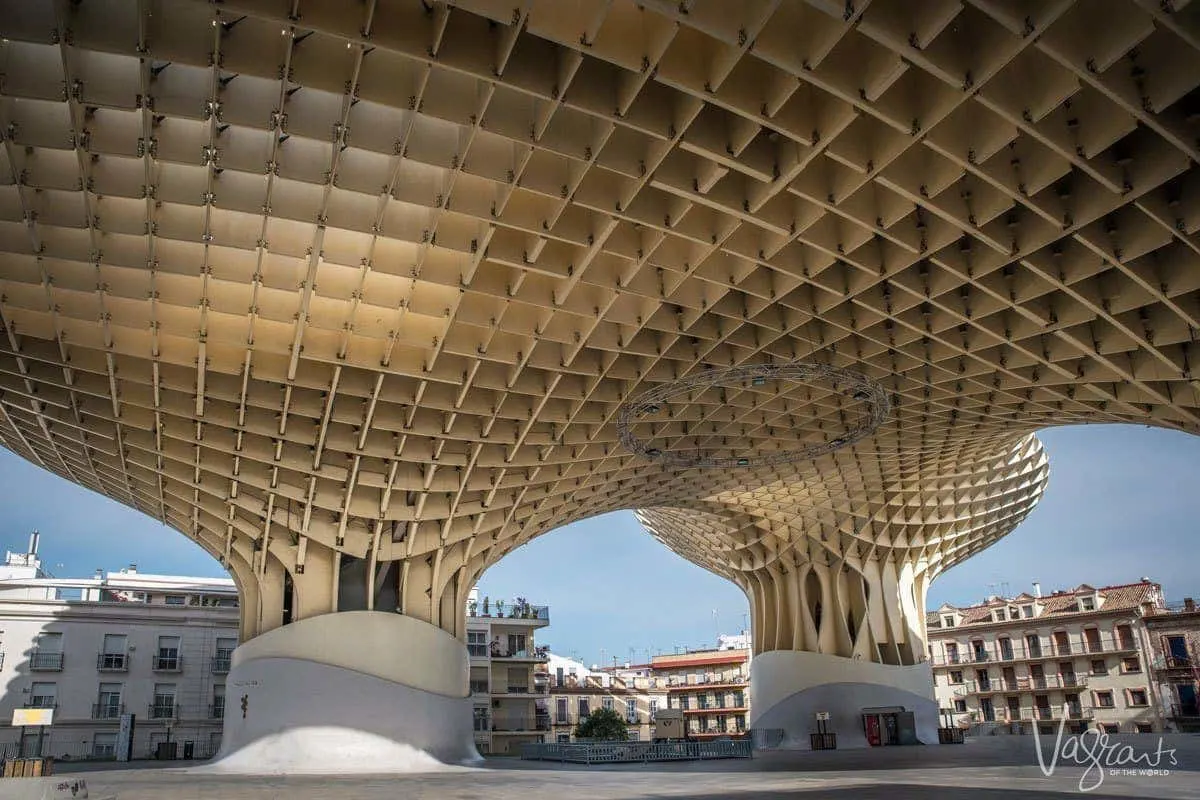
Visiting Las Setas De Sevilla
Opening Hours
The Metropol Parasol:
- 9.30 a.m. to 11.00 p.m. (Ticket office will close 30 mins before closing time)
Antiquarium Museum:
- Tuesday to Saturday: 10 a.m. to 8 p.m. (Last entry 7:30 p.m.).
- Sundays and holidays: 10 a.m. to 2 p.m. (Last entry 1:30 p.m.).
Opening times may vary slightly on public holidays.
Parque Maria Luisa and Plaza de España
Allow at least two hours to visit Maria Luisa Park & Plaza de España. We would recommend a half-day in nice weather.
Maria Luisa Park is one of the most beautiful inner-city parks in Spain. Walking distance from the centre of Seville, the city park is a lovely reprieve from the city.
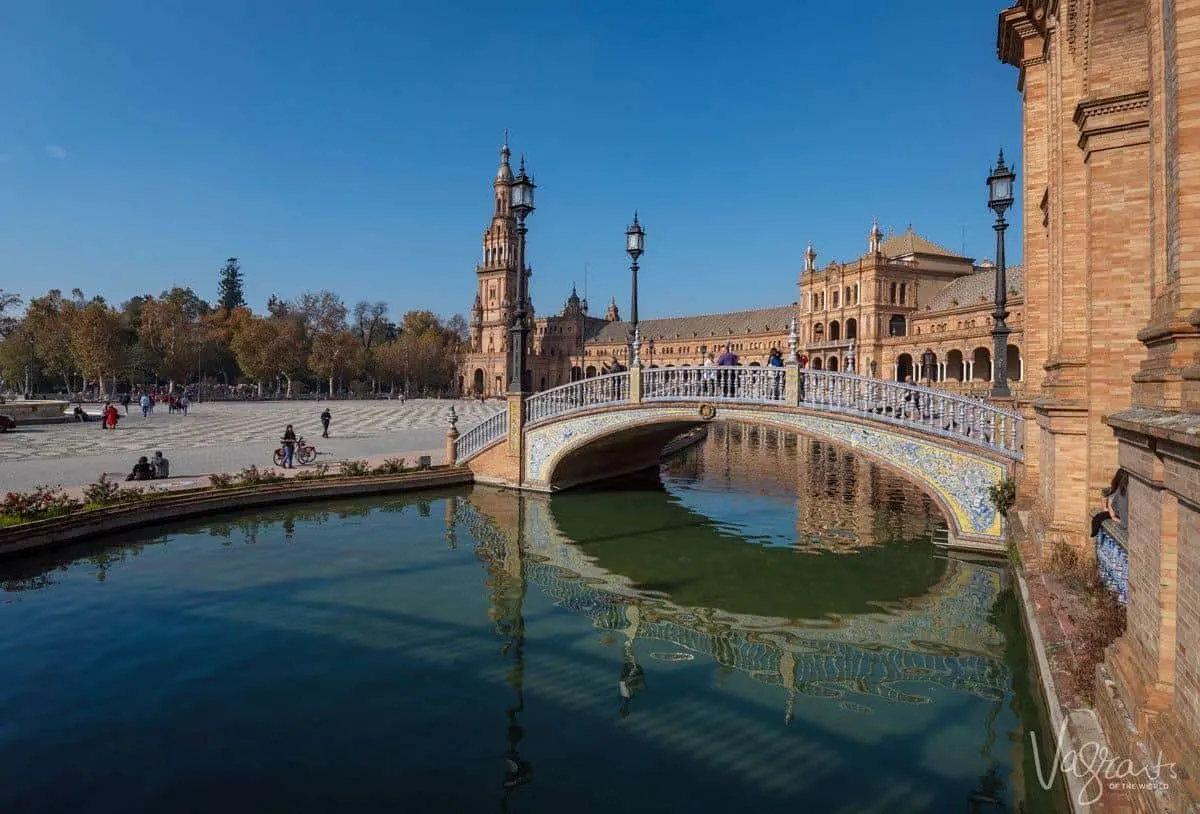
Formerly the private gardens of the Palace of San Telmo, the gardens were donated to the public in 1893 by the Duchess of Montpellier. To facilitate the 1929 Ibero-American Exhibition World’s Fair, the gardens underwent a massive redesign with the addition of the stunning Plaza de España on the edge of the gardens.
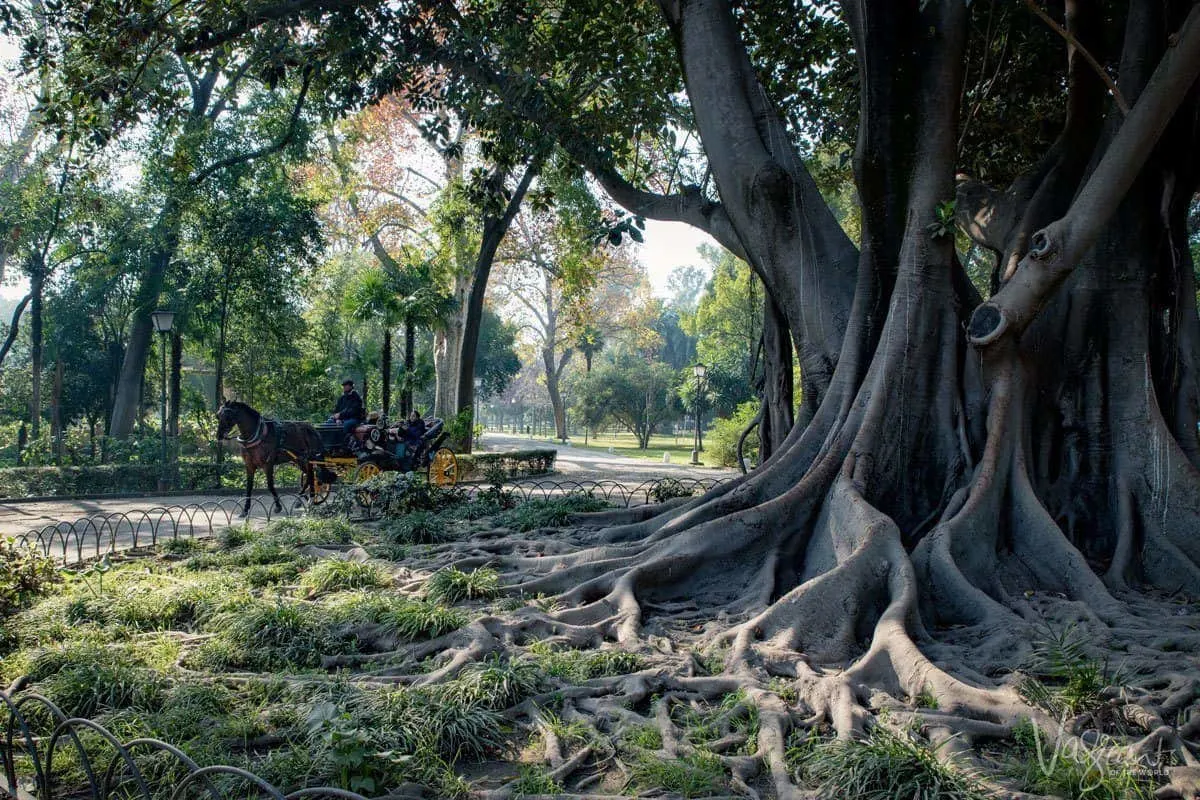
Wander Parque de María Luisa’s beautiful tree-lined boulevards to explore the park’s monuments and pavilions.
Enjoy a picnic in the stunning gardens, take a horse-drawn carriage ride, hire bicycles or a cyclo bike for two, four or six. You can even take a rowboat around the Plaza de España canal.
Plaza de España is the jewel in the park’s crown. You’ll see why the grand plaza has featured in scenes from Lawrence of Arabia, Star Wars, and, Game of Thrones.
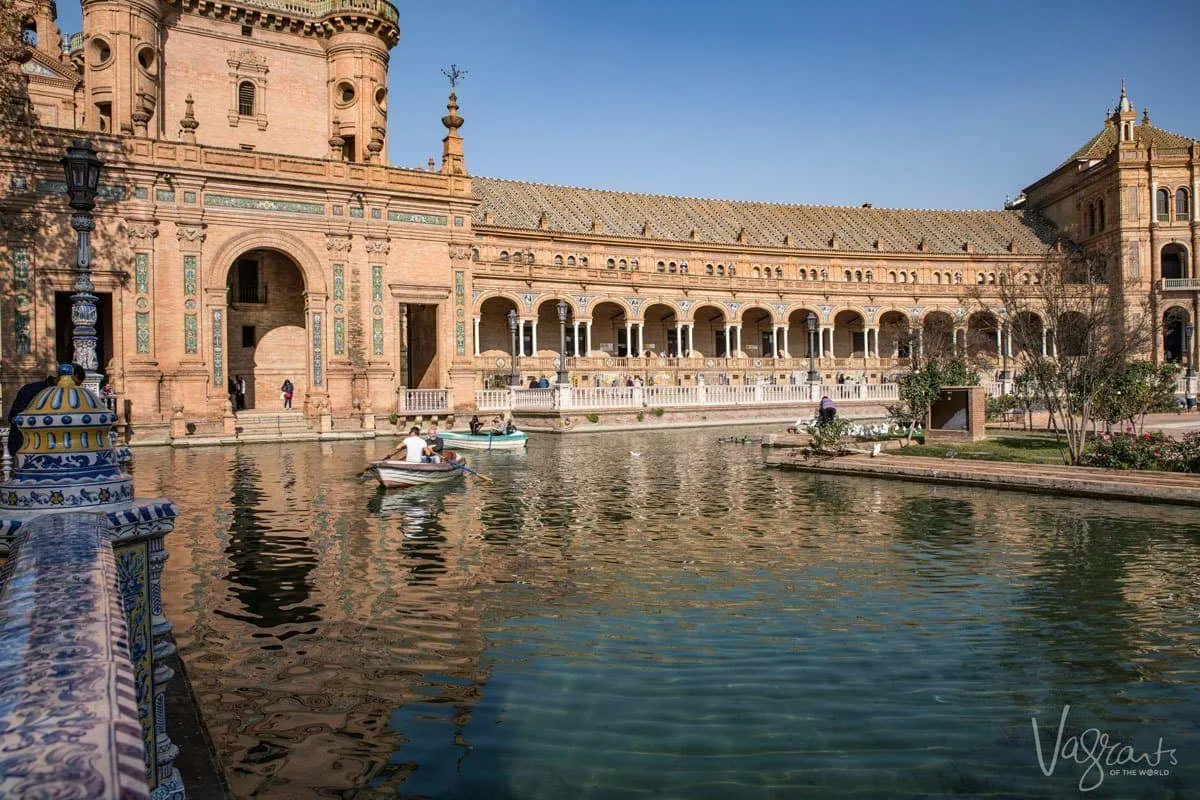
Visiting Parque María Luisa & Plaza de España
Entry: Free for both Maria Luisa Park and Plaza de España.
Bike hire in the park varies. Expect to pay – €10 / 2 hr bicycle hire | €8 / 1 hr tandem bike | €10 / 2 person covered cyclo up to €48 / 6 person covered cyclo.
Opening Hours
- Parque María Luisa: Every day 8.00 a.m. to 10.00 p.m.
- Plaza de España: Open 24 hours every day
Plaza de Toros de la Real Maestranza Seville Bullring
Allow one-two hours to visit Plaza de Toros de la Real Maestranza. The official tour takes 45 – 55 mins.
Take a backstage tour of Spain’s oldest and most beautiful bullring. The Plaza de Toros de la Real Maestranza de Caballería de Sevilla is where the sport of modern bullfighting began. It is also considered to be one of the most beautiful bullrings in Spain.
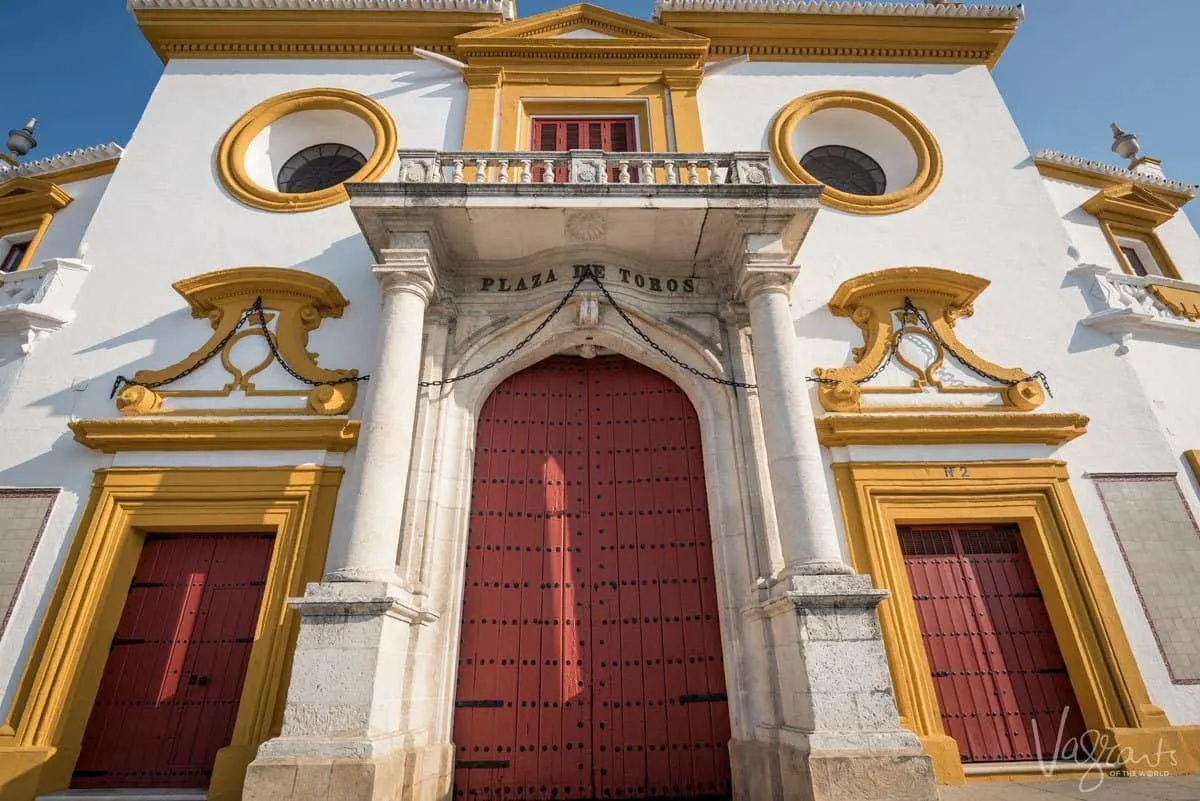
The best time to see a bullfight is during Seville’s annual April fair. Built in 1749, the ring has seating for 12,000 people. Today the bullfighting season is from April until September and is one of the best-known festivals in the world.
You can see the complete bullfighting schedule for Seville here.
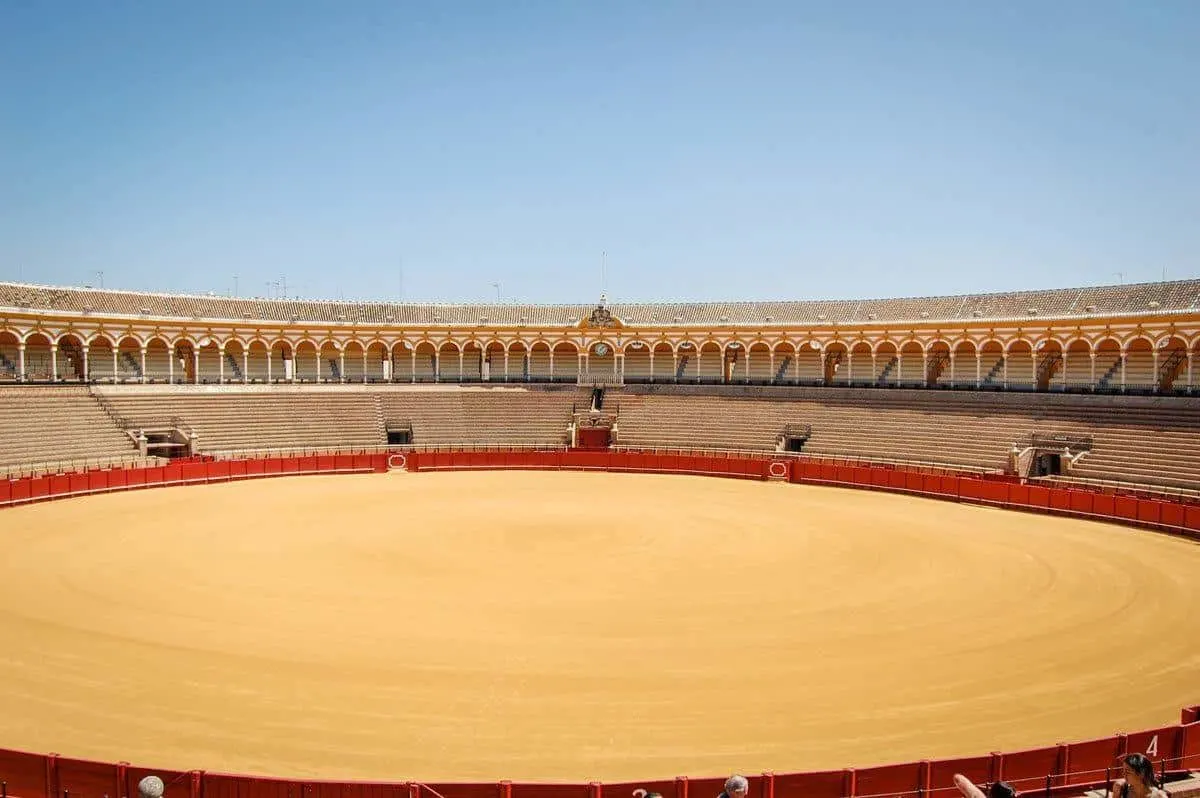
If you don’t want to see a bullfight, take a tour for a “backstage” look at the ring, the bullfighting museum and a gallery full of traditional bullfighting art. There is even the tiny chapel where the toreros pray before entering the ring.
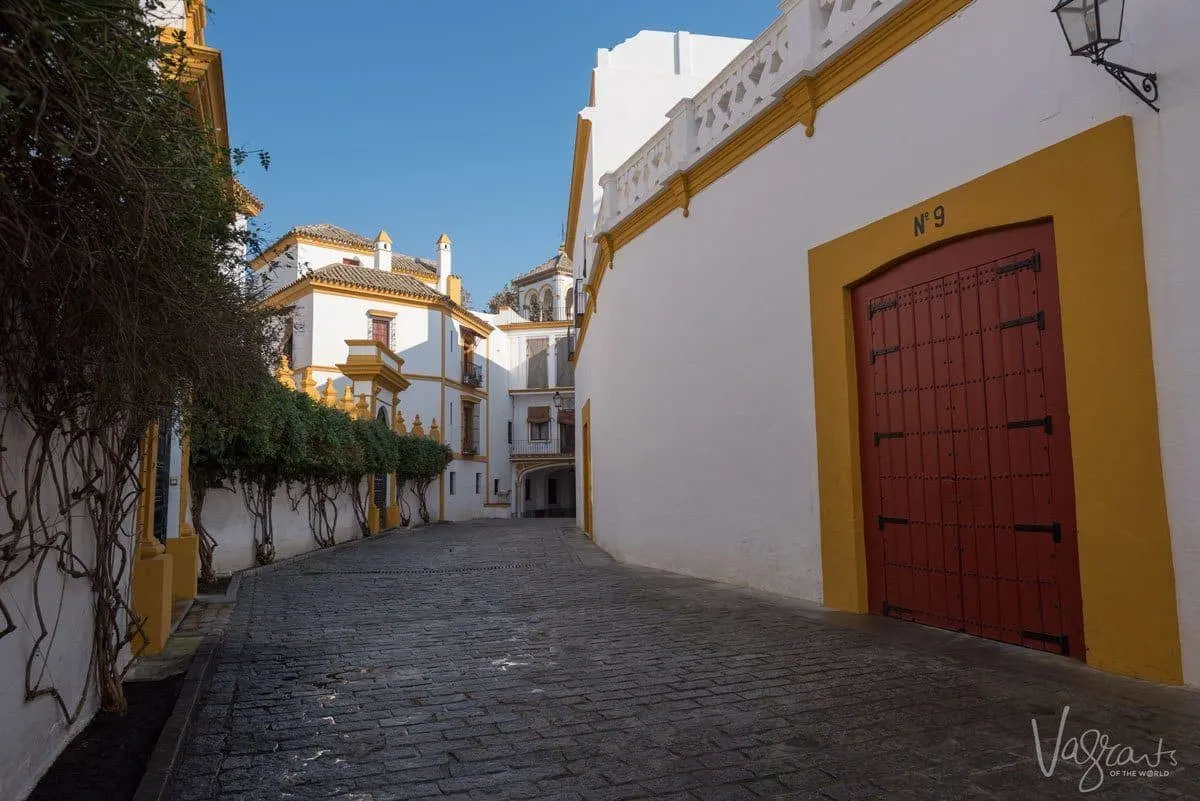
Visiting Plaza de Toros de la Real Maestranza
Tickets for Plaza de Toros Museum and Visit
You can buy tickets online through the official website, which is advisable, especially in the peak tourist months of summer. You may only visit by way of a guided tour with allocated tour times.
Entry is free on Monday afternoons after 3.00 PM although, be early as queues for this will be long.
Opening Hours
- November to March: 9.30 a.m. to 7.00 p.m.
- April to October: 9.30 a.m. to 9.00 p.m.
- Day of Bullfighting: 9.30 a.m. to 3.00 p.m.
- Holy Friday: 9.30 a.m. to 3.00 p.m.
- Closed Christmas Day
Torre del Oro
Allow 40 mins-1 hr to visit the Torre del Oro.
The Torre del Oro (Golden Tower) is a 36-metre military watchtower on the banks of the Guadalquivir River built during the 13th century. Despite various legends and theories of how its name came to be, Torre del Oro owes its name to the golden reflections produced on the water by the tiles that covered it.
In the 11th century, the tower was intended as an escape route for Kings. They could follow the wall from the bronze and silver towers and escape the city by boat from the gold tower.
The Golden Tower is currently used as a small but interesting maritime museum. Visitors can walk the museum’s two levels before stepping out onto the roof for views over Seville and the Guadalquivir River.
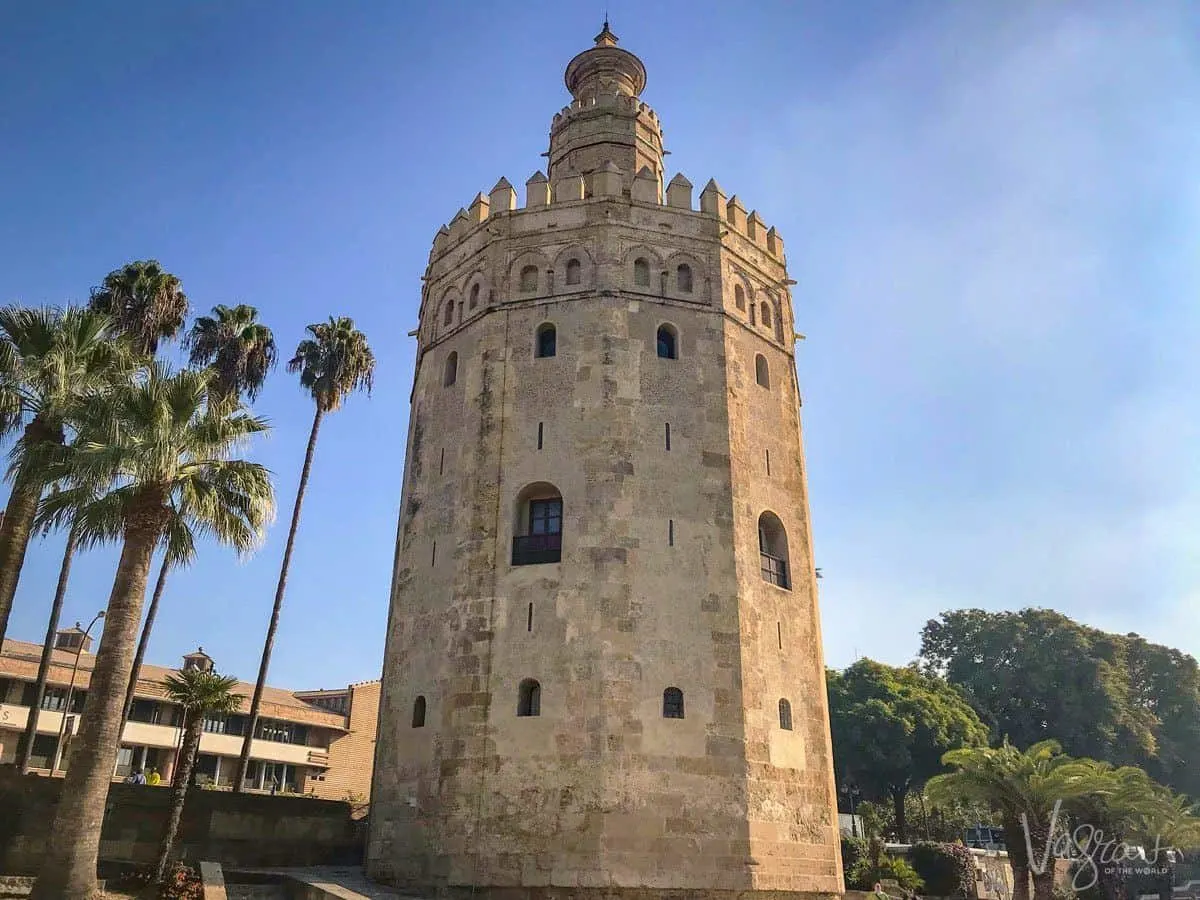
Visiting Torre del Oro
Tickets for Torre del Oro
- Entry is Free on Mondays
Opening Hours
- Monday to Friday: 9:30 a.m. to 6:45 p.m.
- Saturday and Sunday: 10: 30 AM to 6: 45 PM.
- Holidays: Closed.
Casa de Pilatos
Allow at least one hour to visit Casa de Pilatos.
One of Seville’s lesser-known treasures, the stunning mansion built between the 15th – 16th-centuries, while on a smaller scale, is on par with the Royal Alcázar.
Casa de Pilatos (Pilate’s House) is renowned for its grand patio, exquisite gardens, and collection of coloured azulejos tiles.
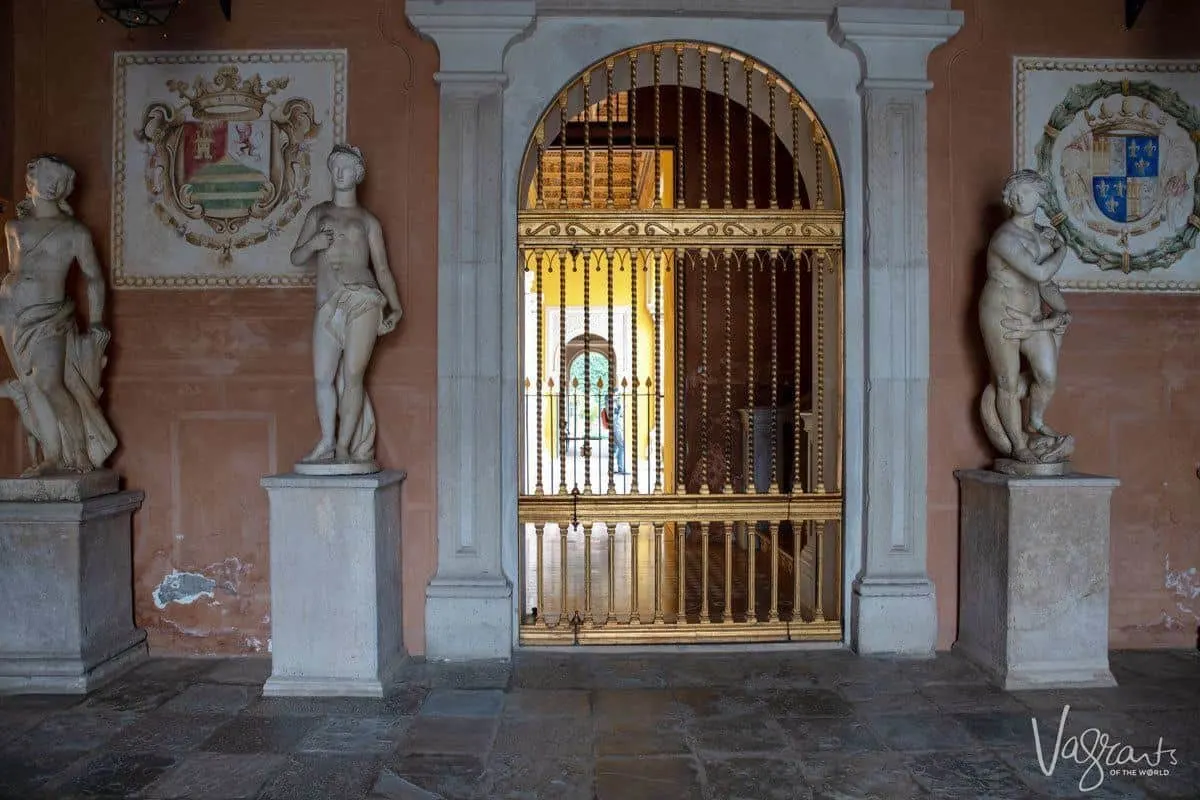
One of the largest collections of azulejo tiles in the world, Casa de Pilatos, has over 150 different azulejo designs by brothers Diego and Juan Pulido in the 1530s’.
The palace was a key film location in the 1962 movie Lawrence of Arabia and has since been the location for the movie Knight and Day with Tom Cruise and Cameron Diaz and two Ridley Scott films.
The present Duchess of Medinaceli still lives with her descendants and family in a private wing of the palace.
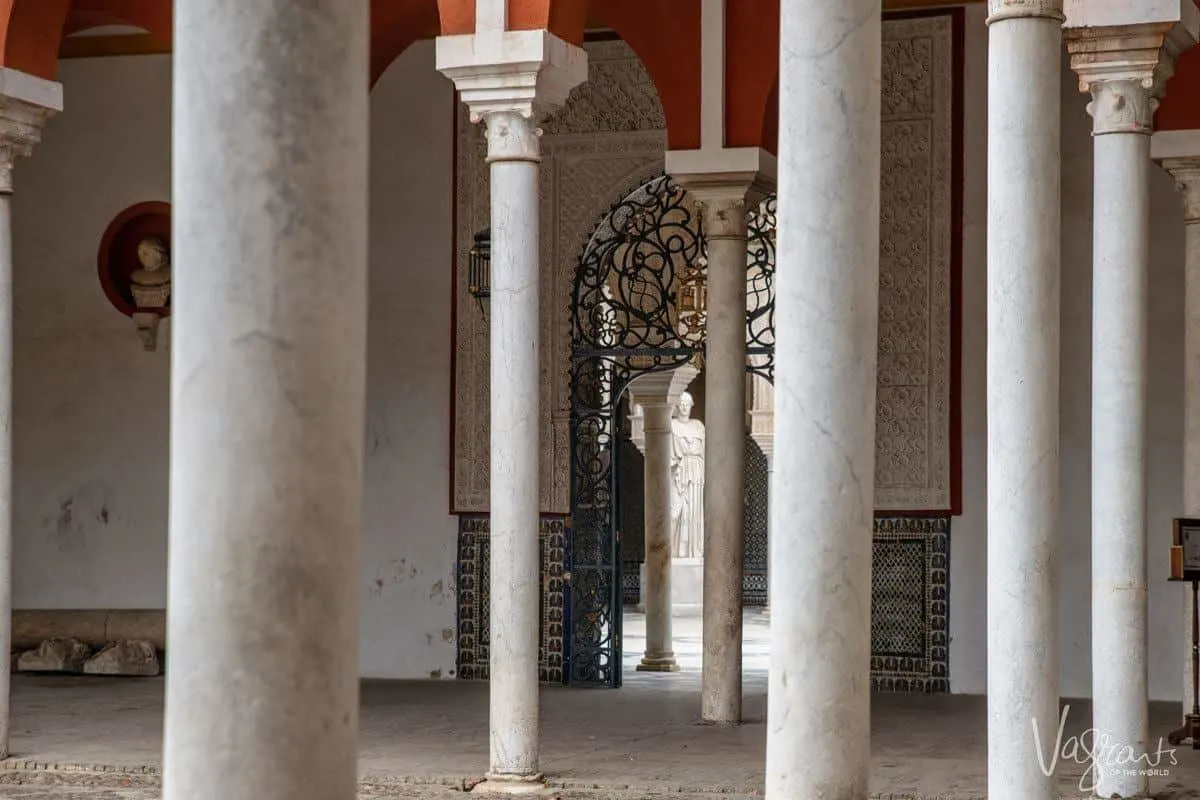
Visiting Casa Pilatos
Entry
You can choose to visit only the ground floor or both the lower and upper floors. Different entry fees apply. Tours of the upper floor are guided only. Each tour is approximately half an hour.
- Entry is free from 3 p.m. on Wednesdays for EU citizens. Show your ID card or passport at the entrance.
Opening Hours
- November to March: 9.00 a.m. to 6.00 p.m.
- April to October: 9.00 a.m. to 7. oo PM
Explore Sevilles Neighbourhoods
Seville’s neighbourhoods’ “barrios” sprawl outward from the city’s central sightseeing hub, El Centro. While the barrios of Seville may not be home to some of the big-ticket attractions, there is still plenty of reasons to explore them.
Venture beyond the centre, and you’ll not just glean a little insight into Sevillano culture; you’ll find in Seville, there’s a hidden gem around every corner. Here are just a few reasons to explore the neighbourhoods of Seville.
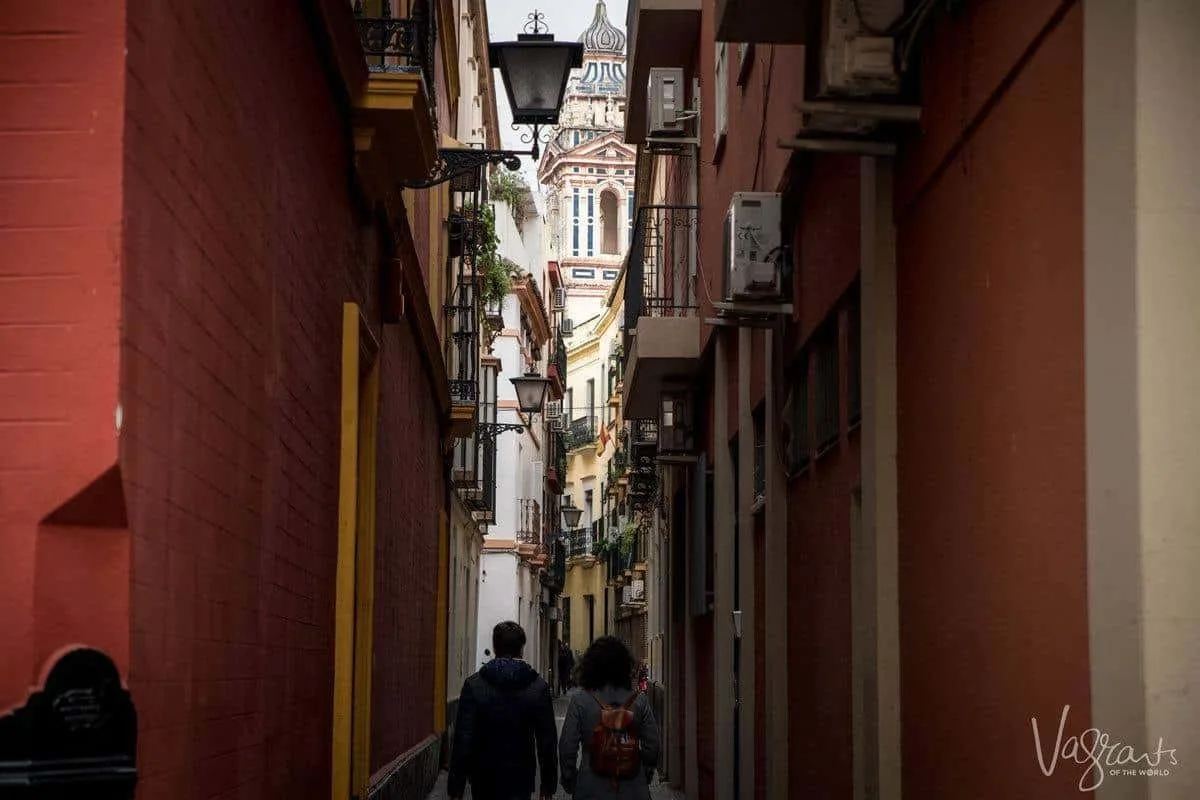
Round Plaza Plaza del Cabildo
In the Arenal neighbourhood, you will find Plaza del Cabildo, only a short distance from the Cathedral but rarely discovered by visitors. The wonderfully ornate round plaza is one of the few round plazas in Seville.
Access to the plaza is via three discreet arcades through the building that forms the semi-circular plaza. Perhaps this is how it remains one of the cities best-kept secrets.
On a Sunday morning, you will find a collectors market in the plaza that attracts collectors of stamps, antiques and all kinds of curiosities. There is a restaurant inside the plaza and a shop that sells confectionaries produced by local convents.
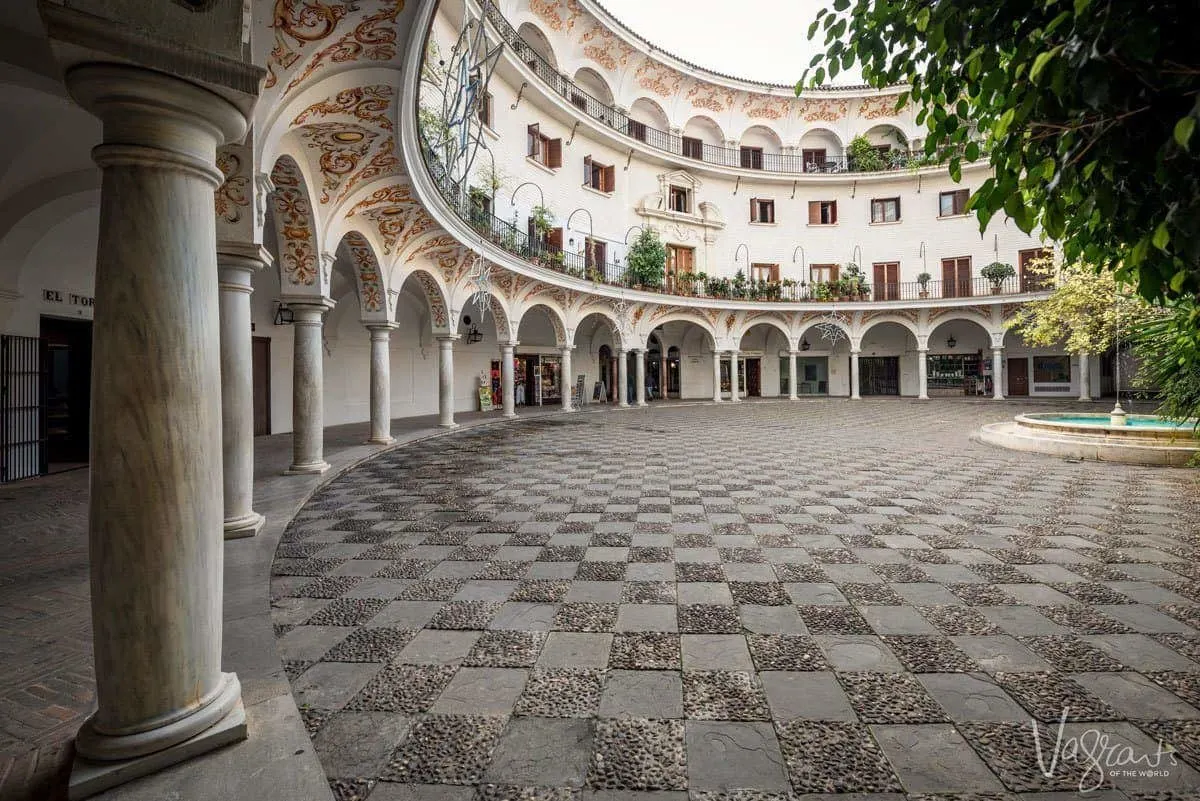
Get Lost in Barrio Santa Cruz The Jewish Quarter
Allow at least 2 hours to explore Santa Cruz.
Barrio Santa Cruz is one of the most ancient and authentic areas of the city. Before the Spanish Inquisition in the late 15th Century, Santa Cruz was Seville’s Jewish quarter. Many of the churches in the barrio were originally synagogues.
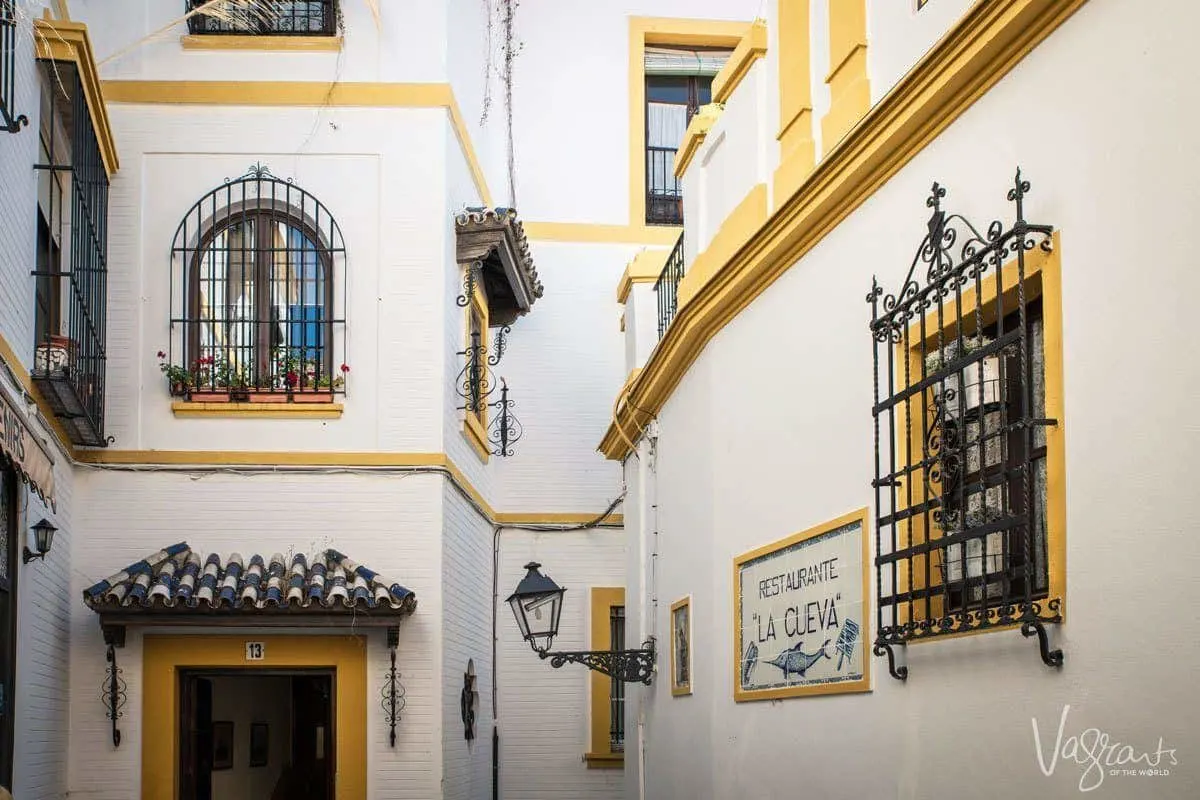
This charming neighbourhood is the place to get lost in Seville. Known for its artisan shops and tapas bars, strolling the little twists of streets and plazas, you can get an understanding of ancient Seville. Be on the lookout for the narrowest street in the city – Calle de los Besos, the street of kisses, and don’t miss the Patio de las Banderas.
Barrio Santa Cruz is adjacent to Seville’s El Centro neighbourhood, only a short walk from the Cathedral.
Santa Cruz Walking Tour Recommendation.
Take a Santa Cruz walking tour to experience the best of Seville’s most atmospheric barrio. Learn the stories and legends that help shape Andalucían traditions and the cultures in Seville and get some local insight on the best places to visit, eat and drink.
One hour tours start for as little as €15. See here for more details.
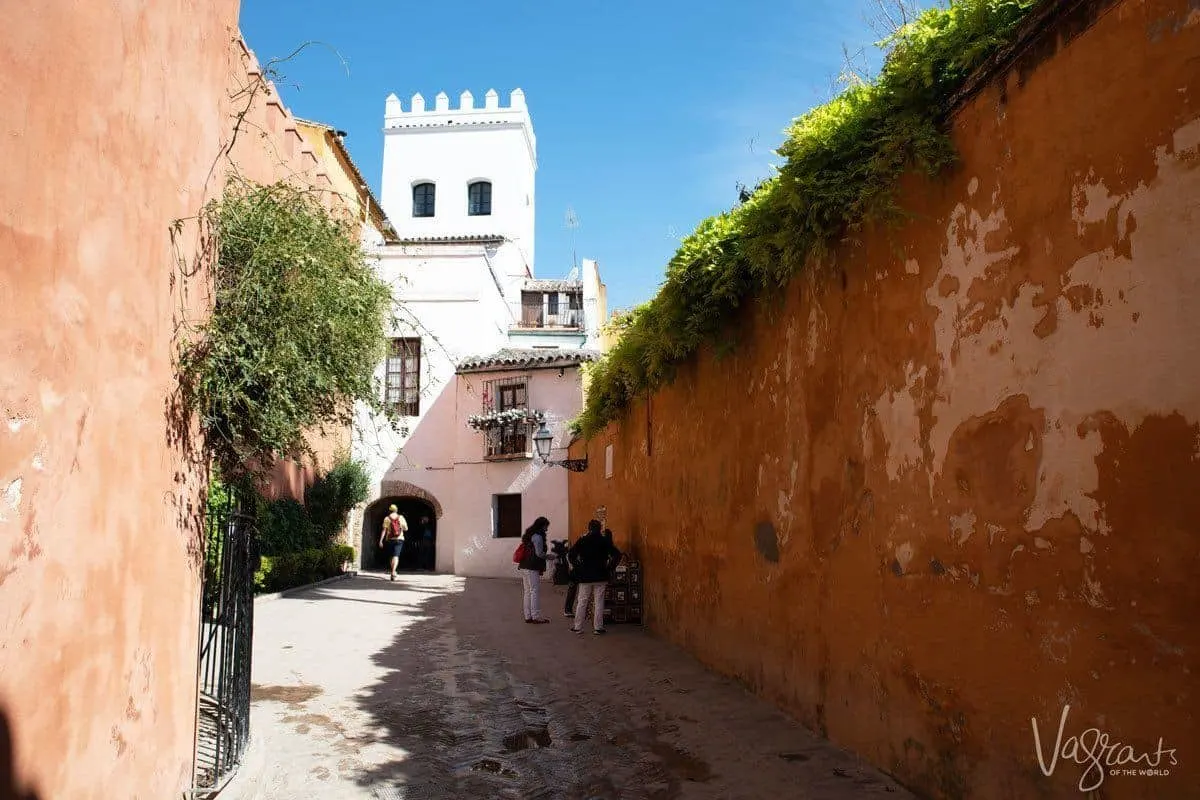
Experience The Vibrance of Triana
Allow at least 2 hours to explore Triana.
The former Gypsy quarter on the west bank of the Guadalquivir River, Triana is a working-class barrio with a colourful history filled with legends of bullfighters, sailors, and flamenco culture.
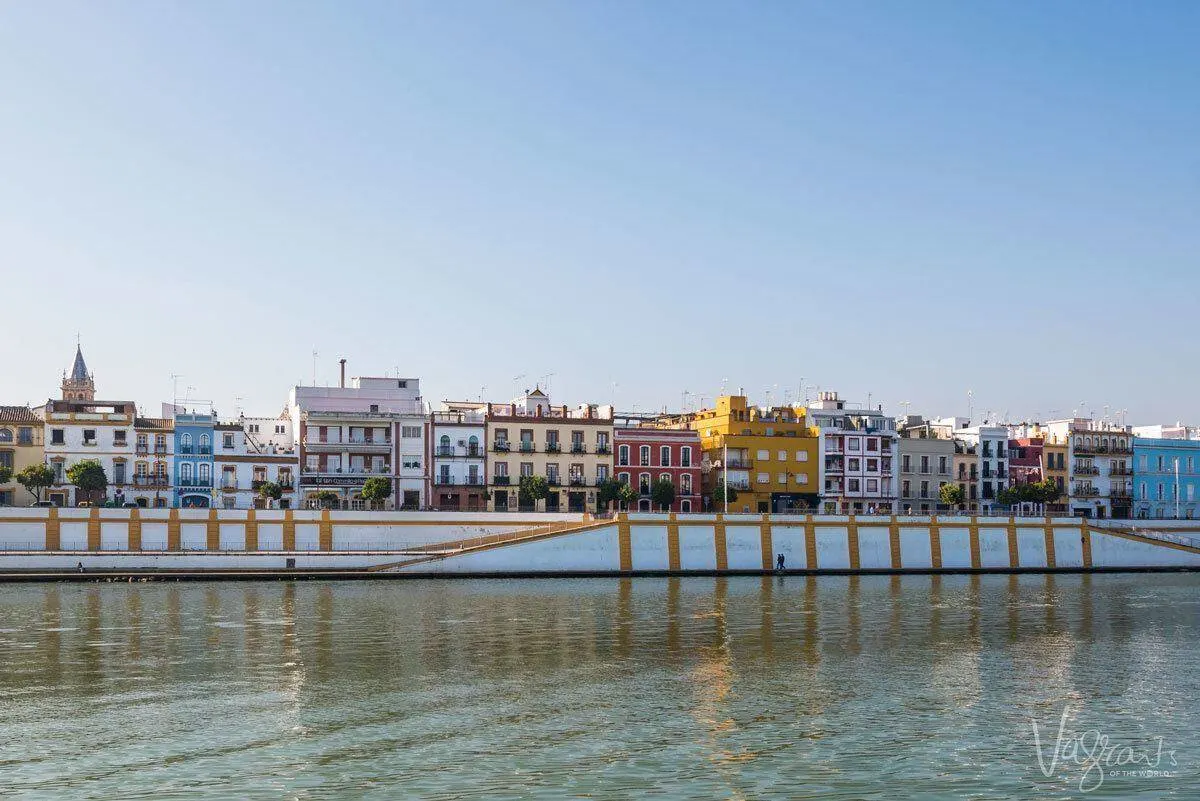
Once considered a neighbourhood for outsiders and not a very enticing area for tourists, Triana has come into its own. A resurgence of restaurants and nightlife entertainment has lured visitors to discover one of Seville’s most fascinating and colourful neighbourhoods.
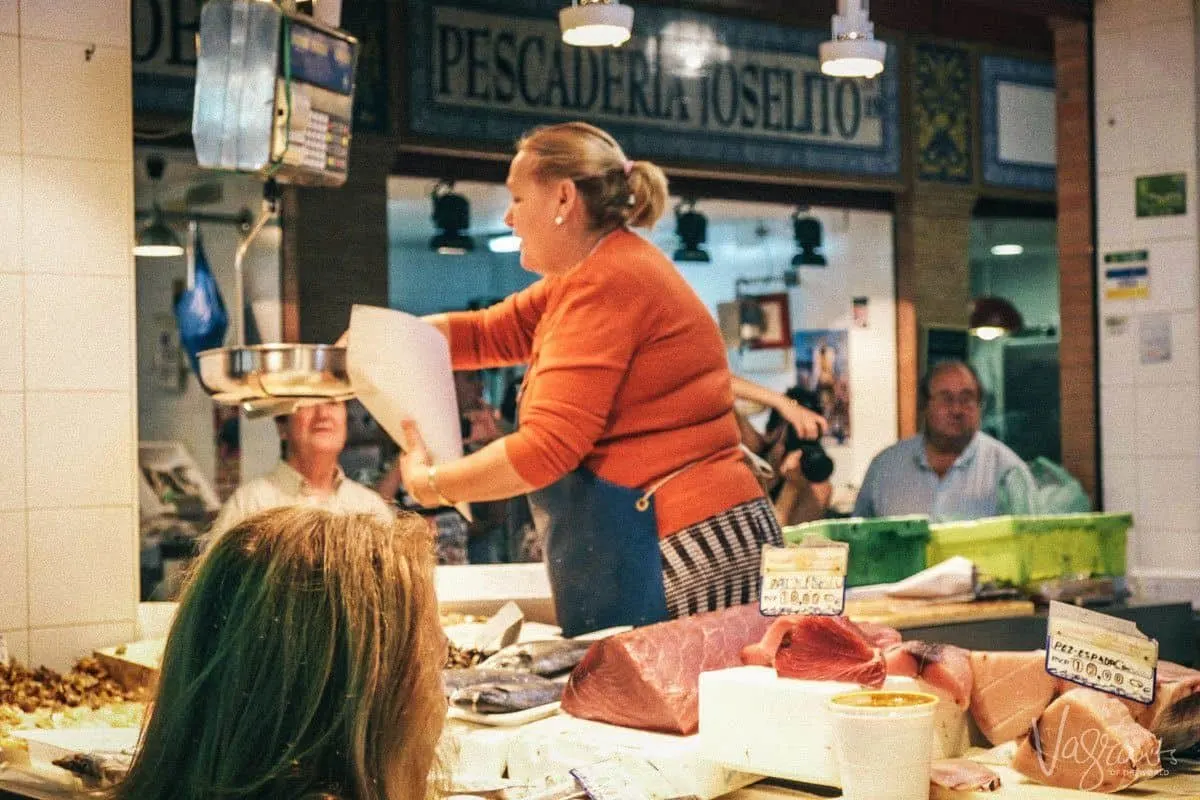
Things to do in Triana
Stop for lunch or dinner at the Mercado de Triana built on the ruins of the Castillo de San Jorge, the headquarters and prison of the Spanish Inquisition.
Search out the traditional azulejos ceramics the area is famous for around the Centro de la Cerámica Triana ceramics museum. Discover the old Gypsy communes of the Roma people on Calle Castilla 16 or enjoy an authentic flamenco show at a local Peña club (more on this later).
Find Sanctuary in Plaza Santa Marta
A stone’s throw from the Cathedral is a quiet oasis barely known by local Sevillano’s. Plaza Santa Marta, a charming whitewashed cobblestone nook, is what remains of the Santa Marta hospital founded in 1385.
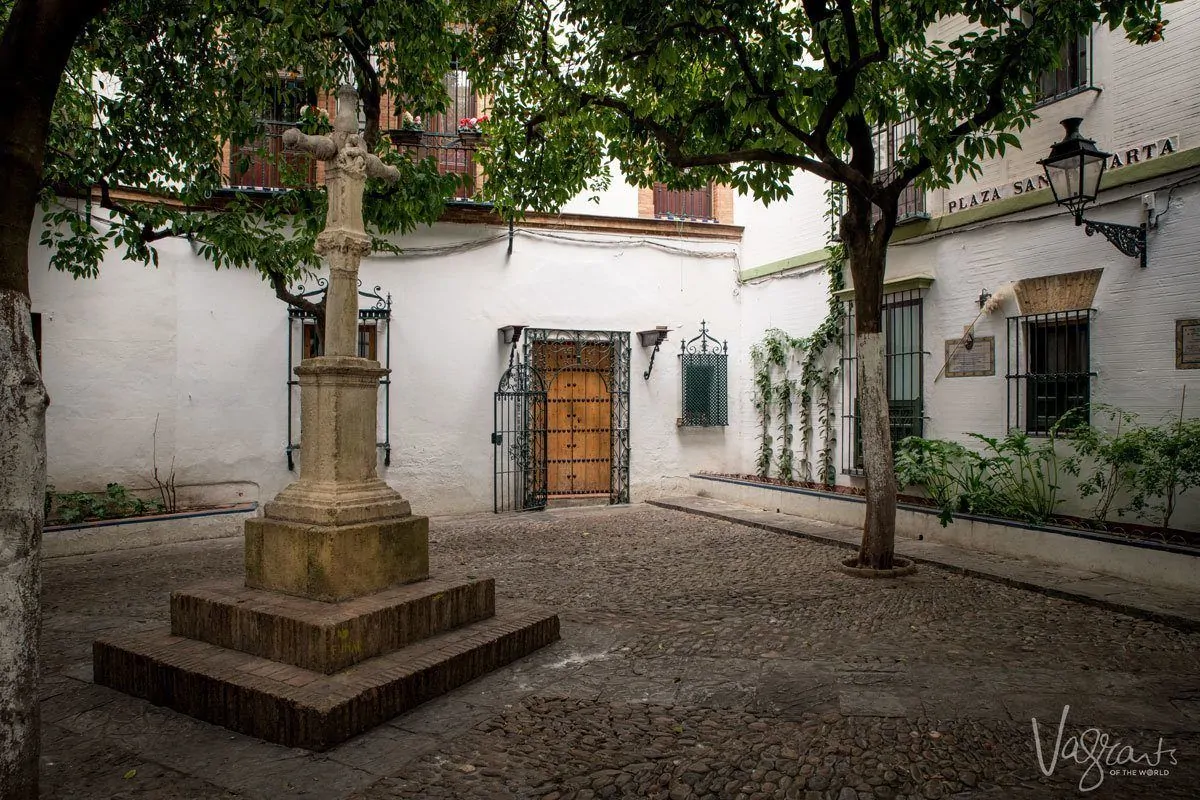
Off the busy Plaza Virgen de los Reyes, where horse-drawn carriages and tourists vie for space in the shadow of the Cathedral, the small alleyway of Santa Marta is hardly visible among the hive of activity.
At the end of the alley, the Plaza Santa Marta reveals itself – A peaceful, secret sanctuary. A lovely spot to rest in the shade of orange trees and appreciate the history of Seville.
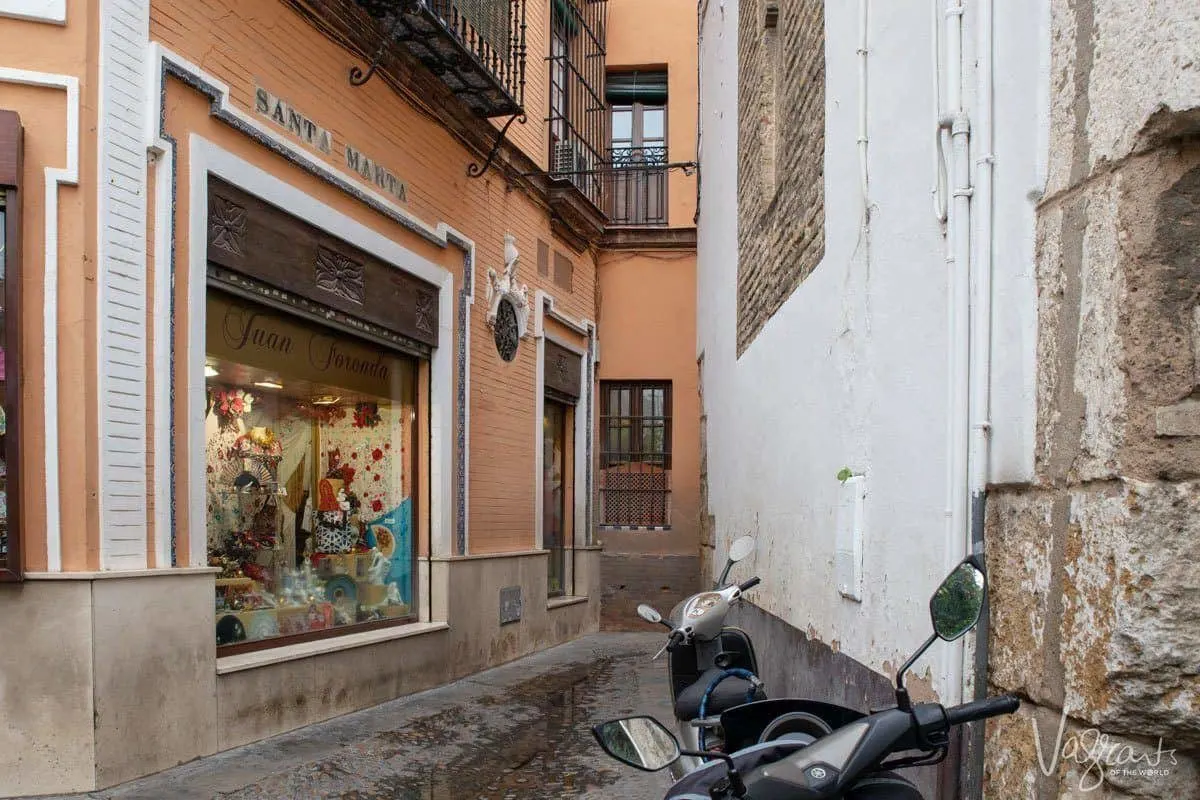
Buy Centuries Old Convent Sweets From A Closed Convent
As Trappist monks are famed for their beer-making, Spanish nuns are celebrated for their sweets. One of the oldest Spanish traditions is buying homemade sweets and jams from a closed convent using centuries-old recipes.
What makes this a unique experience is that the nuns are not allowed to leave the convent or have contact with any person not belonging to the order.
While the nuns distribute their sweets for sale throughout Seville, there is nothing quite like buying from the source at the closed convent.
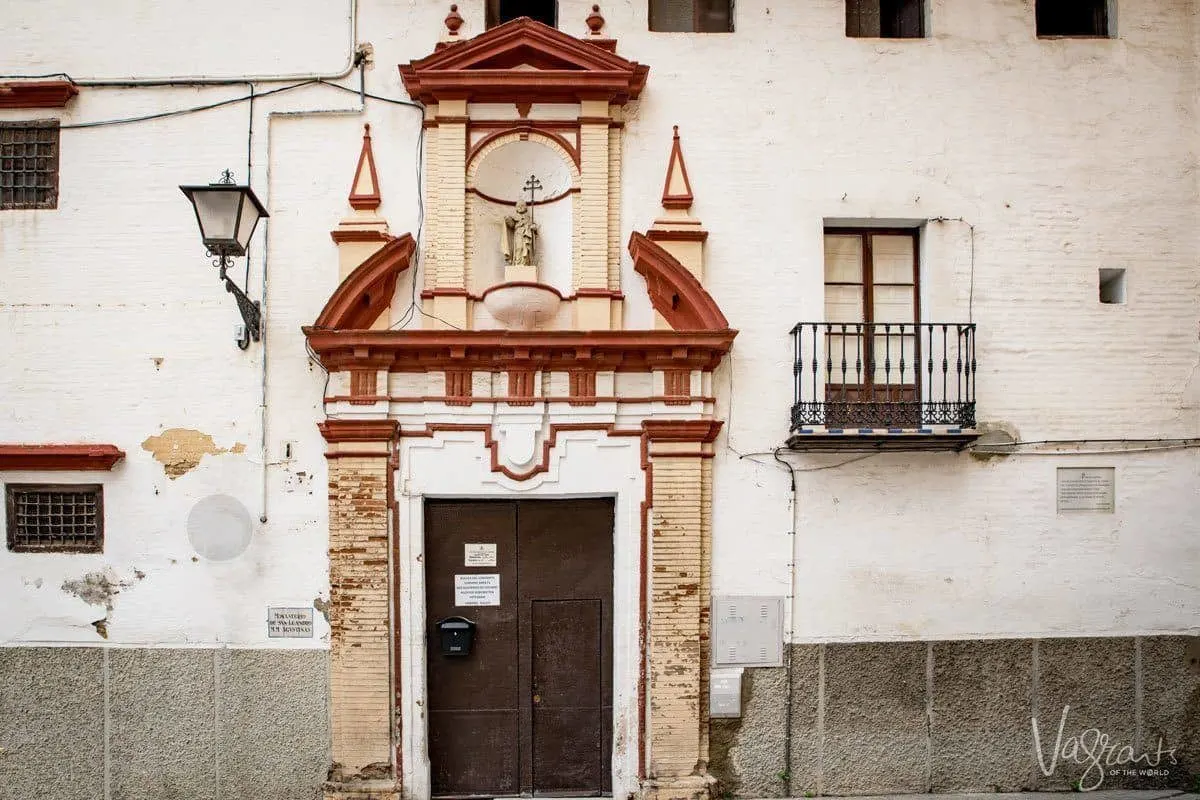
To procure the sweets, the instructions are very similar in each convent.
For over four centuries, the Convento de San Leandro nuns have produced for sale one simple sweet – Yemas de San Leandro. Melt in your mouth sweets made simply with sugar, lemon juice, and egg yolks.
At the 13th-century convent, in the courtyard, you will find a price list. Ring the bell and place your money on a tray in an old, wooden revolving door. Soon after, your order will appear, and your transaction with the nuns complete.
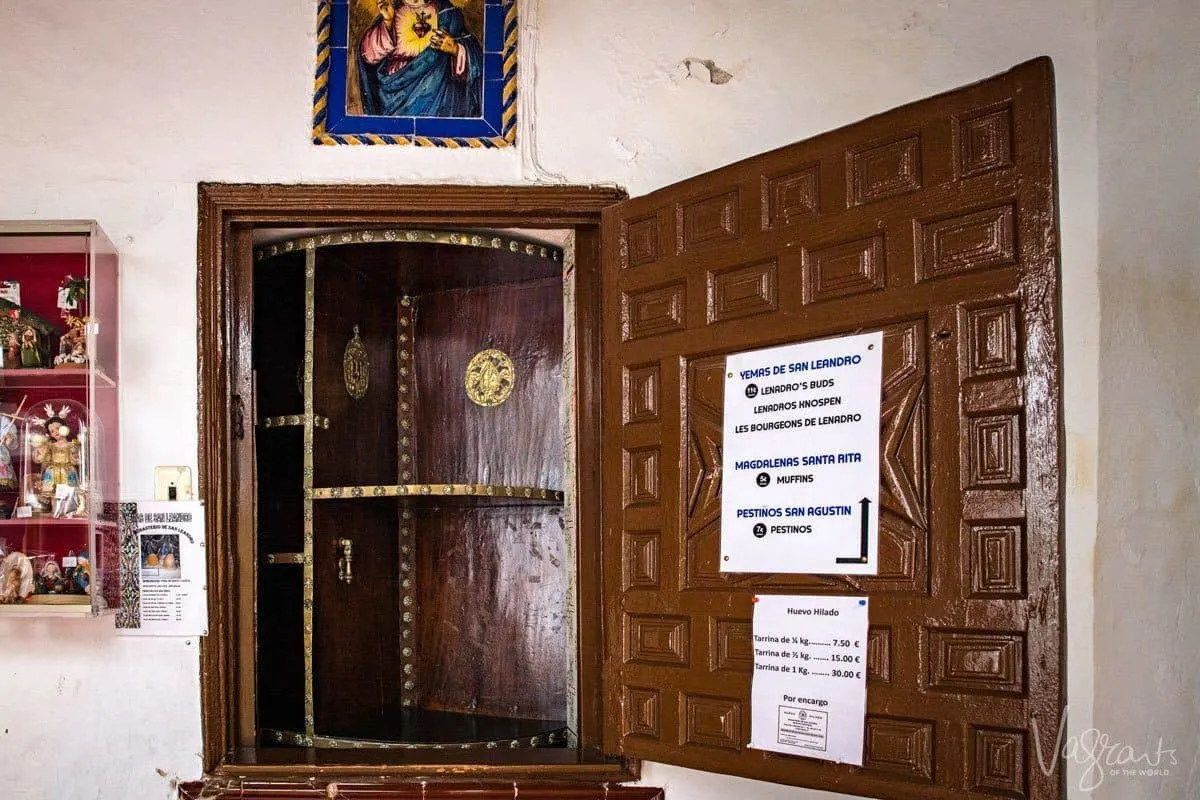
Other convents in Seville known for their sweets are: Convento de Santa Inés for their bollitos de Santa Inés, Santa Paula for their jams, San Clemente for their cider filled empanadillas and lightly-fried, honey-glazed pestiños, Madre de Dios for their naranjitos and Santa Ana for their carmelitas.
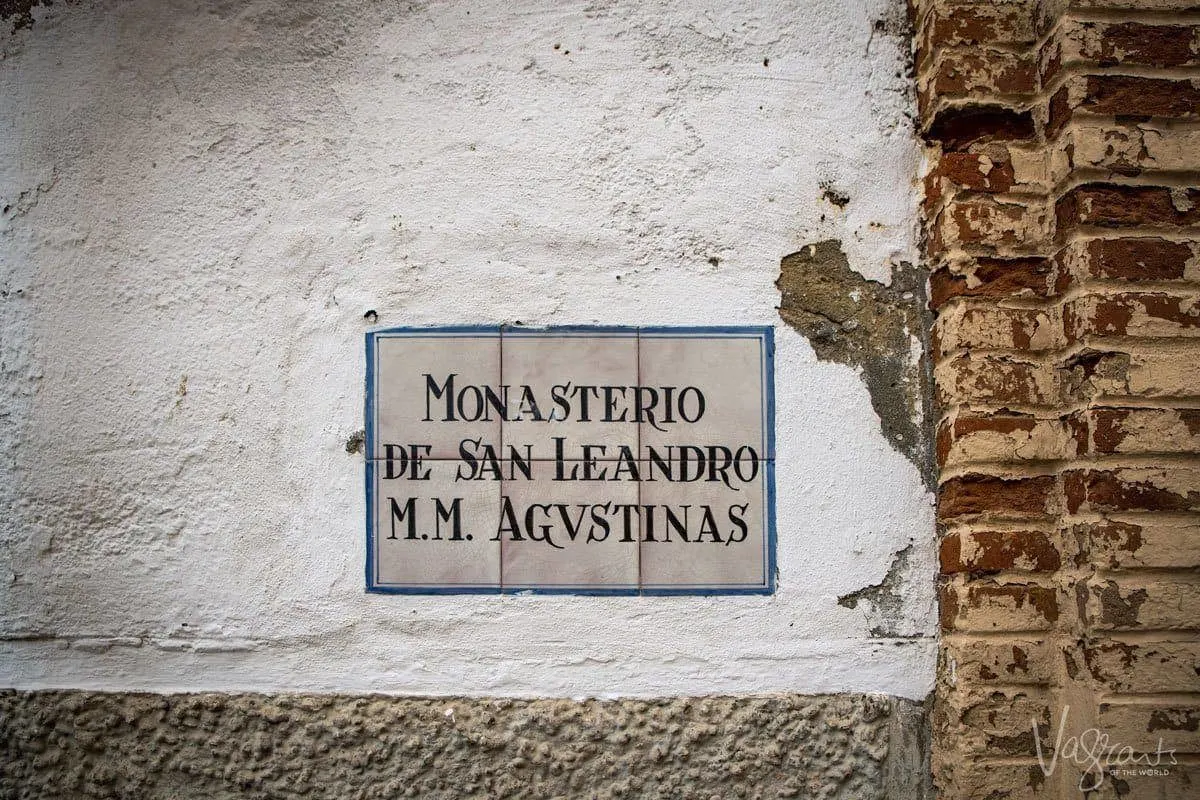
Visiting Convento de San Leandro
Opening Hours: Sweets are available for sale at Convento de San Leandro from 9 a.m.–1 p.m. and 5–7 p.m. Many of the convents will observe similar “siesta” hours.
Cost: Most sweets are sold by weight. Expect anywhere from €5 – €30.
Seville City Gates
13th century Seville was surrounded by a 7km wall, 13 main gates, six secondary gates, and 166 towers. During the revolution of 1886, the walls were demolished to expand the city, leaving only a few stretches intact.
The only three city gates that remain are the Puerta de la Macarena, the Postigo del Aceite and the Puerta de Córdoba.
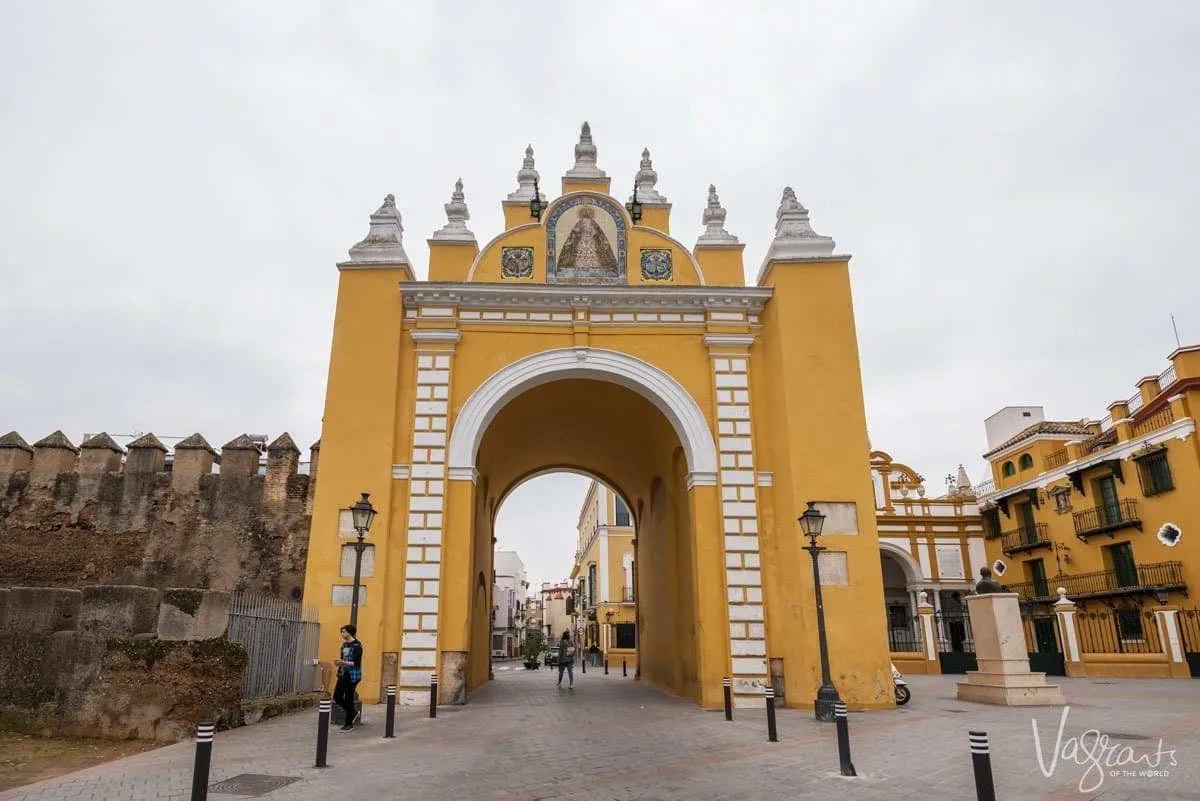
Macarena Gate
From the Macarena gate, one of the most beautiful of the three that remain, you can experience a very local side of Seville. While not as atmospheric as Santa Cruz or Triana, the Macarena district still has a few gems to offer.
The Basilica de la Macarena is home to two of the most impressive floats in the city’s fervent Semana Santa holy week, as well as one of Seville’s most revered treasures –the Weeping Virgin Virgen de la Esperanza Macarena. The magnificent statue stands behind the main altar adorned in all her golden glory, complete with crystalised tears.
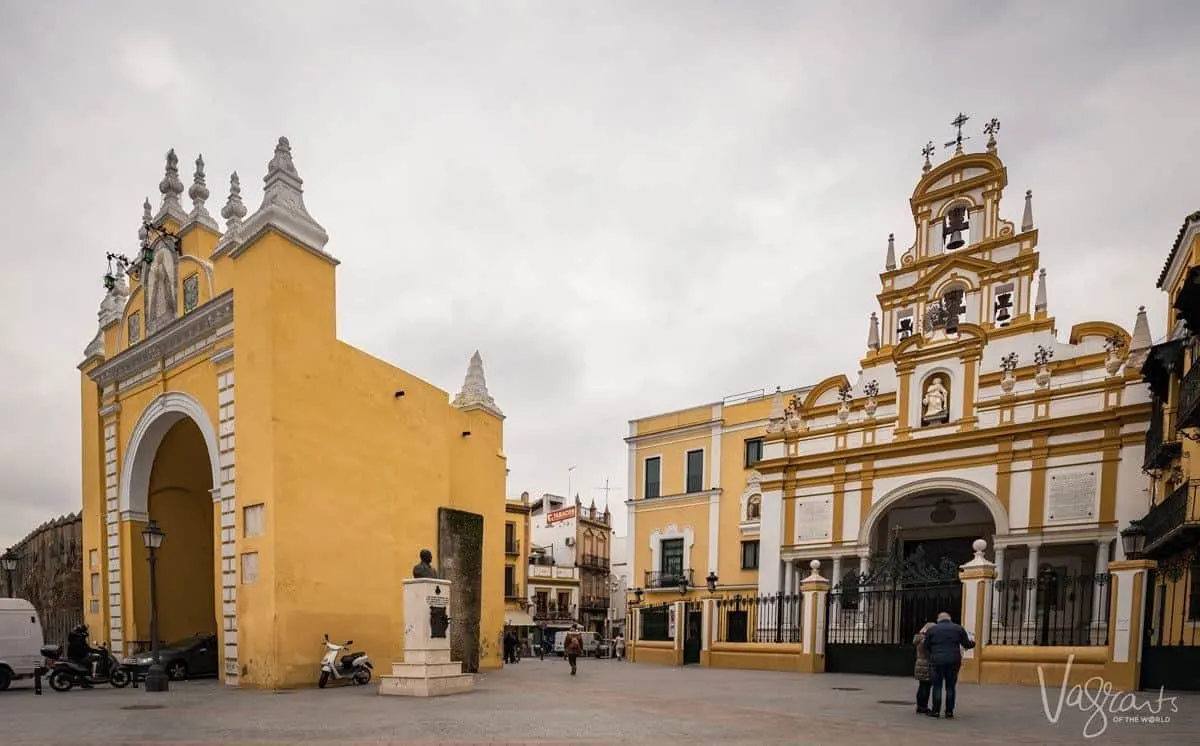
The Macarena neighbourhood is where you can see the remaining stretches of the 12th-century city walls, which run between the Macarena gate and Puerta de Córdoba.
Opening Hours of The Basilica de la Macarena and the Brotherhood of the Macarena Museum Treasure
June 4 to September 16:
- Monday to Saturday: 9.00 a.m. to 2:00 p.m. | 6:00 p.m. to 9:30 p.m.
- Sundays and Holidays: 9.30 a.m. to 2:00 p.m. | 6:00 p.m. to 9:30 p.m.
September 17 to June 2:
- Monday to Saturday: 9.00 a.m. to 2:00 p.m. | 5:00 p.m. to 9:00 p.m.
- Sundays and Holidays: 9.30 a.m. to 2:00 p.m. | 6:00 p.m. to 9:30 p.m.
Postigo del Aceite
At Postigo del Aceite (oil gate), situated in the old fish market, you will find Mercado El Postigo, the craftwork market of Seville. A gallery-style space selling local artwork and artisan pieces.
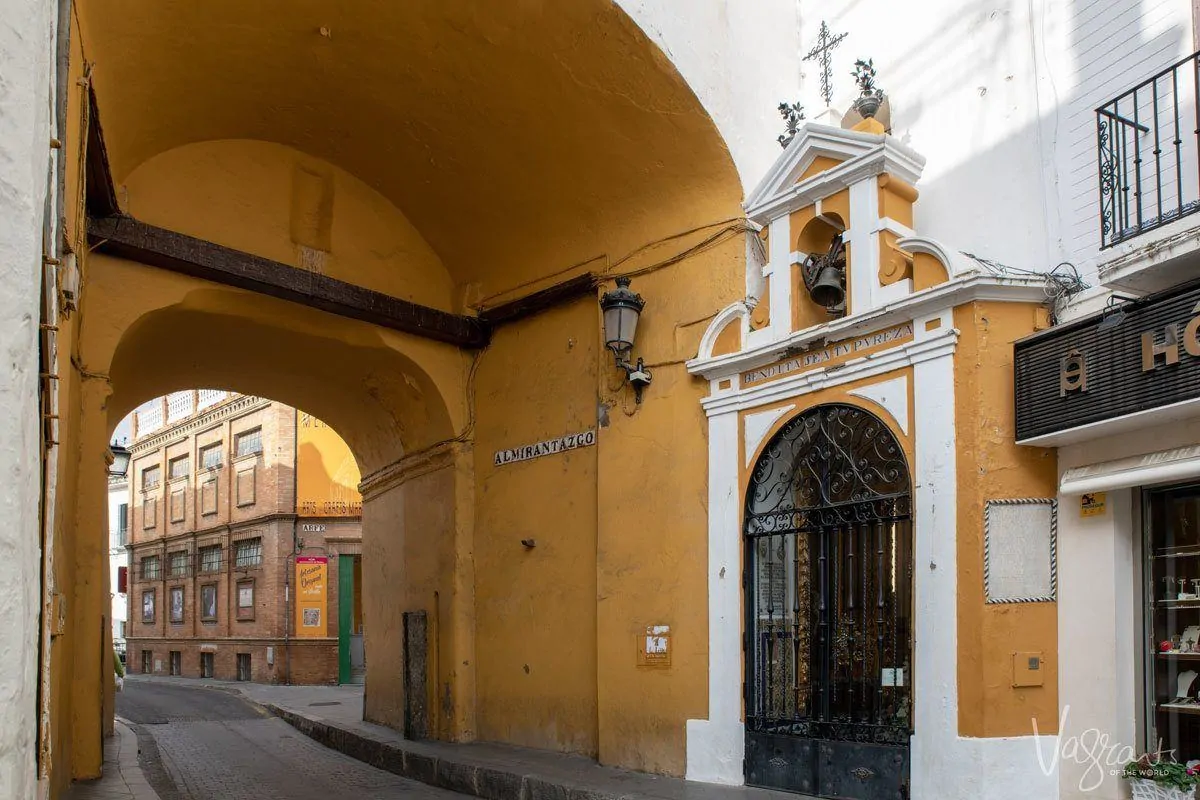
See Sevilles Most Treasured Art Collection at Hospital de los Venerables
Allow 1–2 hours to visit Hospital de los Venerables
A collection of Seville’s most cherished artworks are housed in a hospital established for sick and ageing clergy in 1673 – Hospital de los Venerables.
In 1840 the priests, then bankrupt, were moved from the hospital and the building taken over by a textile manufacturer. Eight years later, the building was returned to the priests by Royal Order. The clergy still owns it to this day.
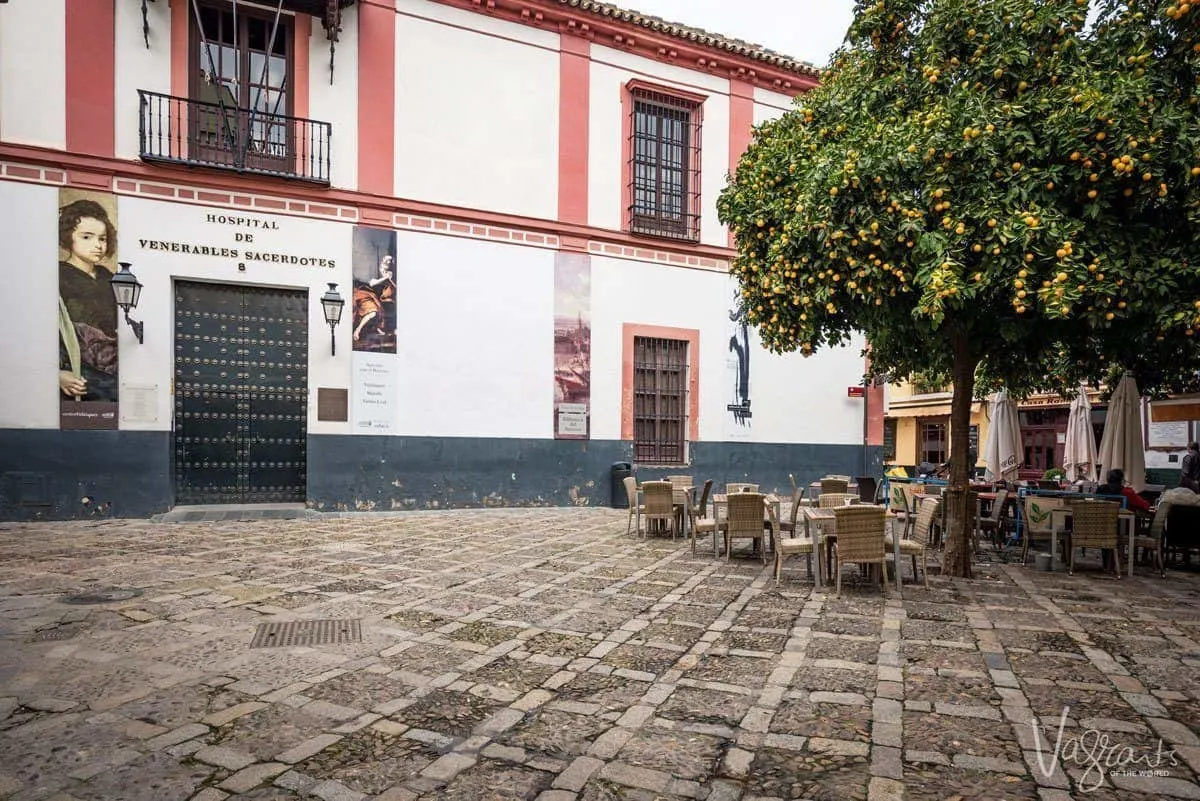
The former hospital, now a museum, has been restored and houses a small but significant collection of paintings from the Spanish Golden Age. You’ll find famous Spanish painters such as Martínez Montañés, Diego Velasquez, and Francisco Varela, as well as many temporary exhibitions.
In 1868, the quaint Plaza de los Venerables where the hospital is situated was named after the priests.
Opening Hours: The museum has limited opening hours: Thurs–Sun 10 a.m.–2 p.m.
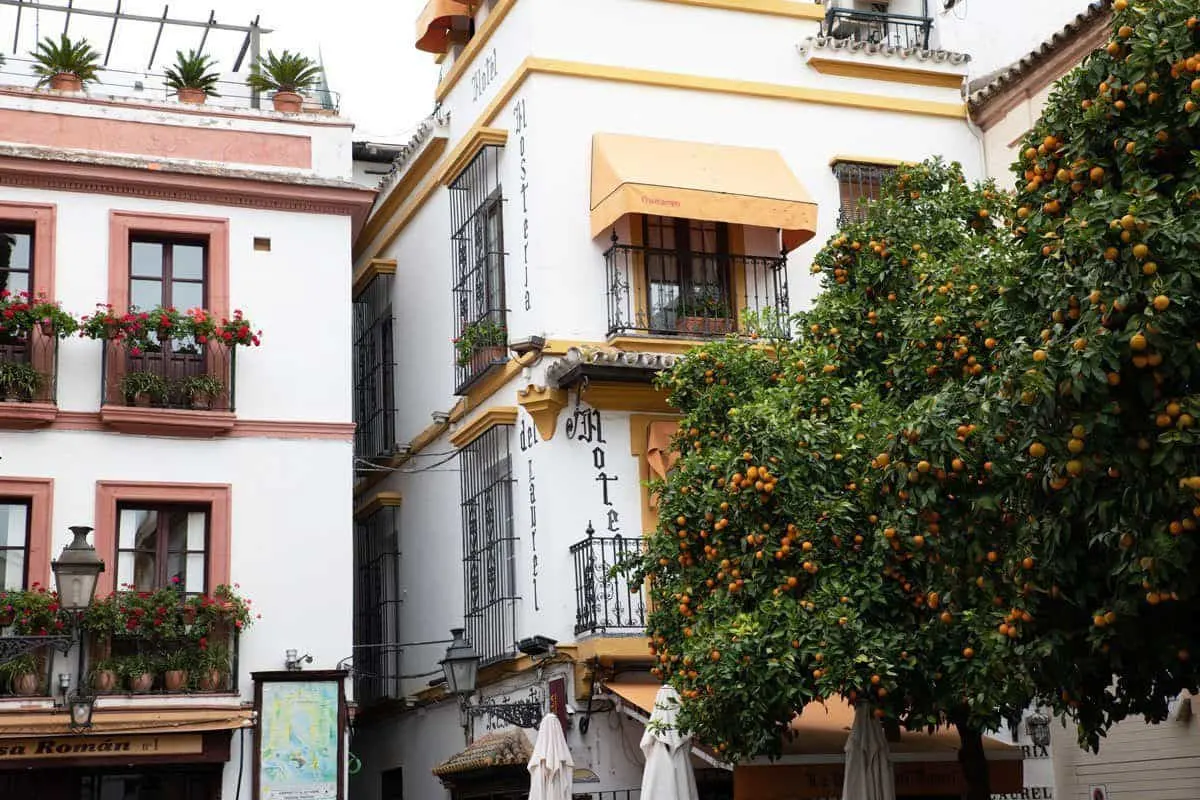
Indulge in Banos Arabe The Arab Baths of Seville
A legacy of the Moorish invasion is a love for water and the indulgence of an authentic hammam. Seville has some beautiful Arab baths – baños arabes where you can still indulge in the ancient bathing experience.
Deep in the Jewish quarter is an ancient Moorish Hamman located in a beautifully restored 16th-century palace. Aire de Sevilla houses an ancient subterranean bathhouse where you can enjoy thermal baths and spa treatments in the same luxuriant setting relished by Romans and Arabs centuries ago.
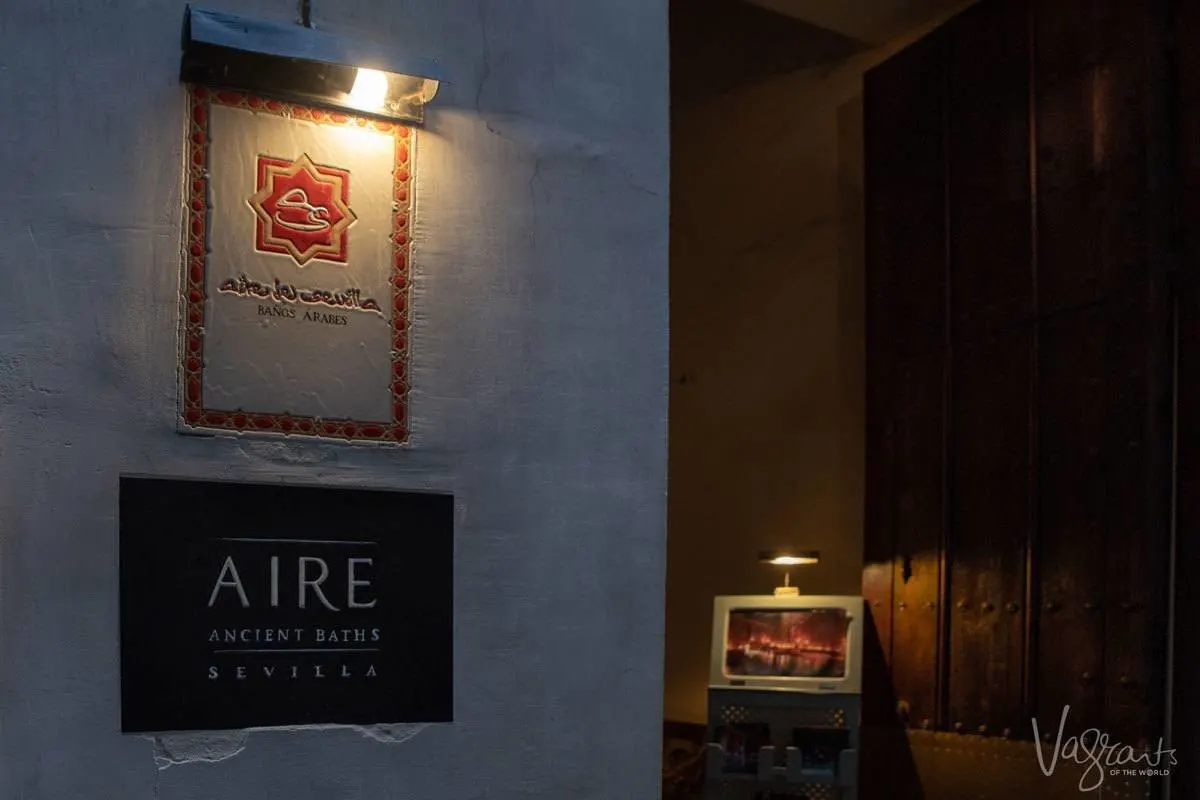
Set in elegantly candlelit crypts, you can enjoy different temperature baths and hydrotherapy pools and a selection of exclusive treatments, including massage, a steam room, a tea room and a rooftop terrace with views of the Giralda tower.
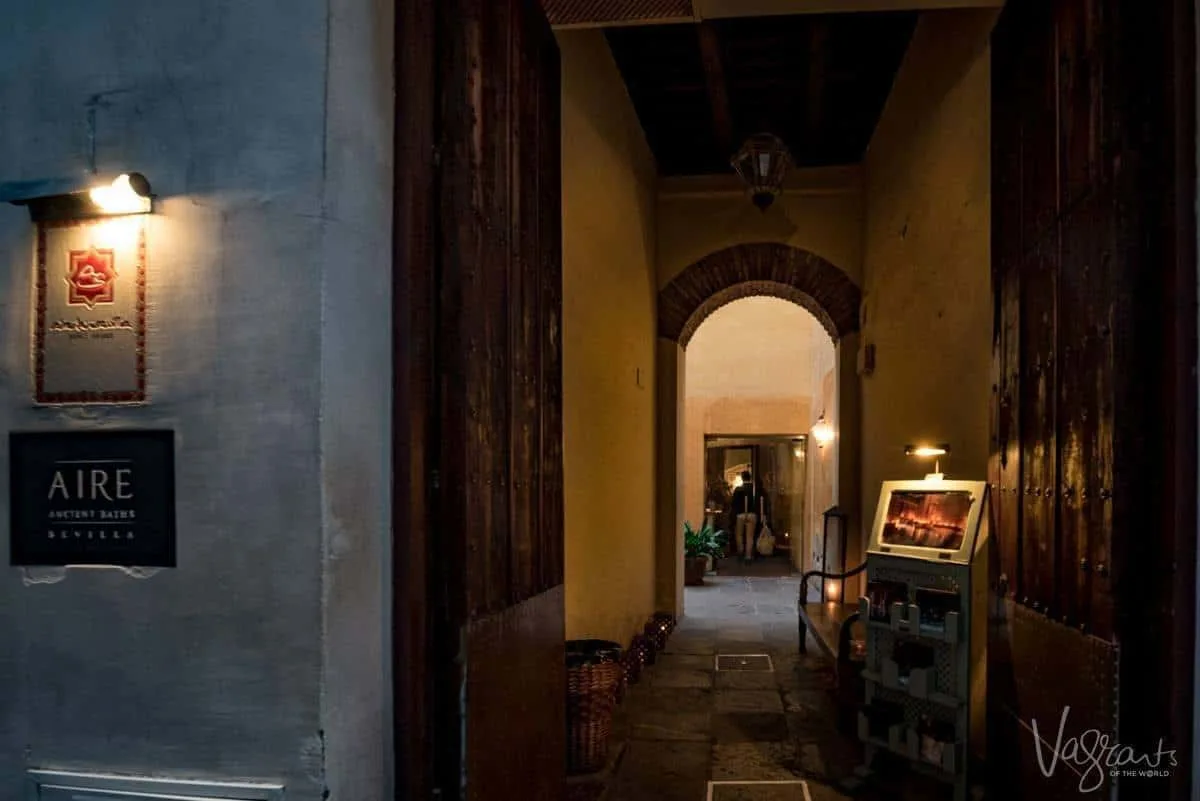
For a truly relaxing experience, visit in the morning on weekdays when it is less crowded. Monday–Thursday, you will also find prices are also slightly discounted.
Visiting Aire de Sevilla
Aire de Sevilla, Calle Aire, 15, 41004 Sevilla, Spain
Cost of Aire de Sevilla: Expect to pay anywhere between €35 – €180 depending on the treatment or duration of the visit. See the Aire de Sevilla website for details.
Opening Hours: Every day: 9.00 a.m.–10.30 p.m.
Find The Best Flamenco in Seville
Flamenco is in Seville’s blood. A fusion of Spanish folklore and sounds from the Mediterranean, India and North Africa.
In Seville’s working-class district of Triana, flamenco found its place in the late 18th and early 19th centuries. Andalucía’s Roma people sang evocatively about their lives and struggles, cementing flamenco in Seville’s history.
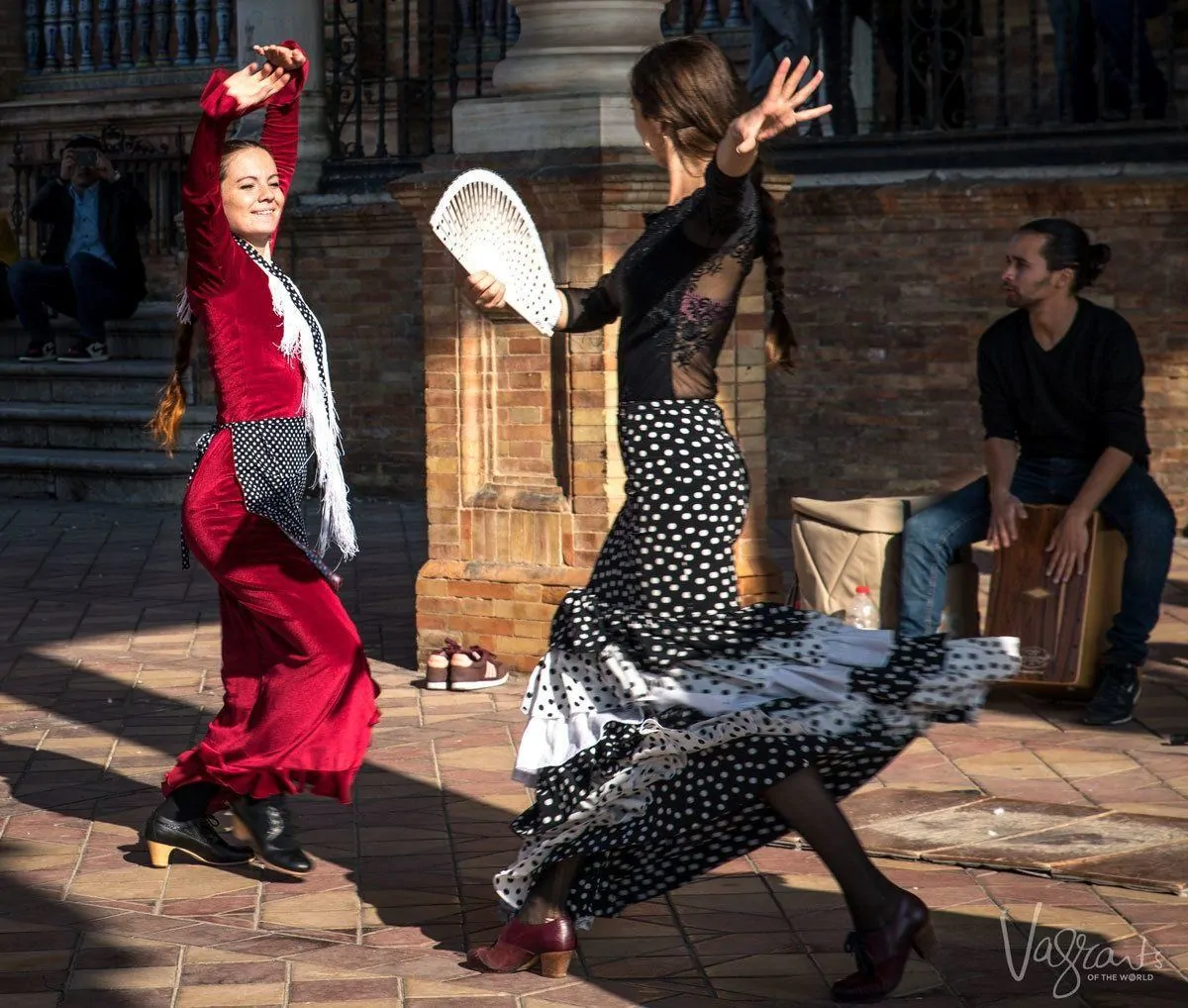
In 2010 Unesco listed flamenco as an Intangible Cultural Heritage, and Seville continues to stand at the forefront of the cherished art.
In Seville, there are many ways to discover the fascinating art of flamenco beyond just seeing a show.
See Authentic Flamenco at a Penas Flamencas
Forget heading to the mainstream Tablaos to see a flamenco show. Find a Peñas Flamencas, a social club or cultural association for flamenco artists for an authentic flamenco experience.
The peñas are a place where amateur flamenco dancers can learn, perform, and network with other flamenco artists. Peñas Flamencas are a fabulous place to see flamenco shows in a more local setting.
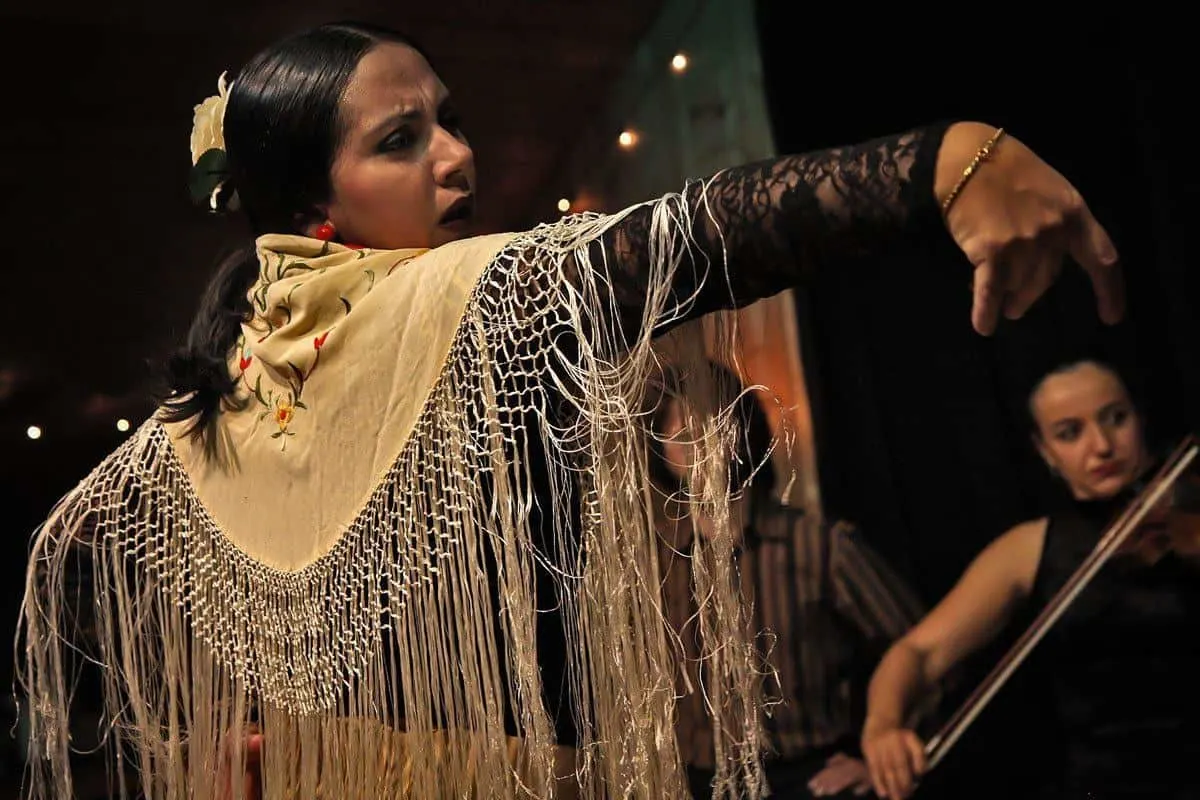
Many of the peñas have a bar and often serve tapas. Prices are always the same or lower than the local bars.
There are many peñas in Seville, and they are easy to find. Ask at your hotel for the closest. One of the more popular ones is Peña Cultural Flamenca Torres Macarena. They have a live show every Wednesday night which attracts a big local crowd.
Arrive early to secure a seat and to enjoy some tapas and drinks in the lovely courtyard. Impromptu performances at the end or after the show are not unusual, which creates a great atmosphere for an aftershow drink.
Entry: A flamenco show at a local peña club is usually either free or by way of a small donation to the club.
Showtimes: Each peña will have different times and nights for shows. Peña Cultural Flamenca Torres Macarena has a show every Wednesday evening starting at around 9.00 p.m. Get there early to save a seat as it is a popular peña.
Peña cultural flamenca torres macarena, Calle Torrijiano, 29, 41009 Sevilla, Spain
You can find more suggestions on where to see the best flamenco in Seville here.
Explore Flamenco Fashion
Get a Tailor-Made Flamenco Dress.
Head to Calle Sierpes and Calle Alvarez Quintero to explore a world of flamenco fashion. Discover shops filled with gorgeous fabrics, flowing and flouncy dresses and high end flamenco wear. You can even have a flamenco outfit tailor-made.
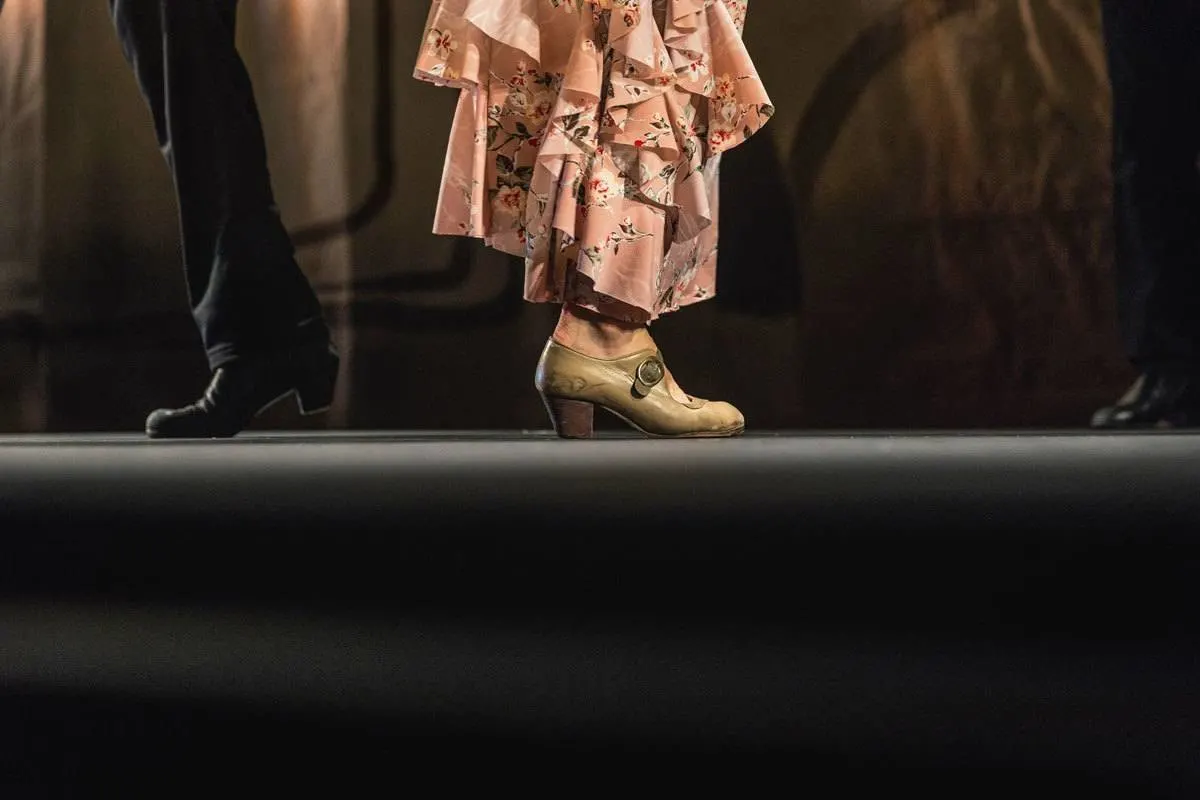
Take a Flamenco Dance Lesson
For a genuinely unique flamenco experience, take a flamenco dance lesson for beginners. Learn the basic body positions, hand gestures, and flamenco rhythm with an experienced flamenco teacher. It is an enjoyable way to experience and understand an art form so integral to Seville’s culture and heritage.
A one-hour flamenco lesson starts at €36 pp. Check here for details.
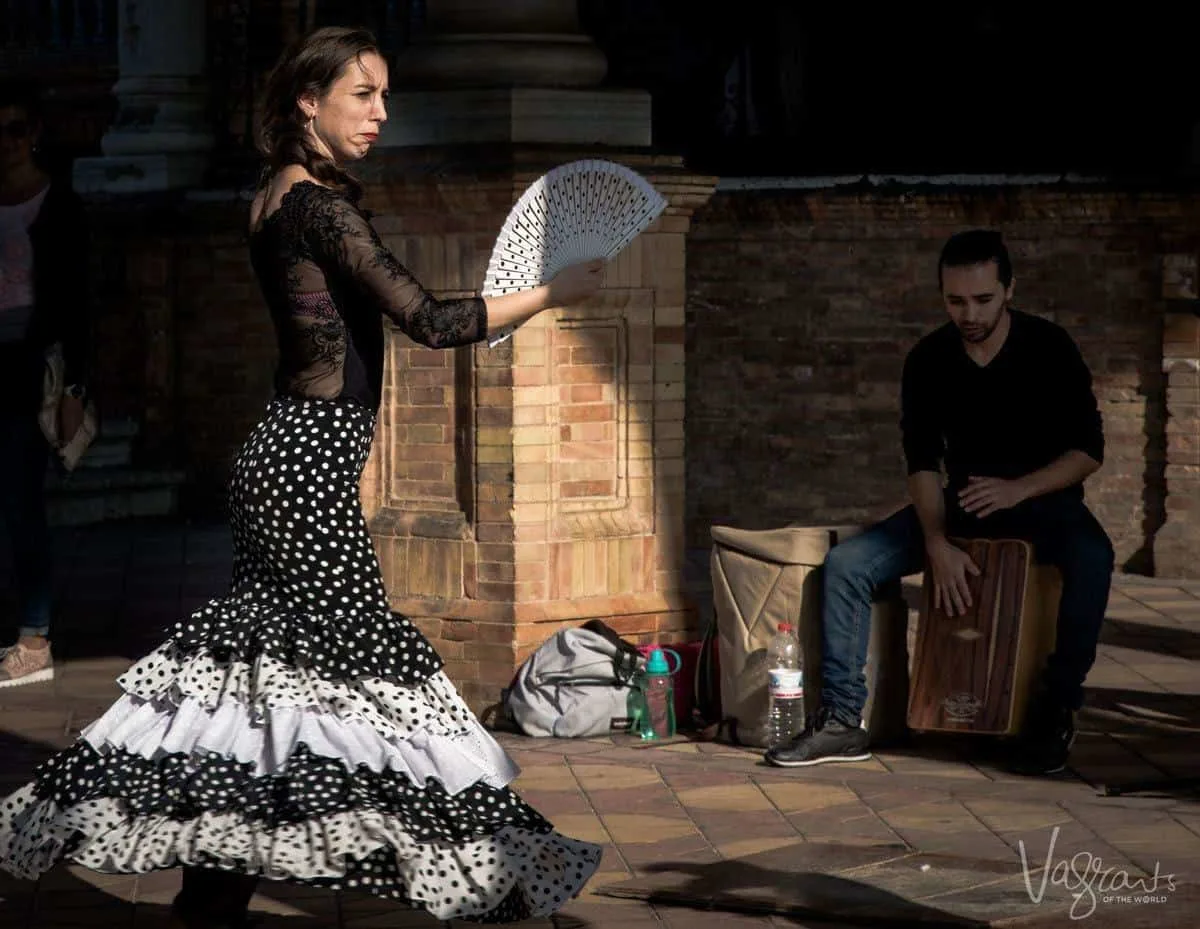
Where to Eat in Seville
Along with flamenco, Seville is the home of tapas, and there is no shortage of places to sample tasty plates of delicious Andalusian ingredients. Seville is the perfect city for a tapas crawl.
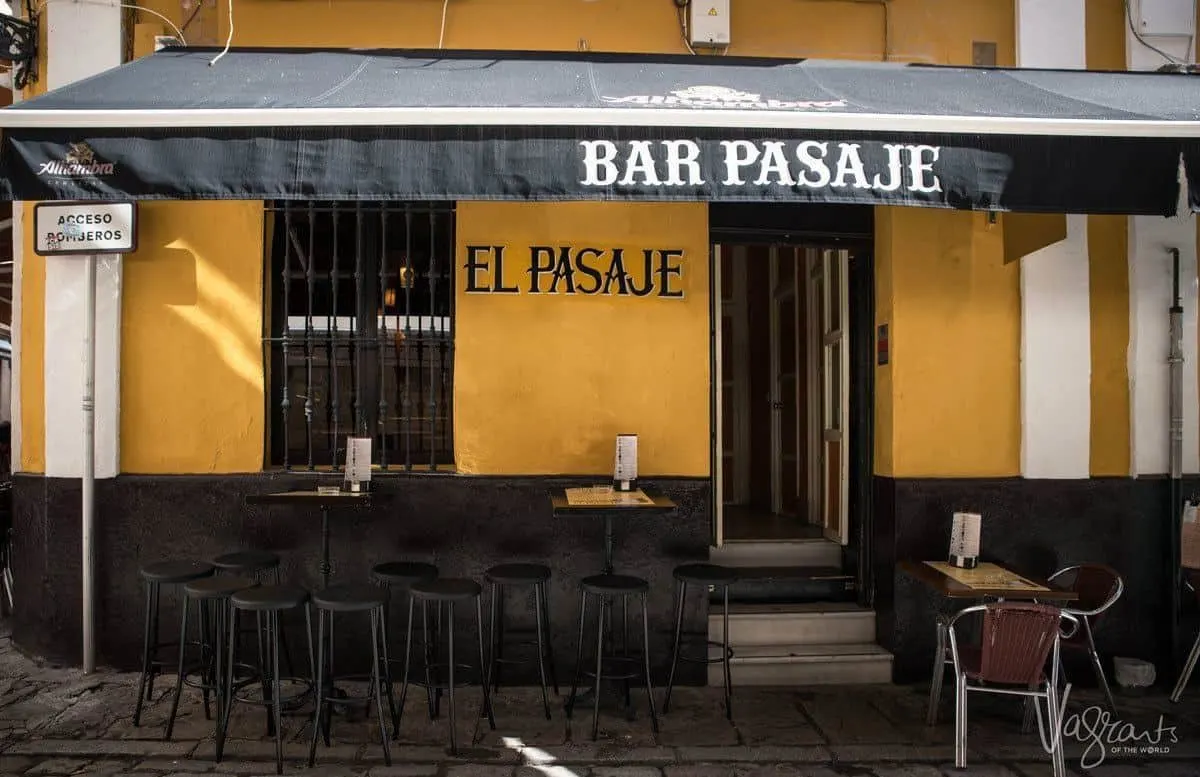
Many bars and bodegas will have one or two speciality dishes which is perfect for moving from one tapas bar to the next, sampling something new and tasty at each.
From patatas bravas (spicy potatoes), queso manchego, mouth-watering Jamon Iberico, chipirones (fried baby squid), pulpo croquettes (octopus) to prawns with garlic, there is so much to taste in Seville.
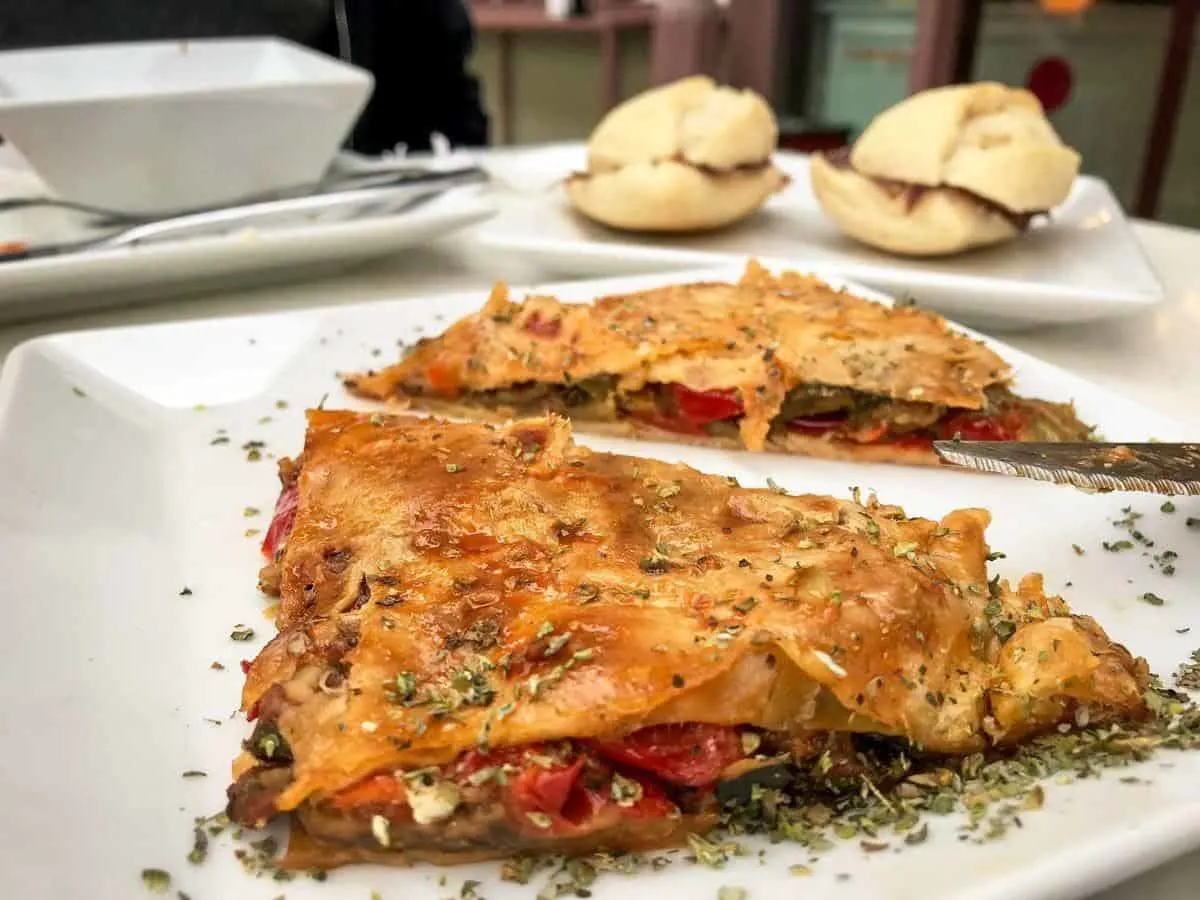
Take a Tapas Food Tour
Tapas tours by bike, tapas walking tours, tapas cooking classes, even a segway and tapas tour. There are so many fabulous tapas food tours available in Seville; it’s a great way to try some of the best Spanish food.
Eat and drink your way through Seville with a local guide who will show you the best tapas bars in town and share the traditions and history of this very Spanish dish.
Find a list of excellent tapas food tours here starting at as little as €30 pp, including guide, food and drink.
Market Dining
Market dining in Seville is a great way to start navigating Spain’s incredible culinary heritage and start to get the hang of Spanish food from tapas to pintxos, raciones and montaditos.
Mercado Lonja del Barranco
The Lonja del Barranco, a former fish market, owes its elegant design to Gustav Eiffel. Built in 1883, the beautiful steel and glass structure was considered the last word on modernity, cutting edge for its time.
In a nod to Eiffel’s gorgeous design and fresh take on public buildings, the wrought iron and glass riverside marketplace has been repurposed into one of Seville’s and Andalusia’s largest gastronomic spaces.
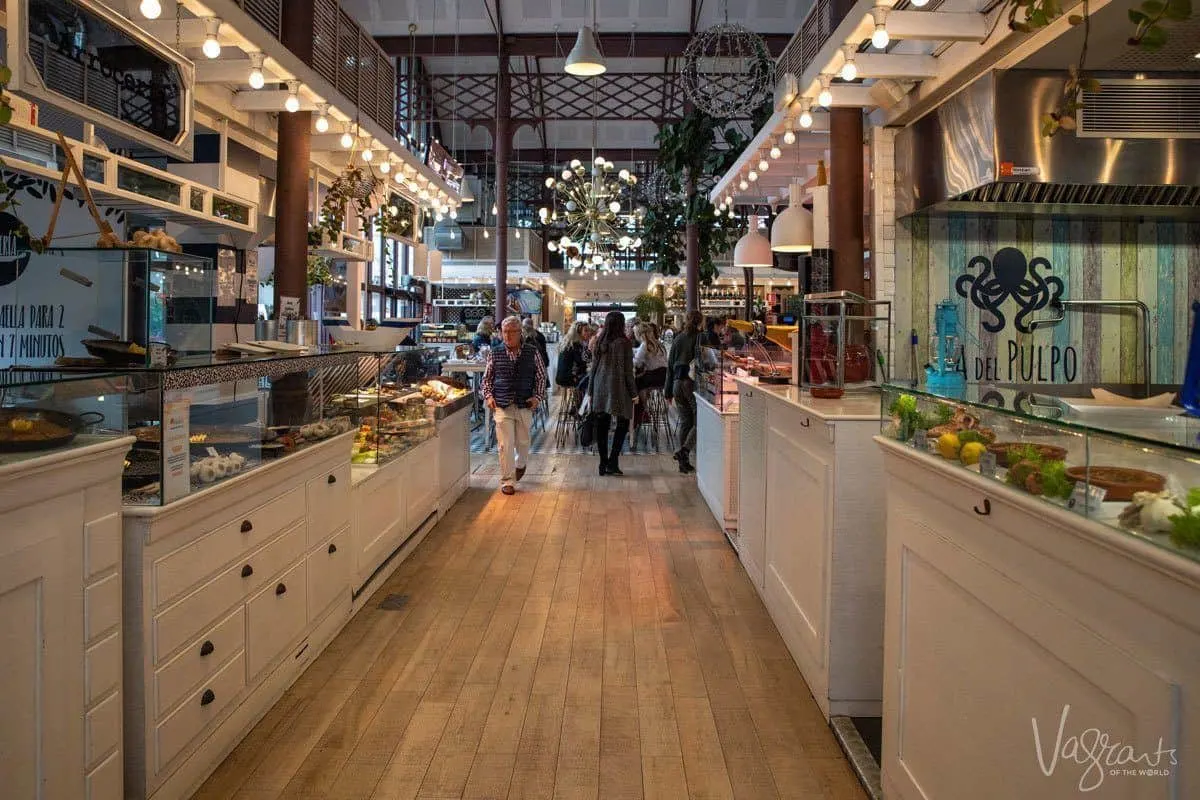
Twenty market stalls offering both traditional and modern Spanish cuisine – the best local Jamon Iberico (cured ham), typical paella, fresh seafood cooked to order, hand-made croquettes, a variety of modern and traditional tapas, and local Sevillano beer and wine.
Graze your way through the many tastes of Seville in the bright and beautiful marketplace.
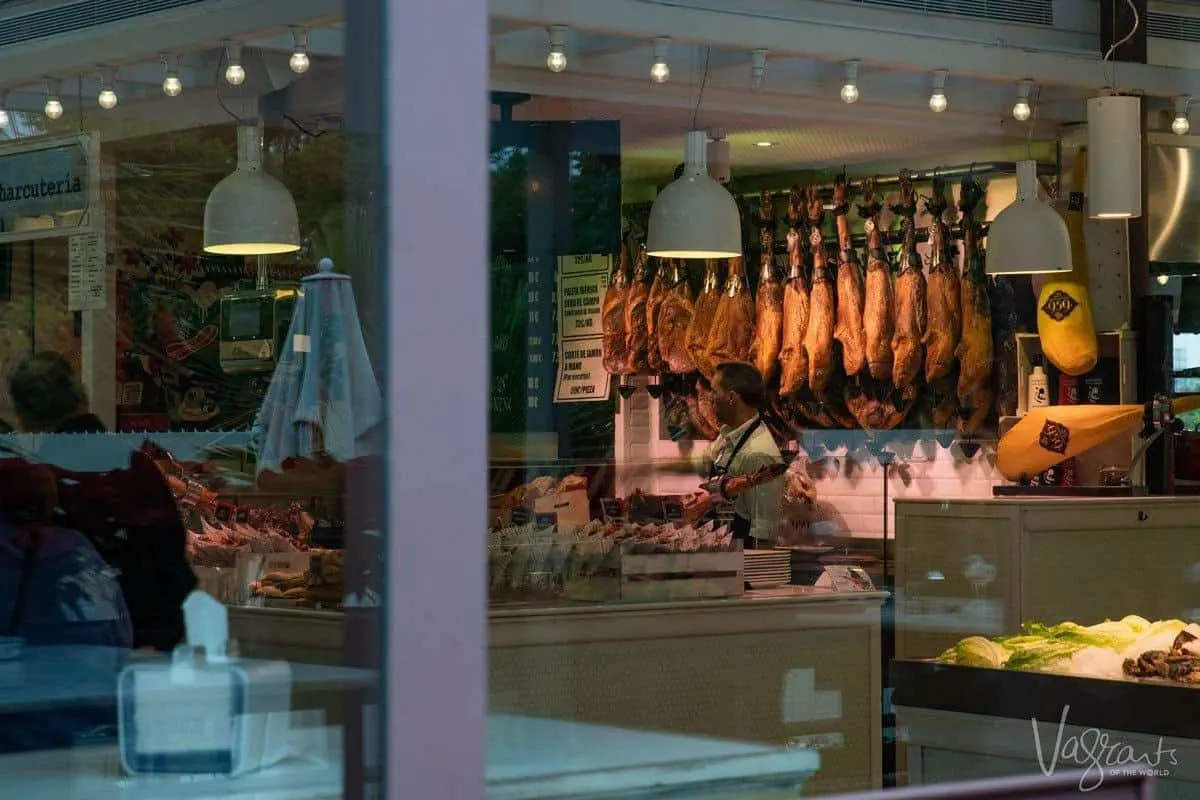
Outside the Mercado, you can have a drink and listen to music at the Terraza Sojo bar on the banks of the Guadalquivir River. The carefully designed all-weather terrace is excellent for any time of year.
Cost: Prices range from a few euros for a tapas plate to €18 for a large seafood portion. A small beer is approx. €1.30.
Opening Hours: Sunday to Thursday: 10.00 a.m. to Midnight | Friday & Saturday: 10.00 a.m. to 2.00 a.m.
Lonja de Feria Food Market
A stone’s throw from the popular Alameda de Hercules is the vibrant food market on Calle Feria –Mercado de Feria, Seville’s oldest market. Head to the far end of the 18th-century building, near the fish vendors; you’ll find a small assortment of tapas bars.
Starting from as little as €3, you can choose a tapas plate which includes a small beer. Fresh fish and squid, grilled or fried on the spot, and local Sevillian sausage is popular.
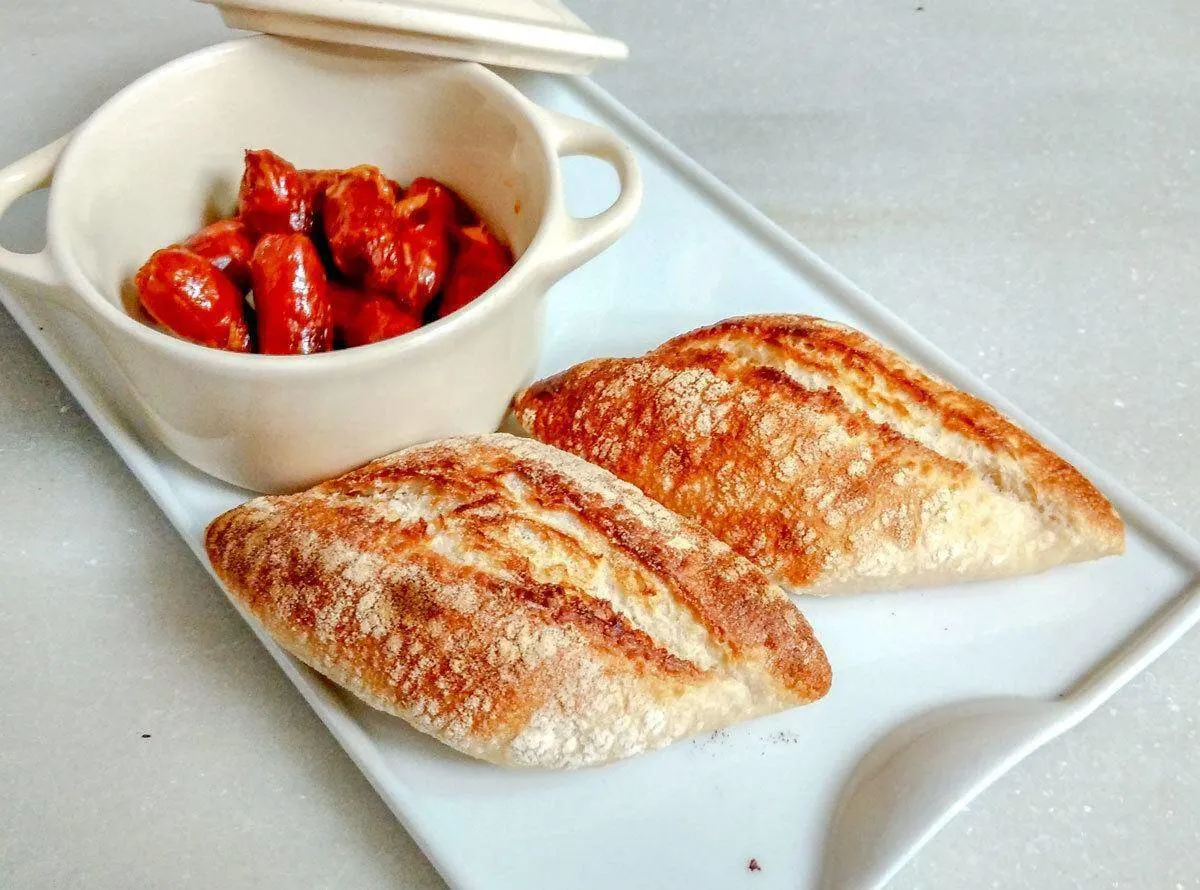
You’ll also find huge pans of paella and black squid ink rice, handmade croquettes and cold soups such as salmorejo, ajoblanco, and gazpacho.
The market comes alive in the evenings between Thursday and Sunday with live jazz or flamenco music and a buzz of locals enjoying the reasonably priced tapas and a drink outside in the adjoining Plaza Calderón de la Barca.
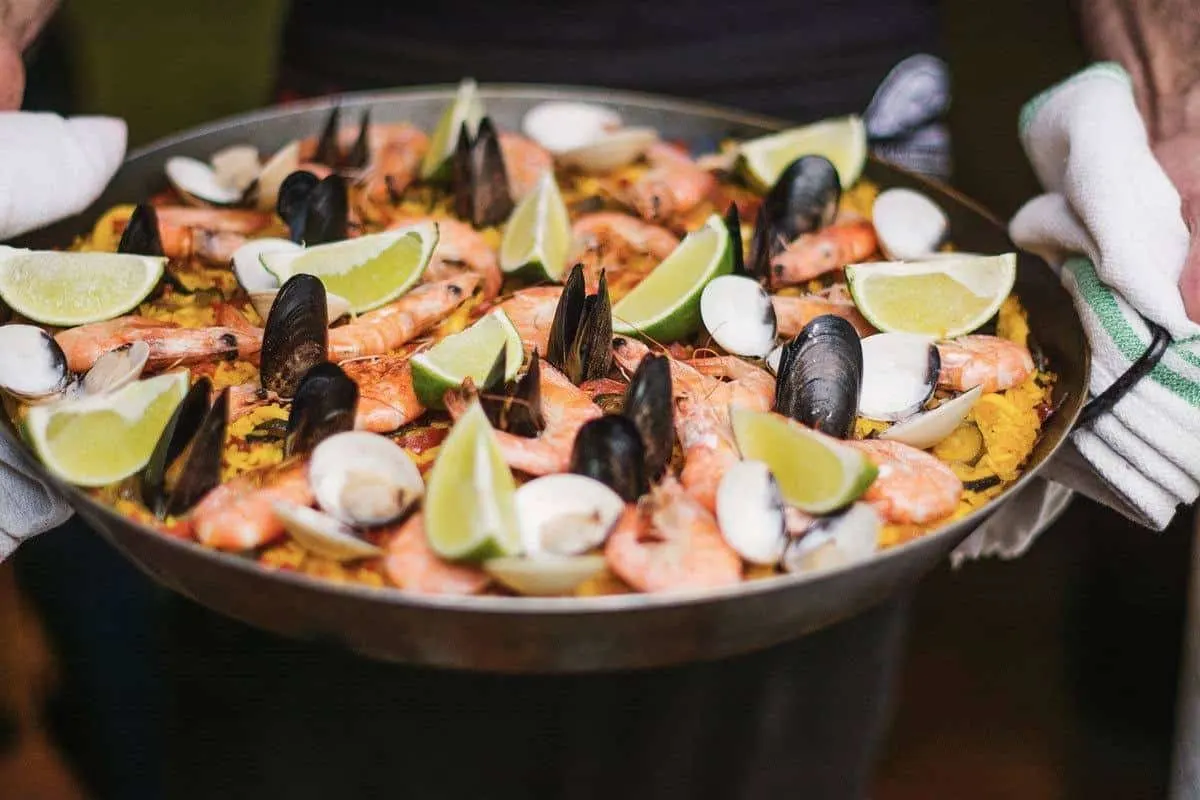
Lonja de Feria is the ideal place to taste the specialities of Sevillian cuisine. After all, there is nothing better than enjoying fresh fish tapas with a crisp, cold beer.
Cost: Tapas plates start as little as €3 or €3.50 with a small beer.
Opening Hours: Tuesday to Sunday: 1.00 p.m. to 11.30 p.m. | Monday: Closed
Triana Market
We mentioned earlier, Triana is one of Seville’s most colourful and exciting neighbourhoods to explore. The same goes for the Triana Market. Not just interesting for its location and local vibe, Triana Market is a great place to eat.
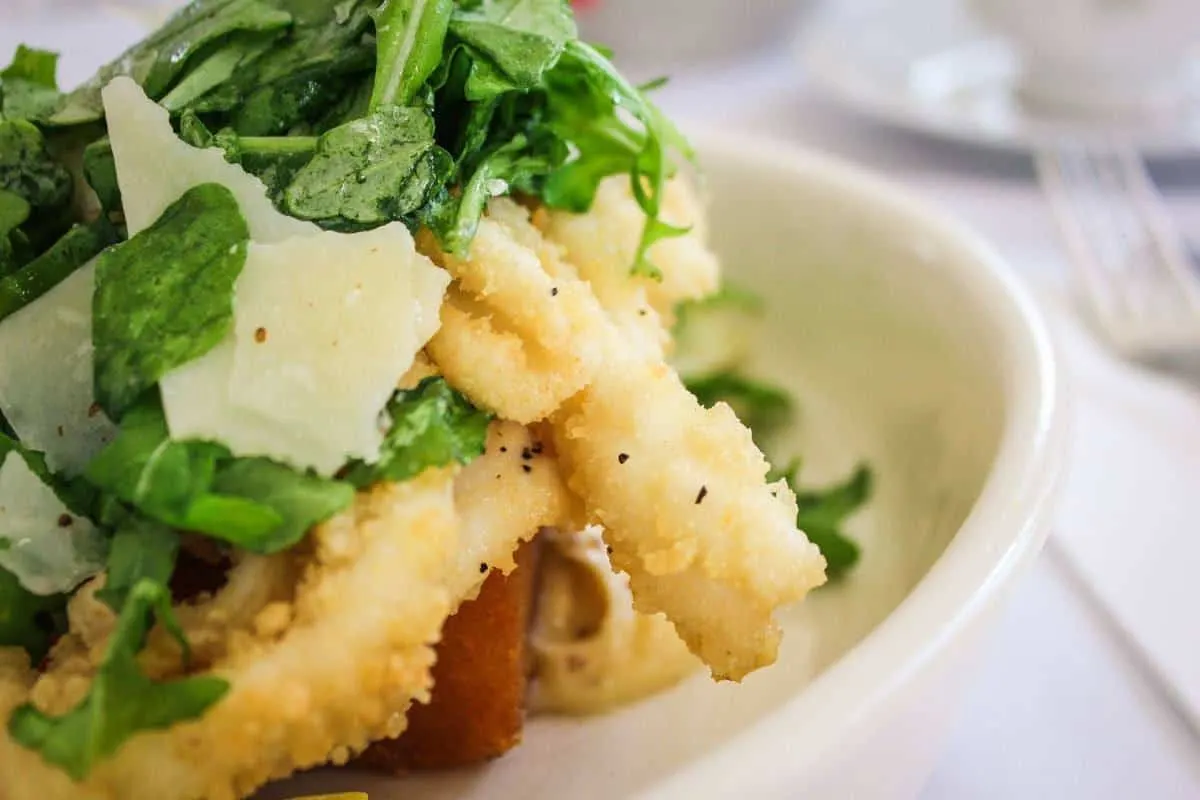
In addition to fresh produce, you’ll find a good selection of modern wine bars, microbreweries, tapas bars and eateries. There is often live music and even a cooking school.
Opening Hours
Shops: Monday to Saturday: 9:00 a.m. to 3:00 p.m.
Restaurants & Leisure Areas
- Monday to Saturday : 10: 00 AM to Midnight
- Sundays and Holidays : 12: 00 PM to 5: 00 PM
El Rinconcillo The Oldest Barin Seville
With more than four centuries of history, the oldest bar in Seville, El Rinconcillo, was founded in 1670. Even though it has had many write-ups in popular guidebooks, most tourists to Seville won’t bother to wander far enough from the centre to find it. Especially day-trippers.
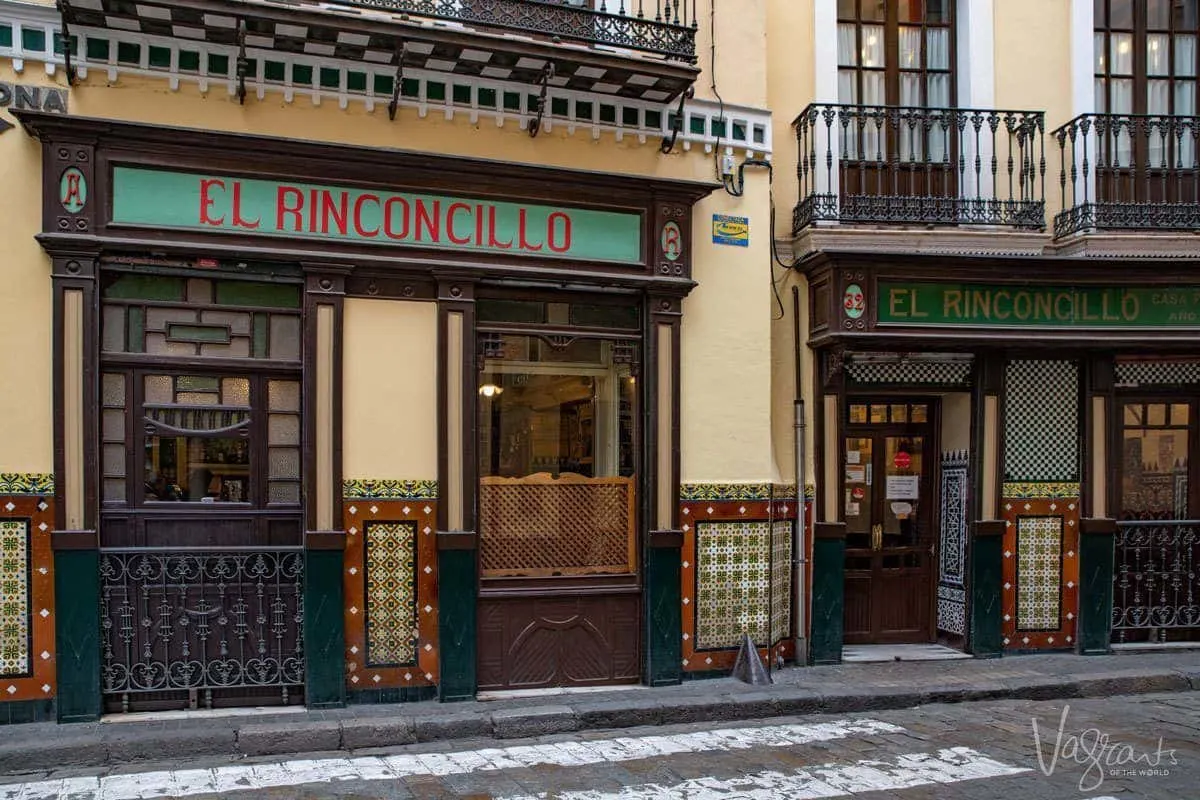
Popular with locals, and visitors who make the effort, don’t be surprised if you see a big name celebrity or two propping up the bar at El Rinconcillo. (Harrison Ford can attest to the quality of the traditional spinach and chickpeas tapas the bar is known for).
Celebrities aside, tradition is still at the core of El Rinconcillo, and refreshingly, prices have not increased with the bar’s reputation. Since 1858, El Rinconcillo has been handed down through the same family with two brothers still running it the traditional way.
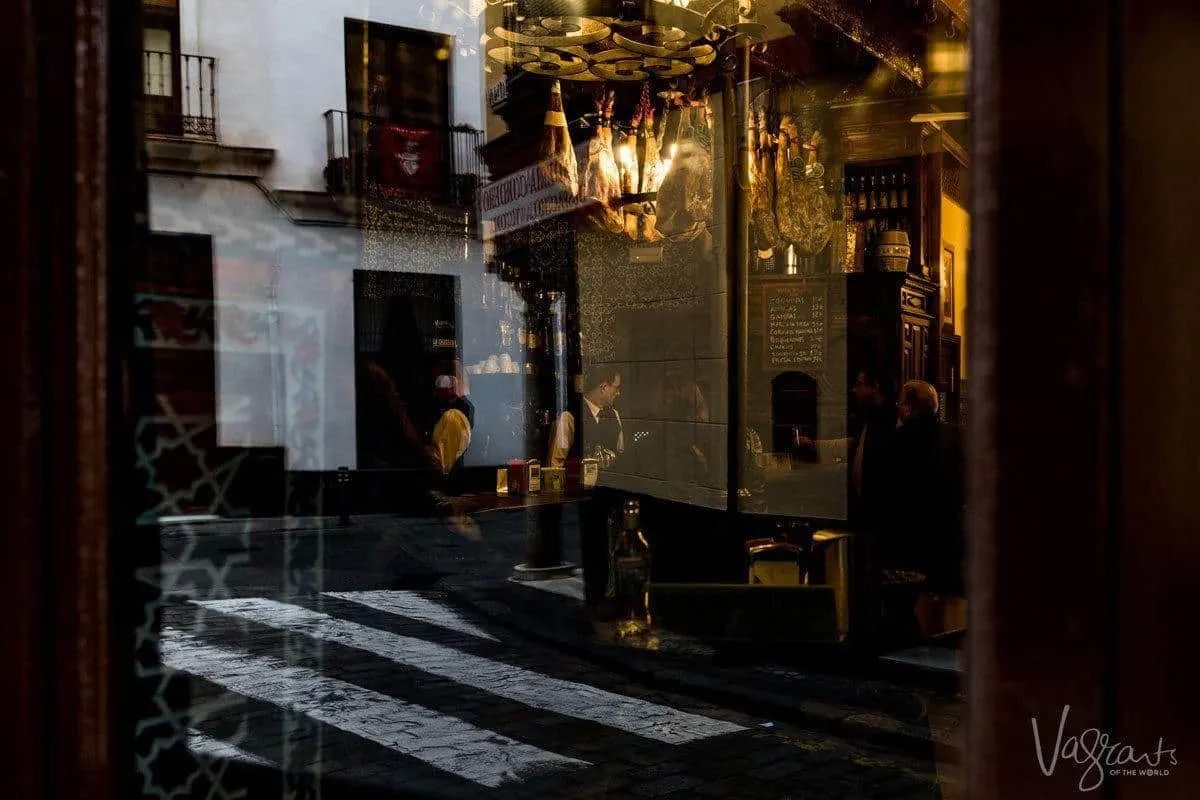
The original interior has been magnificently preserved. Waiters and bartenders still dress in black waistcoats and crisp white shirts, and, as tradition states, you will not find any women working the front of the house.
Make an effort to wander off to this quieter barrio, and you’ll be rewarded with an essential piece of Seville’s culinary history.
El Rinconcillo now occupies the two adjoining buildings on the corner, one a former grocery store. Tapas are served at the bar on the corner, and next door offers restaurant dining.
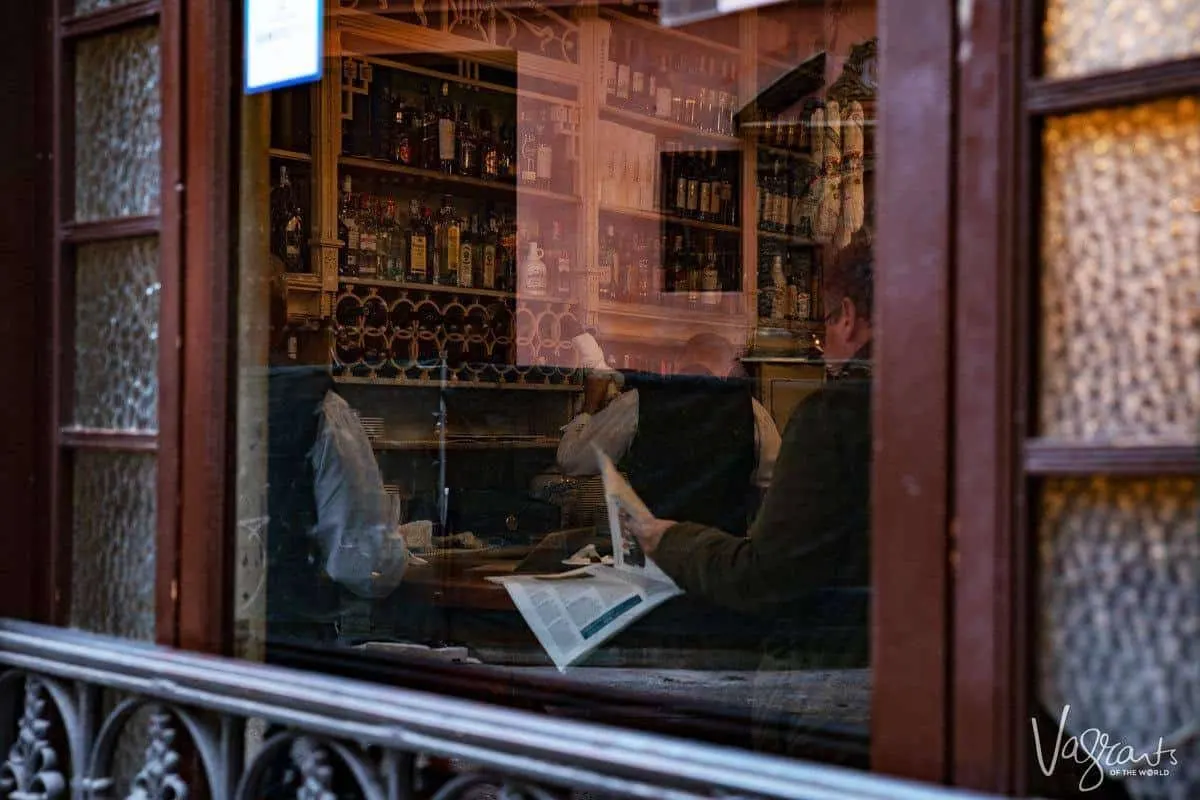
Cost: In the bar, expect around €1.20 for a small beer with tapas ranging from €2–€5. When you’re ready to leave, your tab will be written in chalk on the bar, which is the custom in many of Seville’s older establishments.
Opening Hours: Open Every Day: 1.00 p.m. to 1.30 a.m. |El Rinconcillo is closed first two weeks of August.
The Secret Bar of Casa Moreno
It is at Seville’s oldest and best-loved ultramarinos (small specialist grocery store), where you will get a glimpse of local life in Seville.
Slide past walls of neatly staked dry foods and produce in the tiny shop of Casa Moreno, and tucked away at the back of the shop, you will find a small corridor style bar full of charming clutter and memorabilia. A bar we doubt many tourists would ever discover.
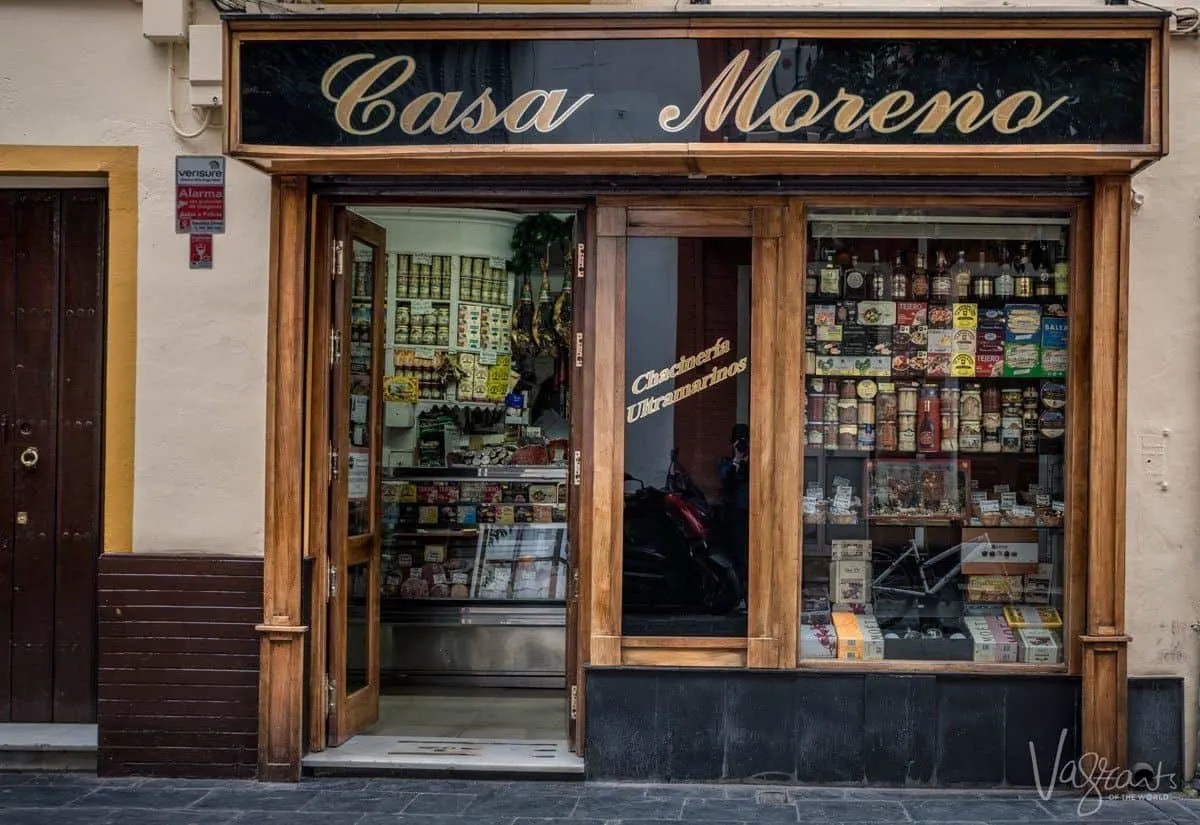
This style of ultramarinos or abacería is becoming fashionable again in Seville. Still, Casa Moreno is where a trade of loyal local customers pop in each day as they always have, for a quick drink and a simple snack.
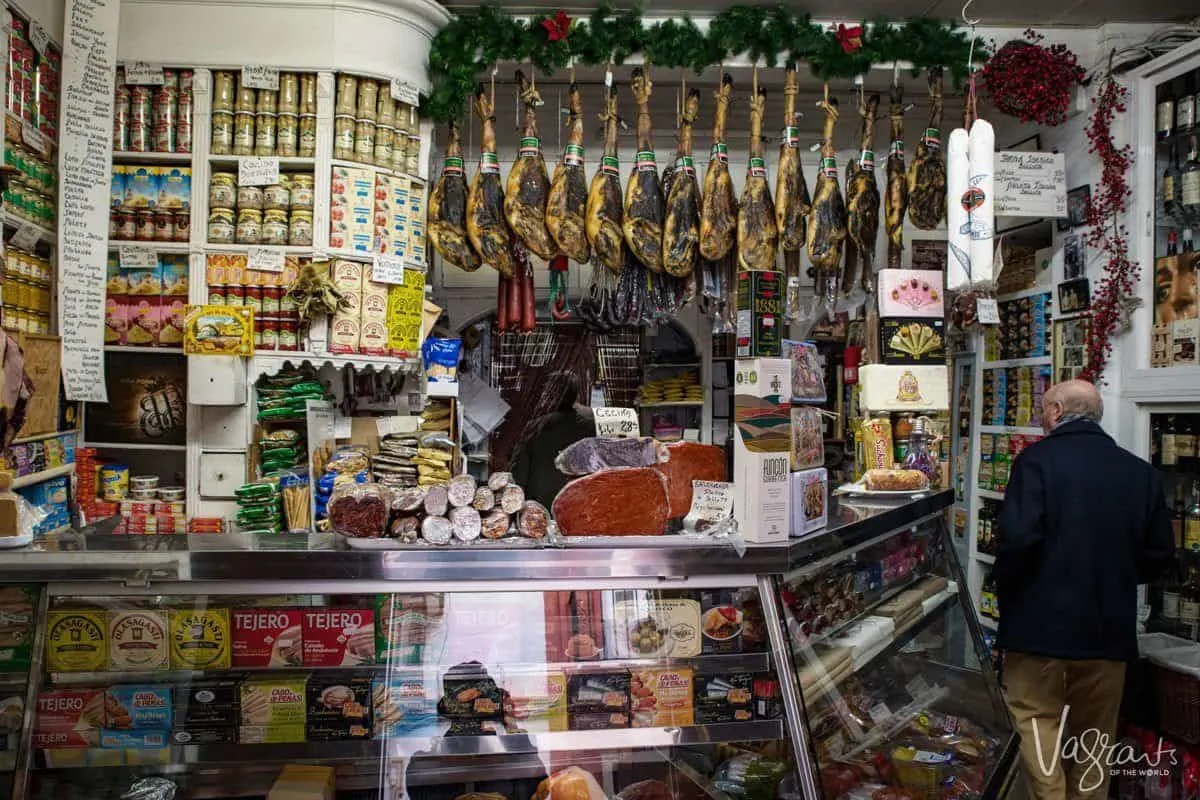
Casa Morena has no kitchen; the menu is simple but tasty tapas plates and montaditos (small sandwiches) made from the products you can buy in the shop. It is in the simplicity of the menu you can appreciate the quality of the products sold there.
At lunchtime, you will find a few prepared meals such as tortillas or stews. Other than that, it’s an excellent place for breakfast, a light snack, or an early evening tapeo. They also have a very impressive wine list by the glass.

Cost: Expect to pay as little as €1.20 for a coffee and around €2.00 for a montadito. Raciones (portions) range from €8.00 – €18.00.
Opening Hours:
- Monday to Friday: 8.30 AM – 3.30 PM | 7.00 PM – 10.30 PM
- Saturday: 10.30 AM – 3.30 PM
- Sunday: Closed
- Closed in August
What to Do in Seville at Night
From tapas crawls to flamenco shows, there is so much to do in Seville at night. You’ll never be short of a way to fill your evening, but if you are short on time and want to experience some of Seville’s best views and vibrant nightlife, here are a few tips.
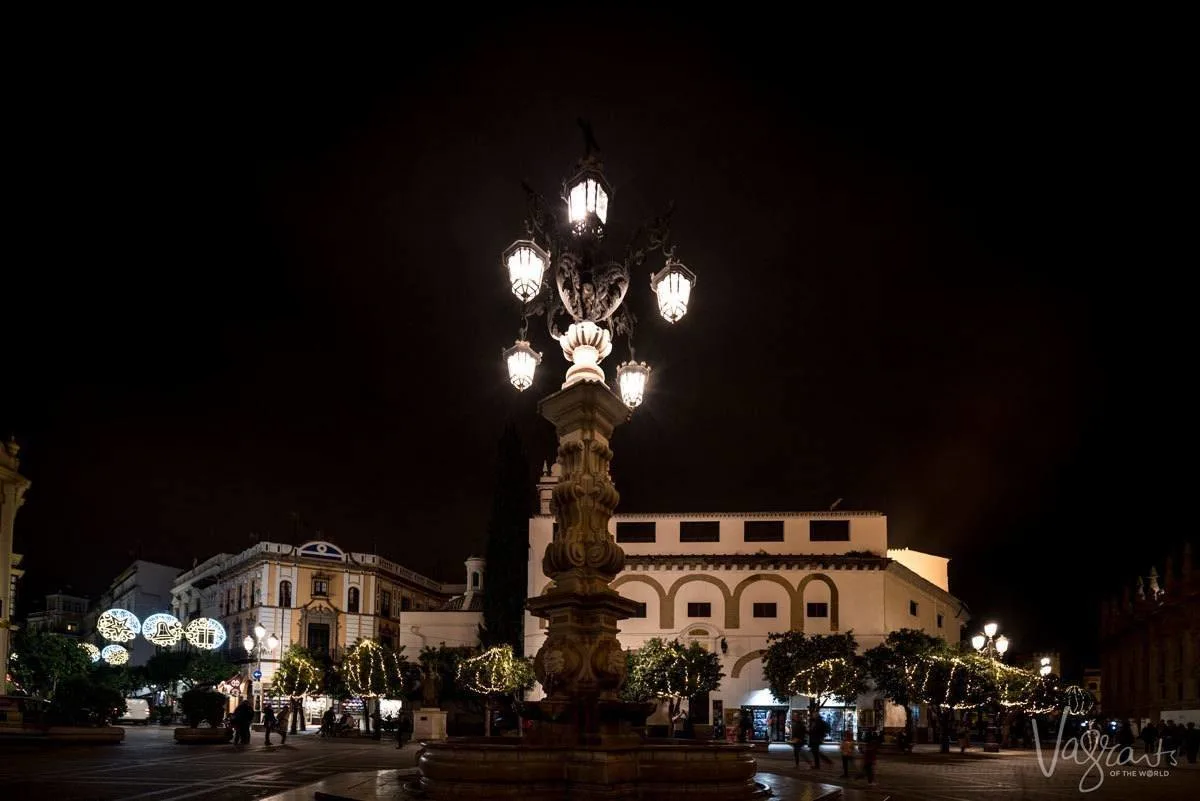
Rooftop Cocktails With a Cathedral View
Once the sun starts to set on Seville, head to one of the cities rooftop bars for a cocktail and view of the beautiful Saville Cathedral at night.
- Hotel Doña Maria, an elegant 14th-century palace turned hotel, has the Terraza Hotel Doña María, the first rooftop bar in Seville.
- Eme Cathedral Hotel, a modern design hotel, also has a rooftop bar with sweeping views over the city and cathedral.
Both bars are suited to all seasons as the rooftop terraces are heated in winter.
With the view and stunning location comes a slightly inflated cost, so expect to pay a little more than Seville’s norm. Although, the popularity of the bars show the price is not unjustified. Expect €9-13 for cocktails.
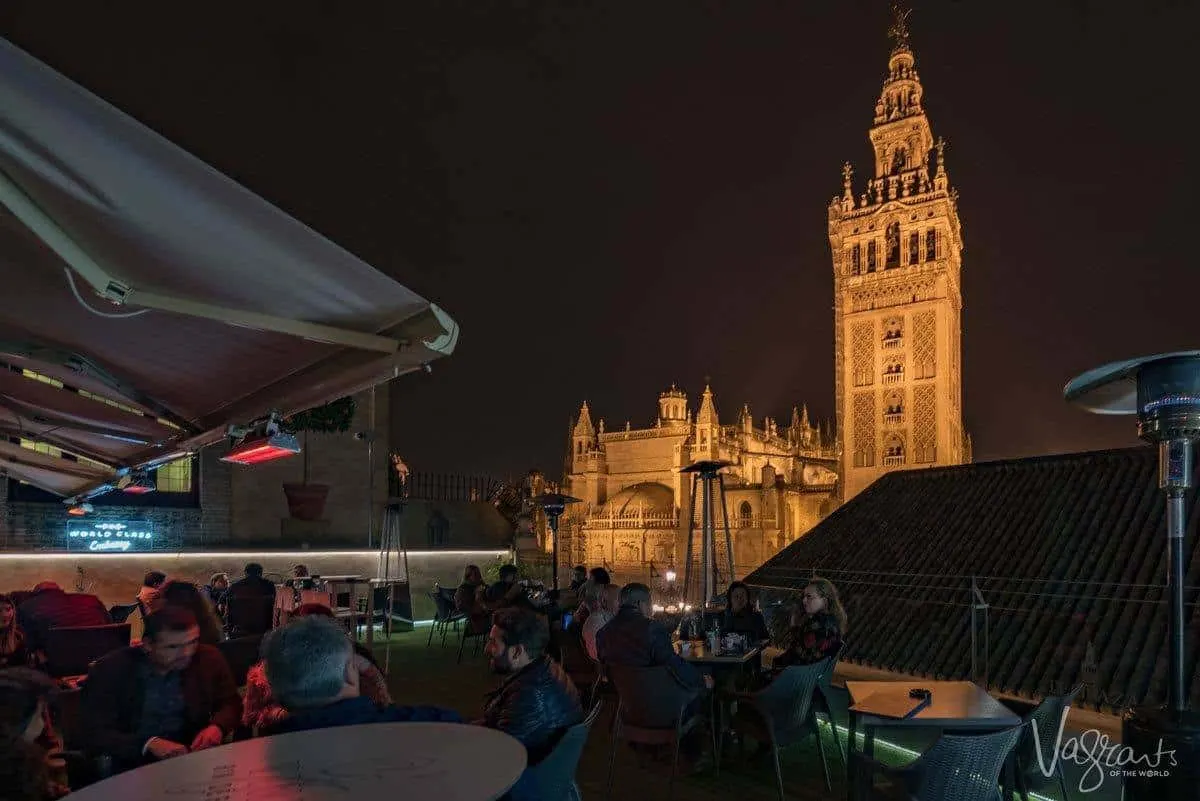
Calle Betis Triana
We keep coming back to Triana, and for a good reason. Calle Betis in Triana is touted as one of the most beautiful streets in Seville, thanks to its views of the Guadalquivir river and Seville city. It also boasts some of the most thriving and lively nightlife. The unique neighbourhood’s character means it has something to offer any time of day.
Be warned, though, Spaniards are not known for their early nights, so don’t expect the party to start early.
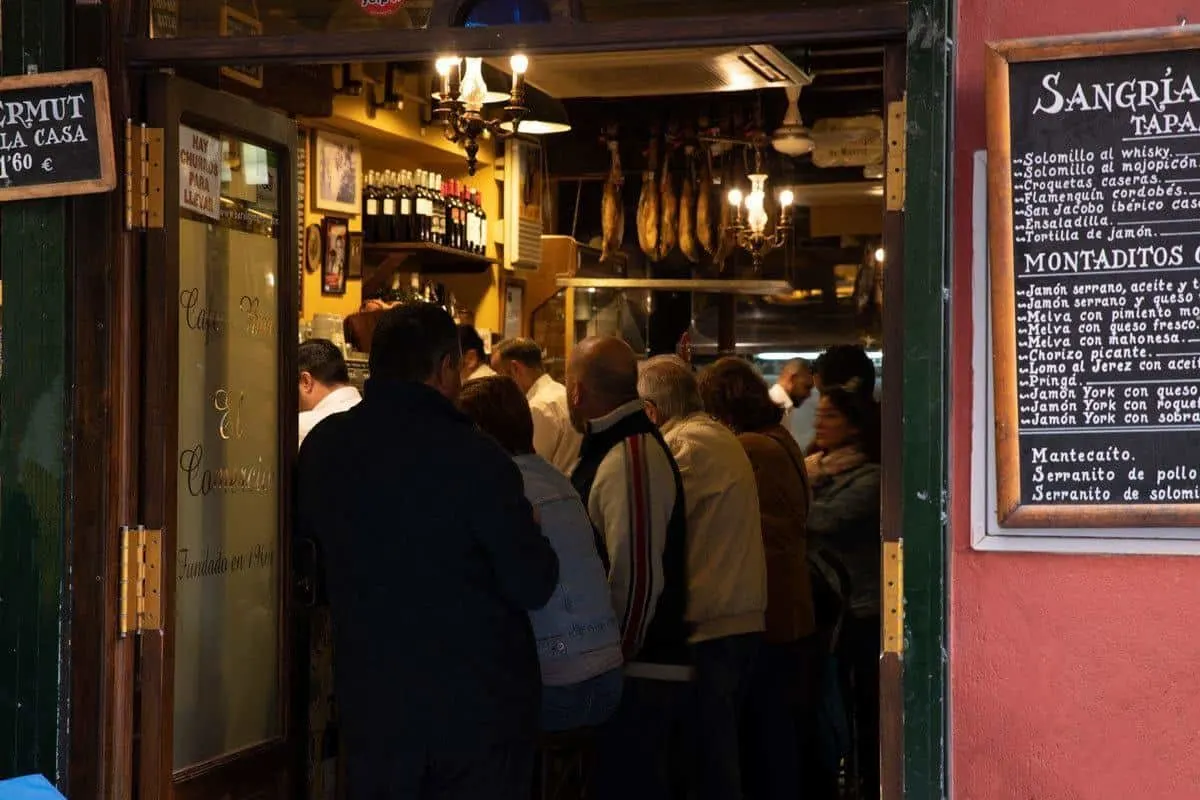
Alameda de Hercules
Alameda is considered one of the most famous and “coolest” entertainment areas in Seville. Alameda is often compared to London’s Soho or Barcelona’s El Raval for its edgy and creative vibe set amongst historic places, a big pedestrian street full of alternative bars, restaurants, and live music.
Alameda is where you will find outdoor artisan markets, hip bars and unique restaurants. A creative and multicultural area renowned for its nightlife, they say everything is possible in Alameda.
Related: 10 Safe Travel Tips to Put in Place Before You Go
Festivilles in Seville
Feria de Abril
The legendary fiesta of Feria de Abril (April Fair) is one of the most important events in Seville and one of the biggest fairs in Spain. The week-long party usually takes place two weeks after Easter.
Around 1,000 marquees are erected in the fairgrounds in Los Remedios, southwest of Seville. The week-long event starts with the lighting of thousands of lights at the fiesta site and finishes a week later with a big fireworks display.
Locals gather in the typical dress – brightly coloured flamenco dresses and short waistcoats and wide-brimmed hats for the gents. As well as classic amusement rides, the days are filled with events, music, eating and drinking and of course, dancing till dawn. See here for dates and information.
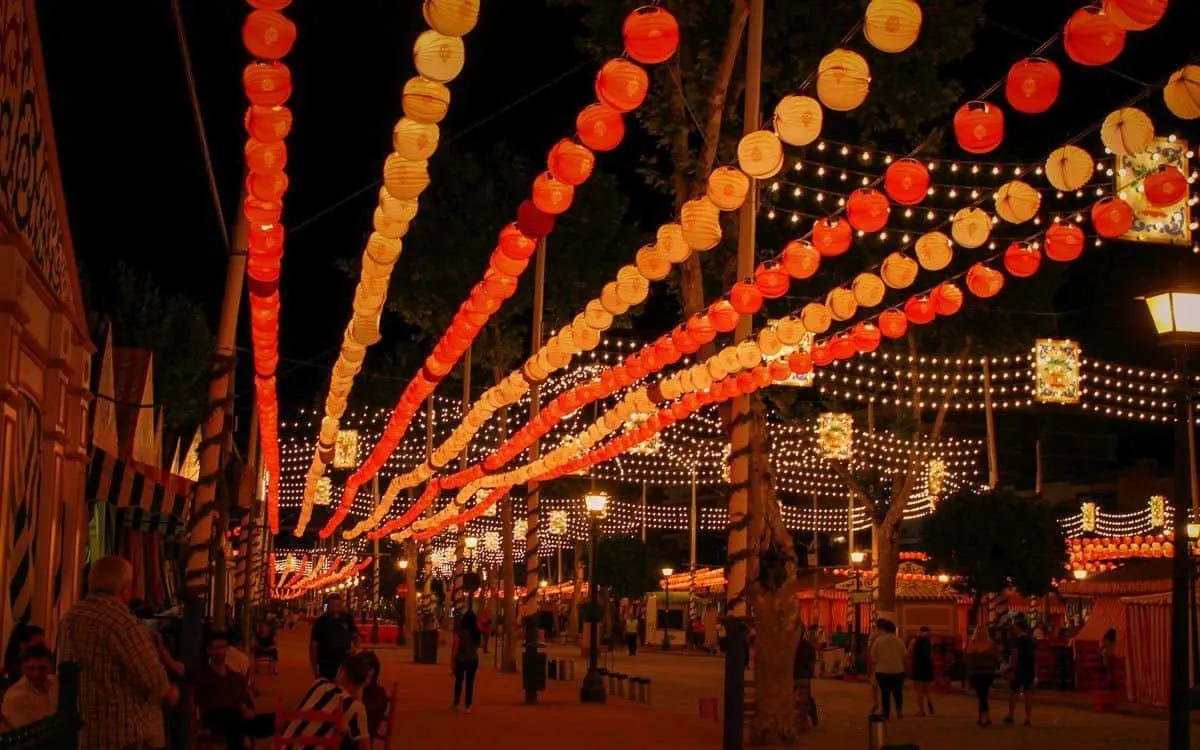
Semana Santa
The second most significant festival in Seville is Semana Santa. Seville’s holy week processions are said to be one of the most famous in Spain.
From Palm Sunday to Easter Sunday, brotherhoods from churches across the city parade through the streets wearing sandals, robes and eerie pointed hoods.
They carry large ornate floats of the weeping virgin and scenes of the Passion of Christ. Some of the enormous floats are over 300 years old, and processions can last up to 12 hours as they move through the city.
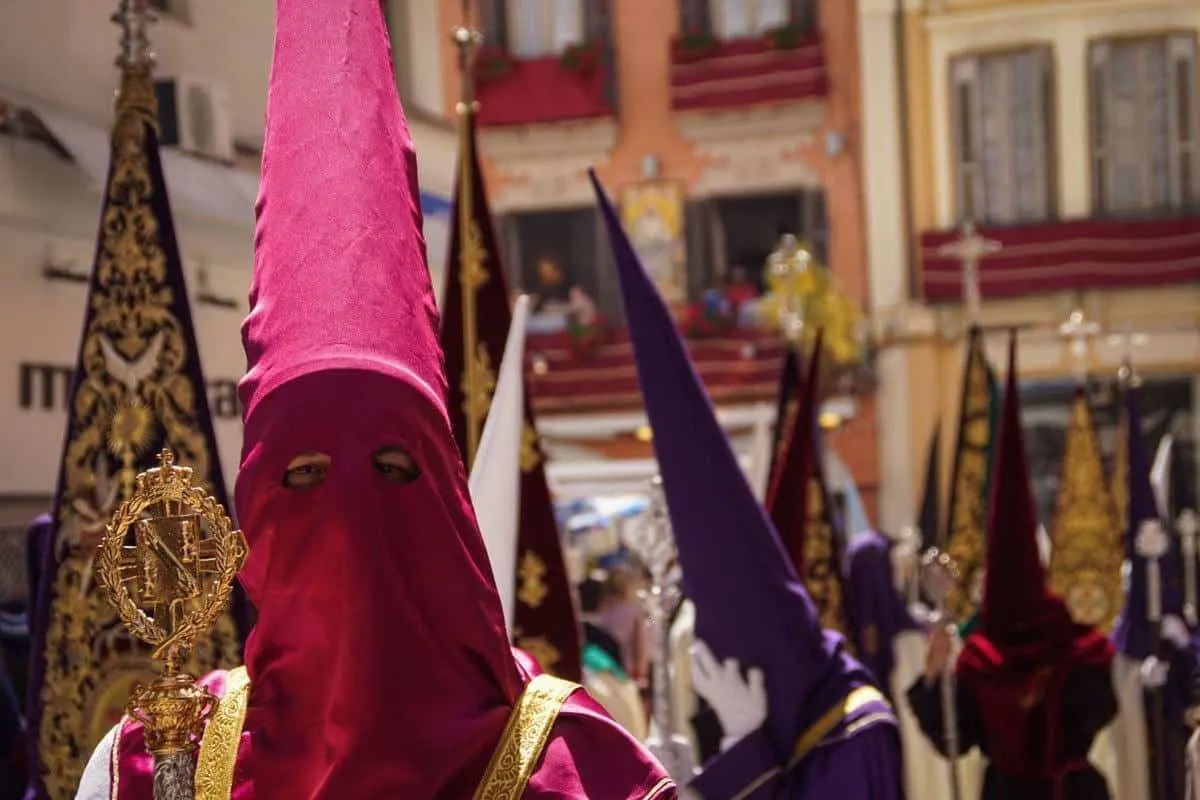
The Basilica of the Macarena holds one of the best-loved processions during Semana Santa. The church and the brotherhood of the Macarena has a devout local following, and the famous Weeping Virgin – Virgen de la Esperanza Macarena is an artwork in itself.
If you want to be in Seville for Semana Santa, make sure you have your accommodation booked in advance.
Take a Holy Week Tour of Seville
A fantastic way to experience one of the most fascinating times of year in Seville and Spain is with a guided tour.
Learn about the brotherhoods and their “pasos” on a walking tour led by a Cofrade, a member of the religious brotherhood, and an expert Seville guide. See the best parades of the day and get up close and behind the scenes views of the parades.
Seville Holy Week Tours
